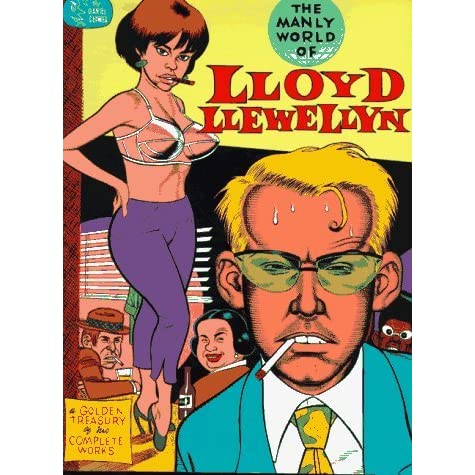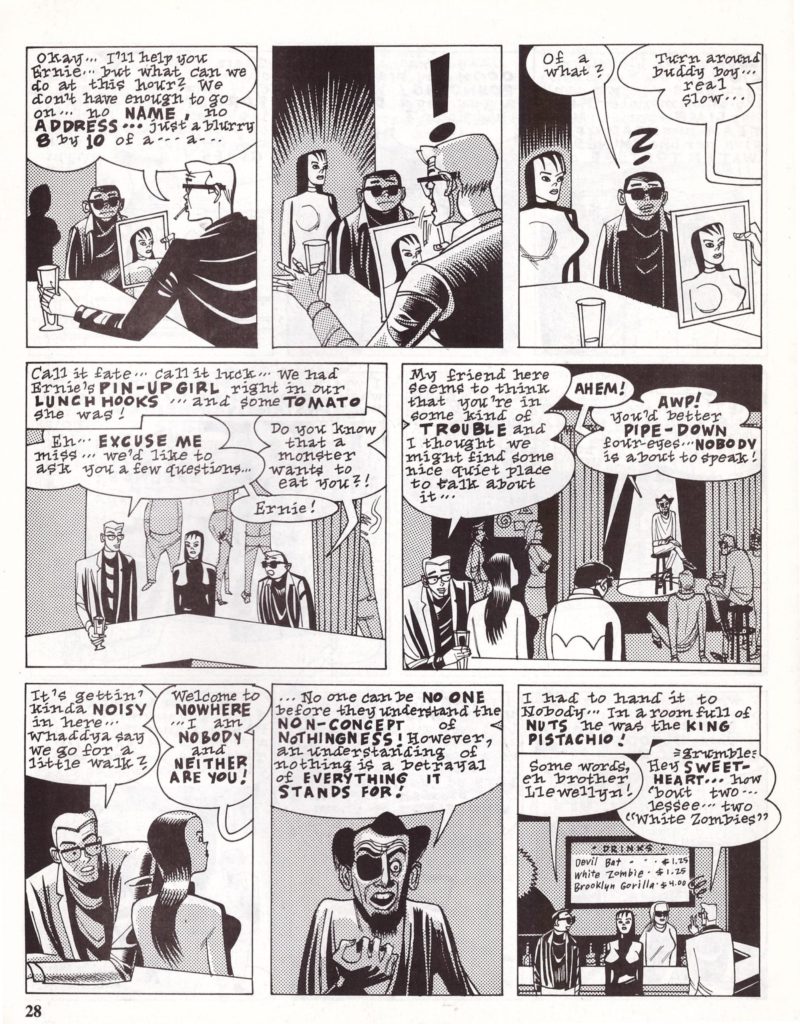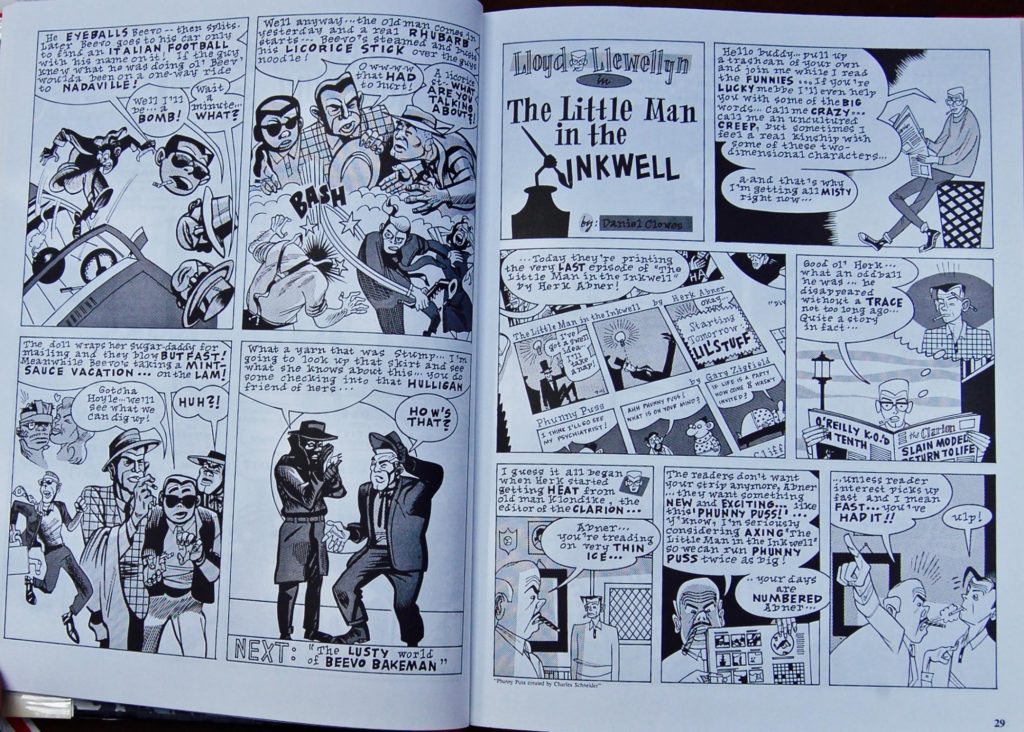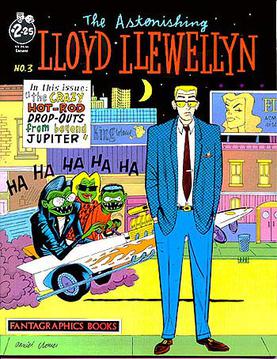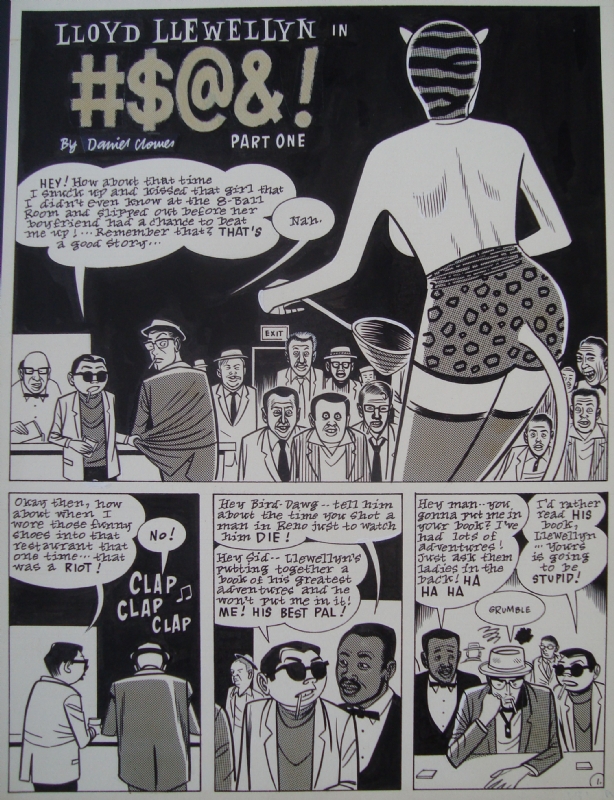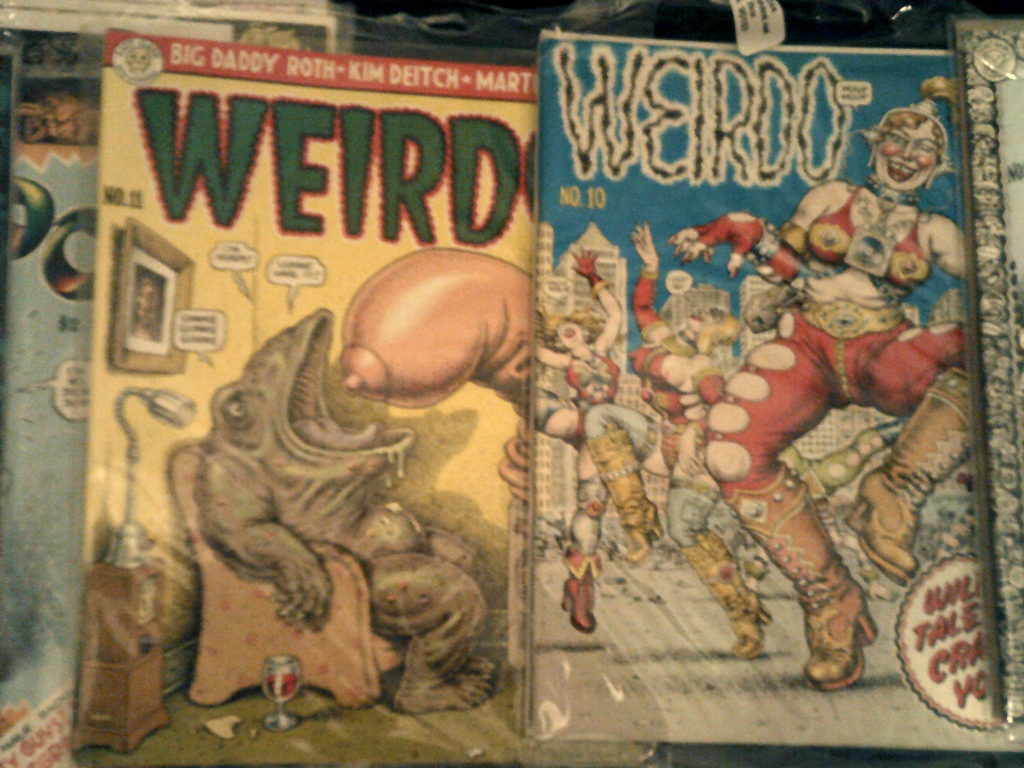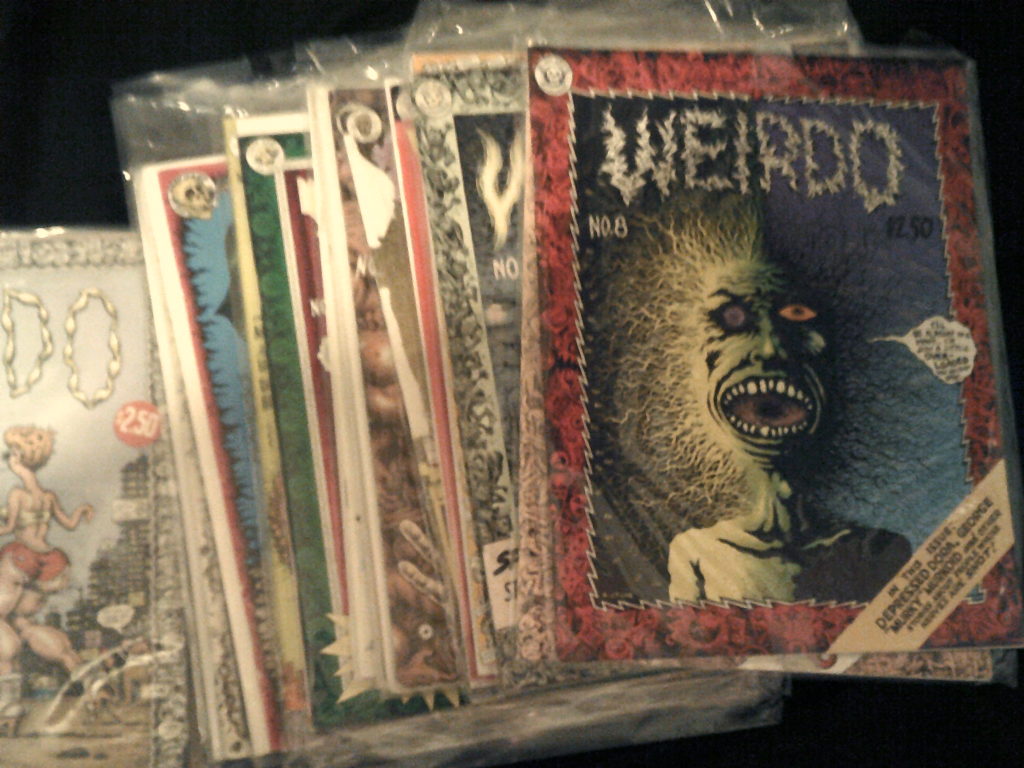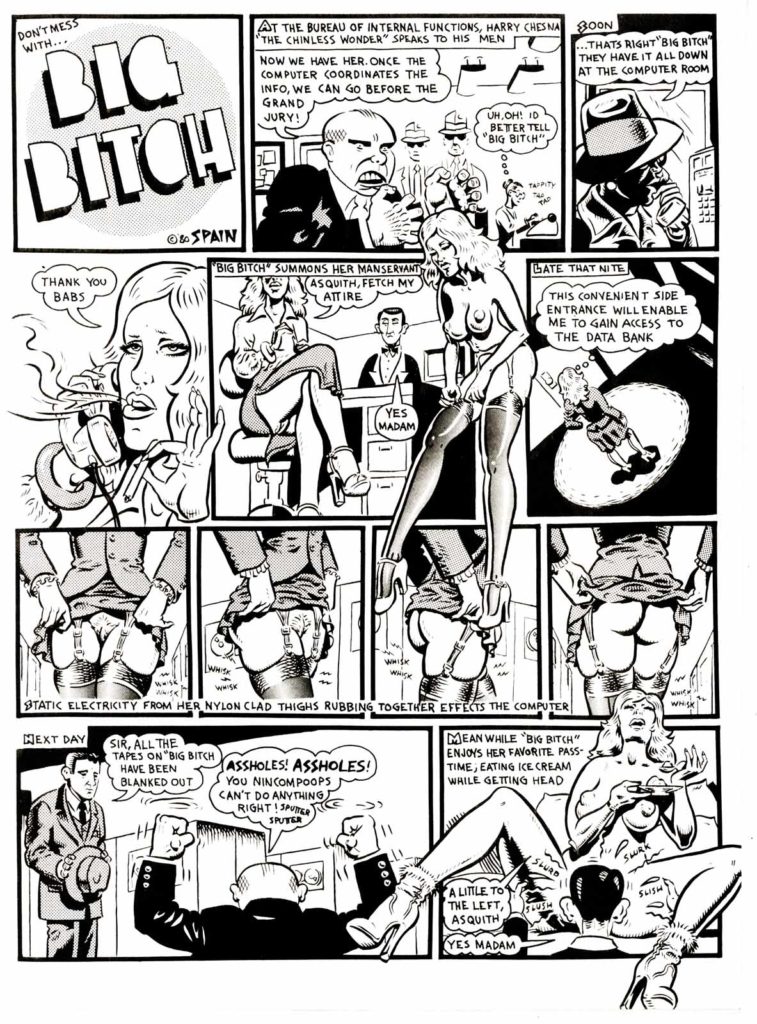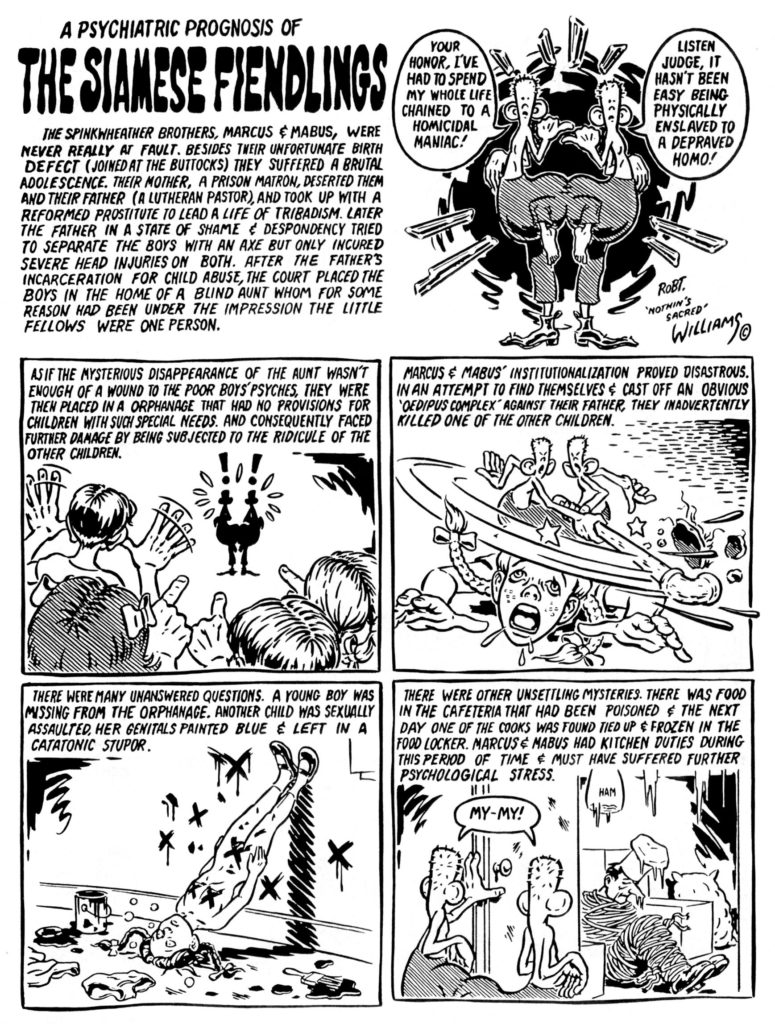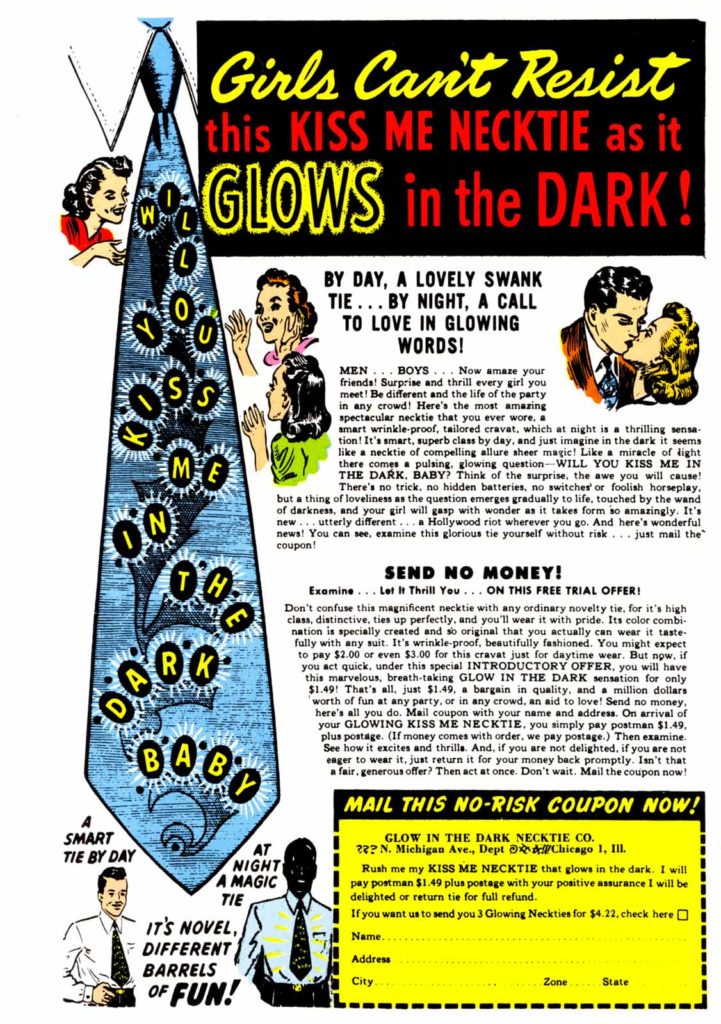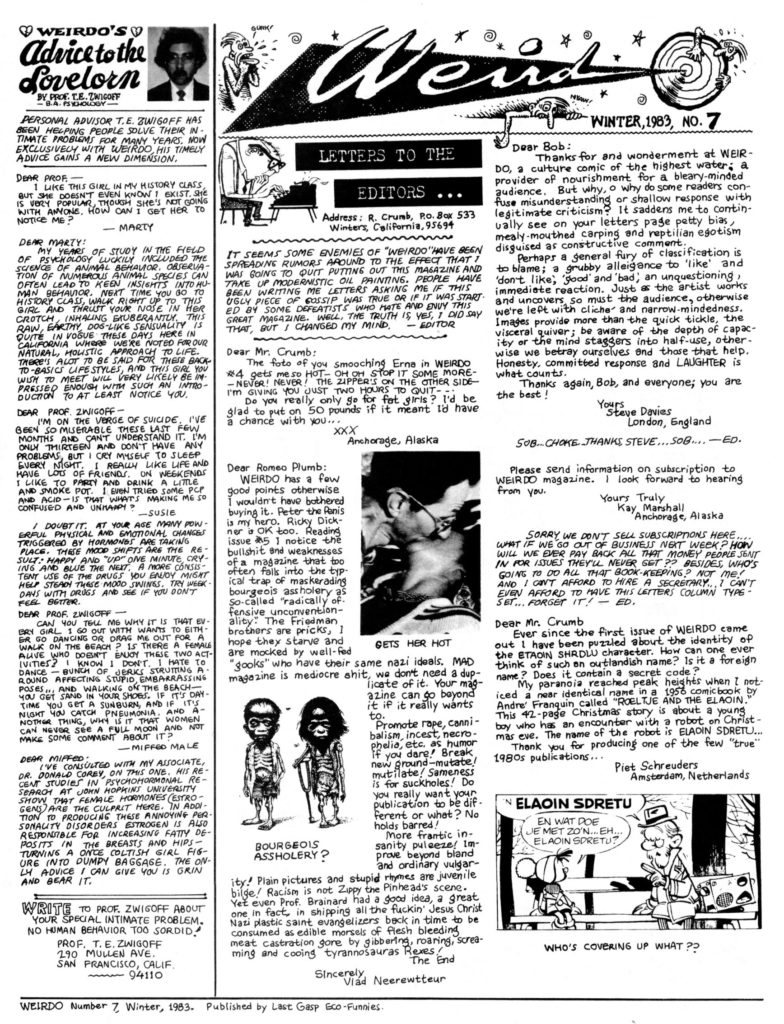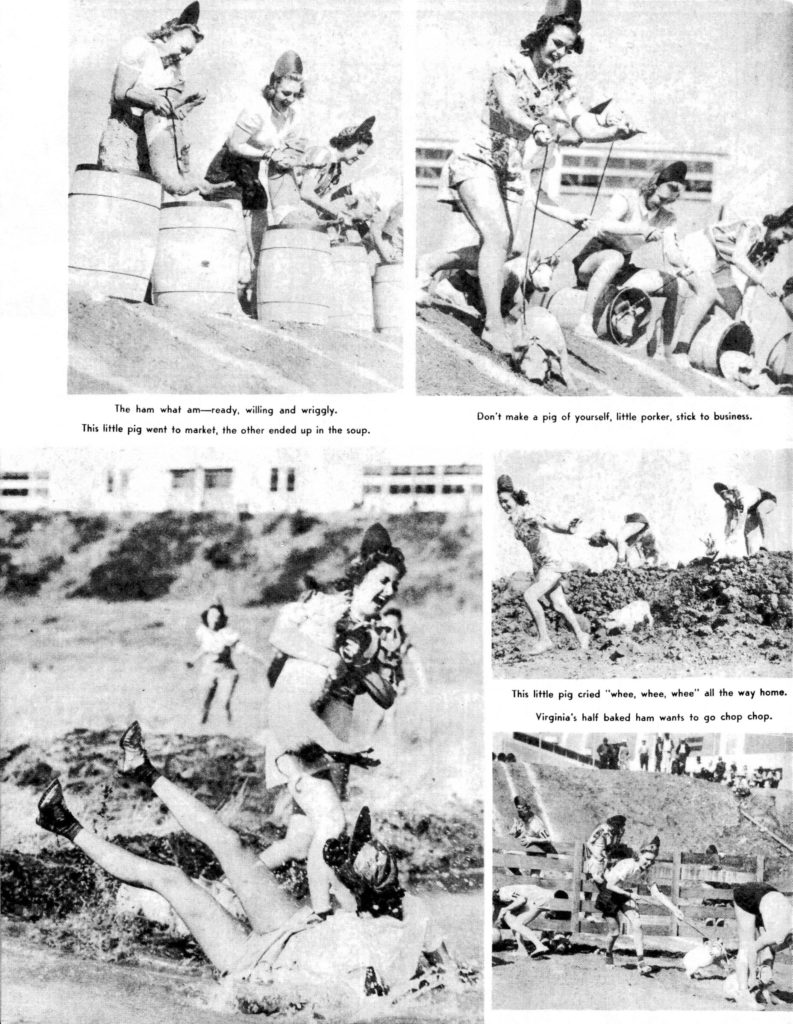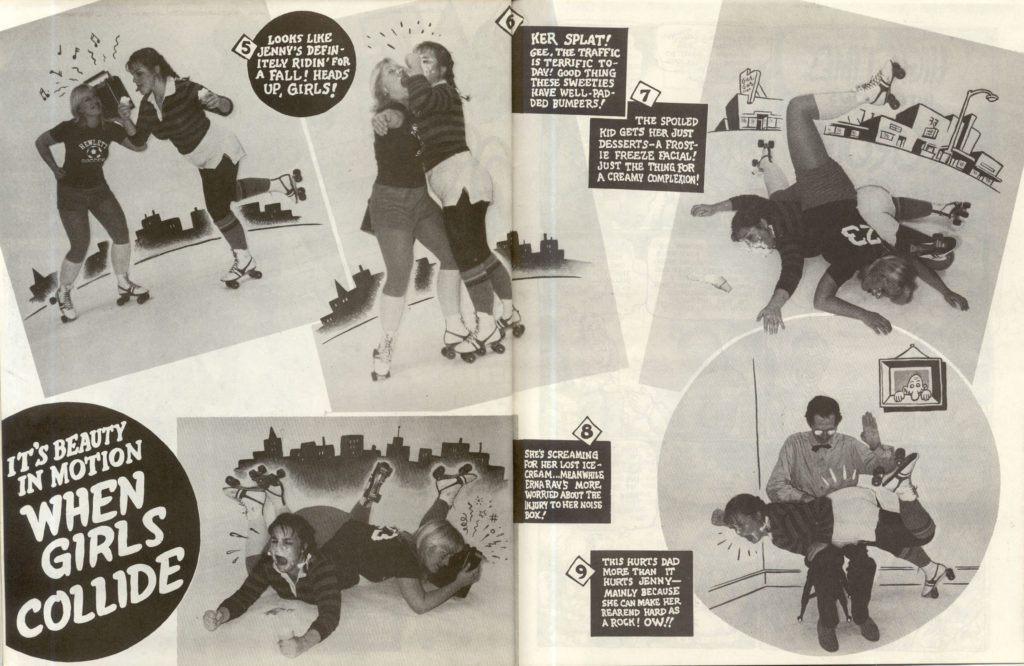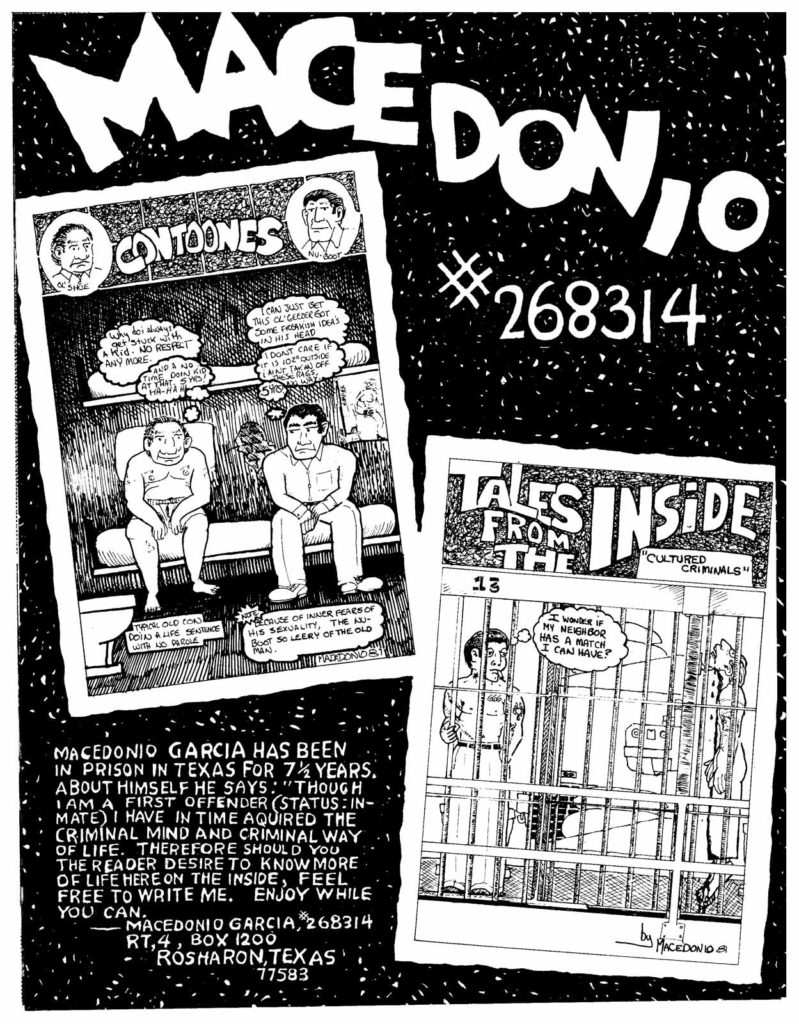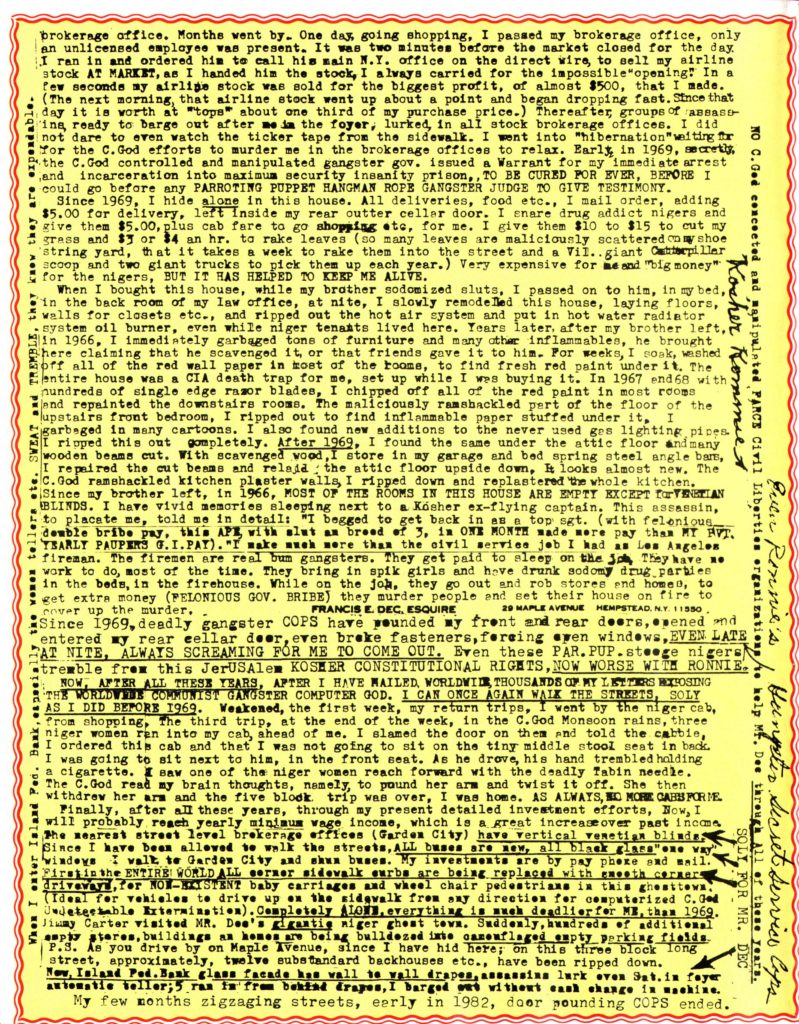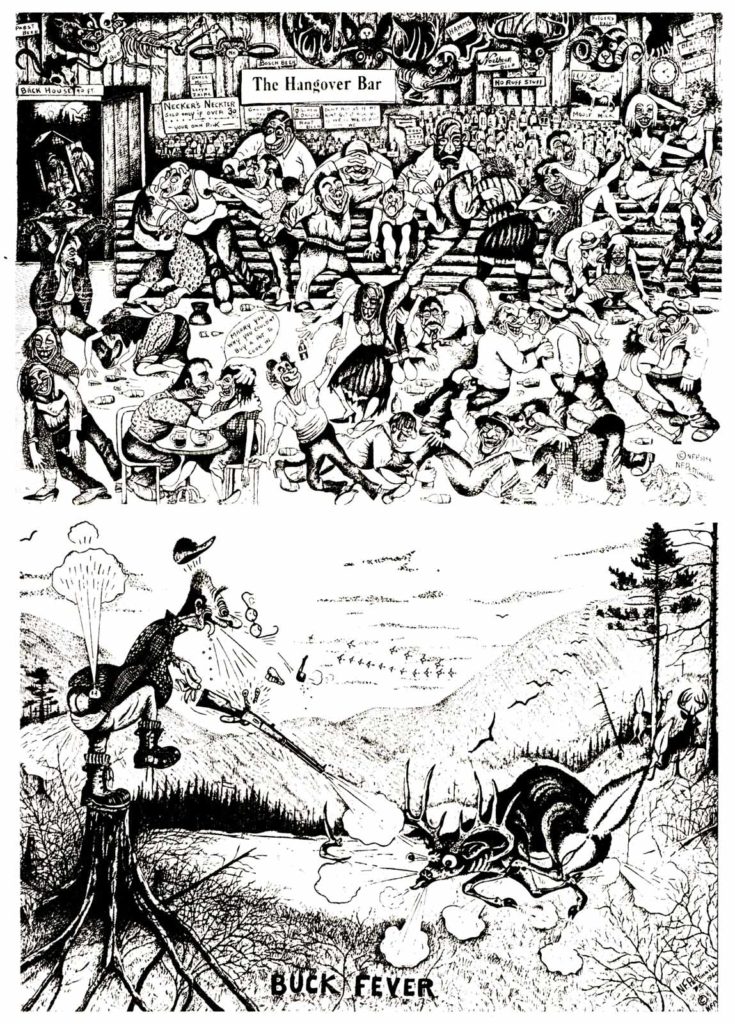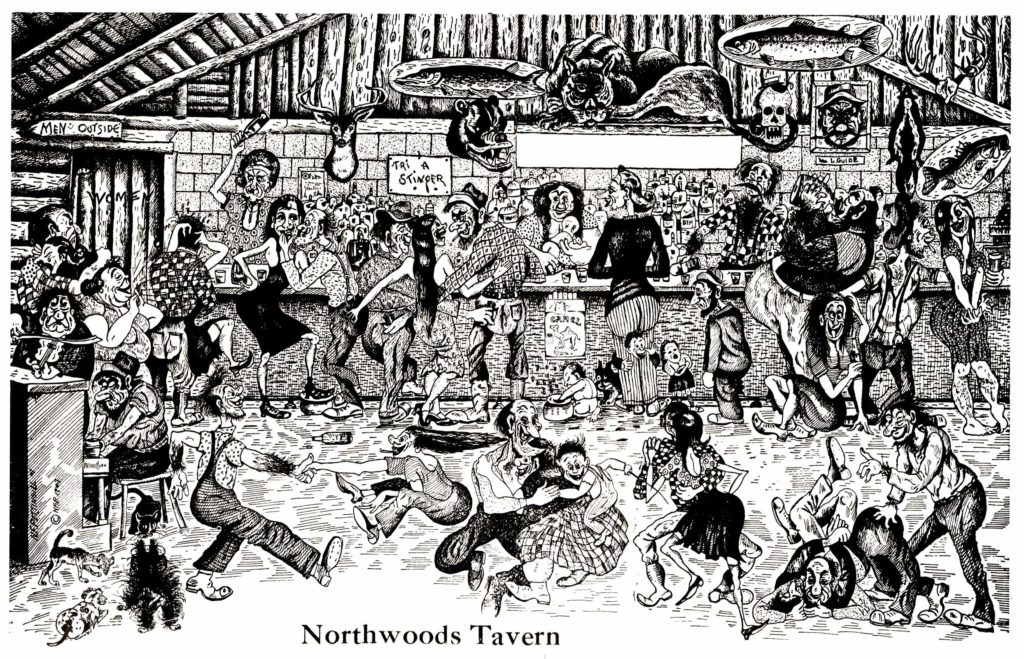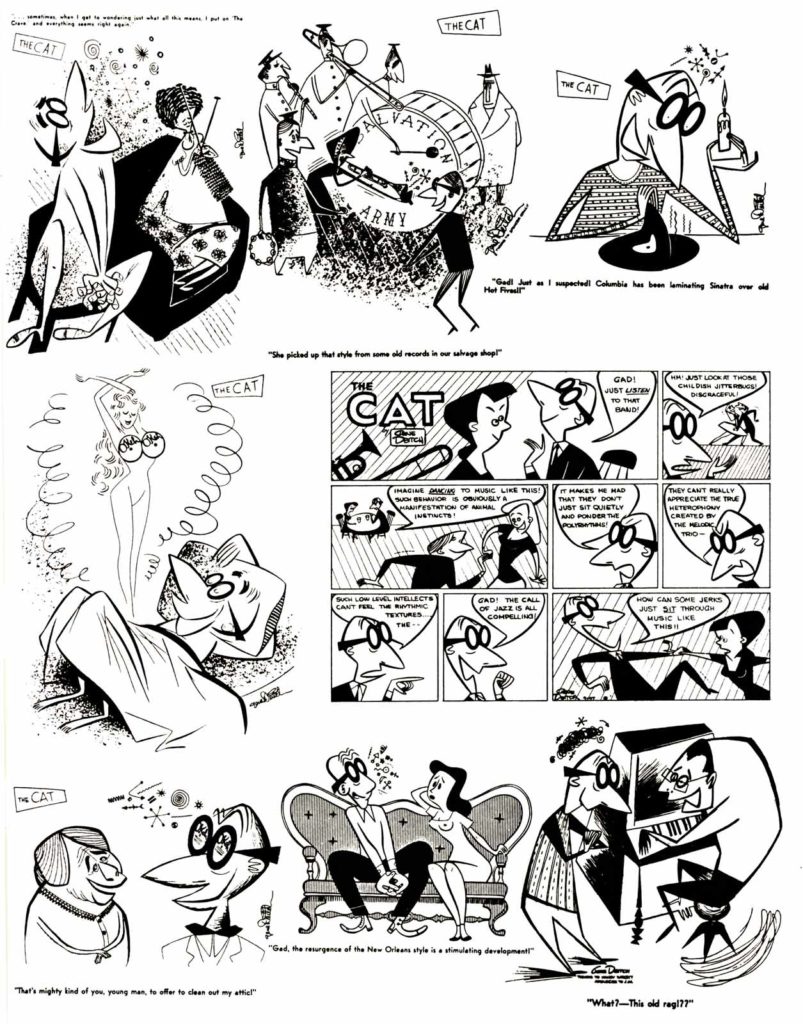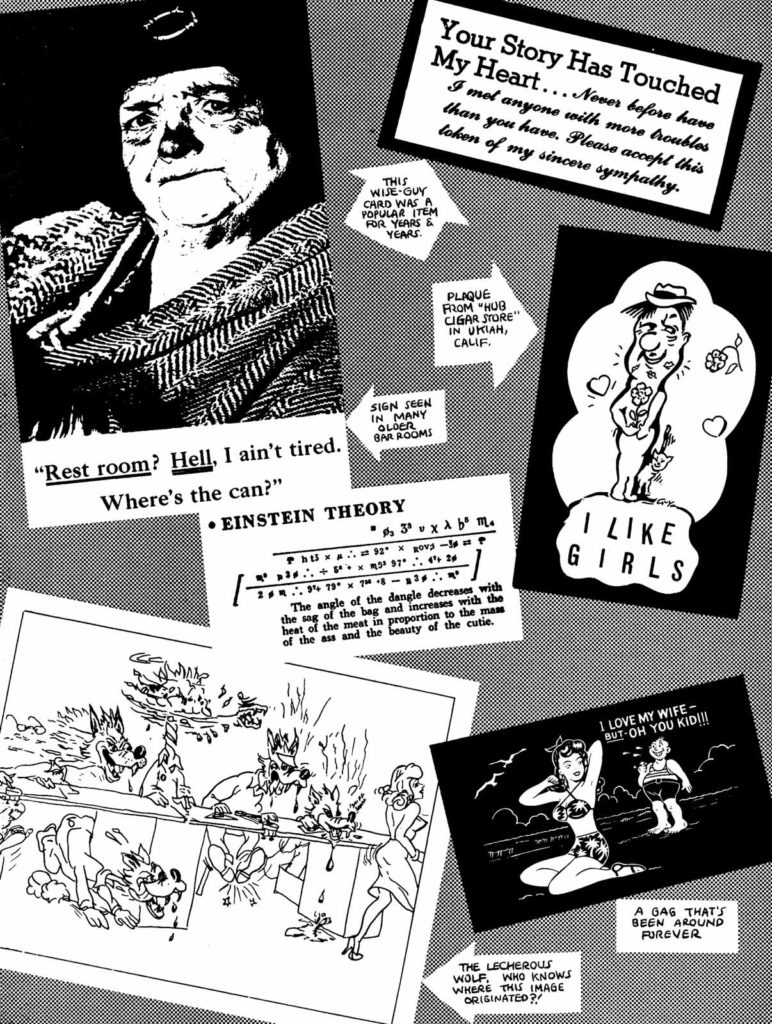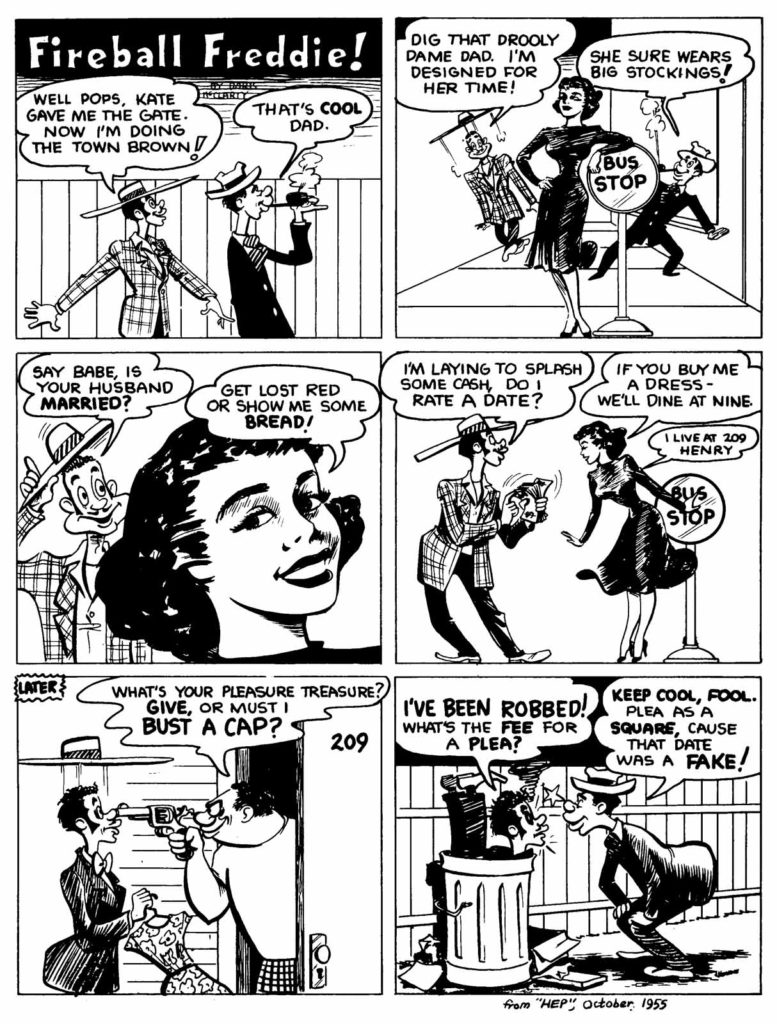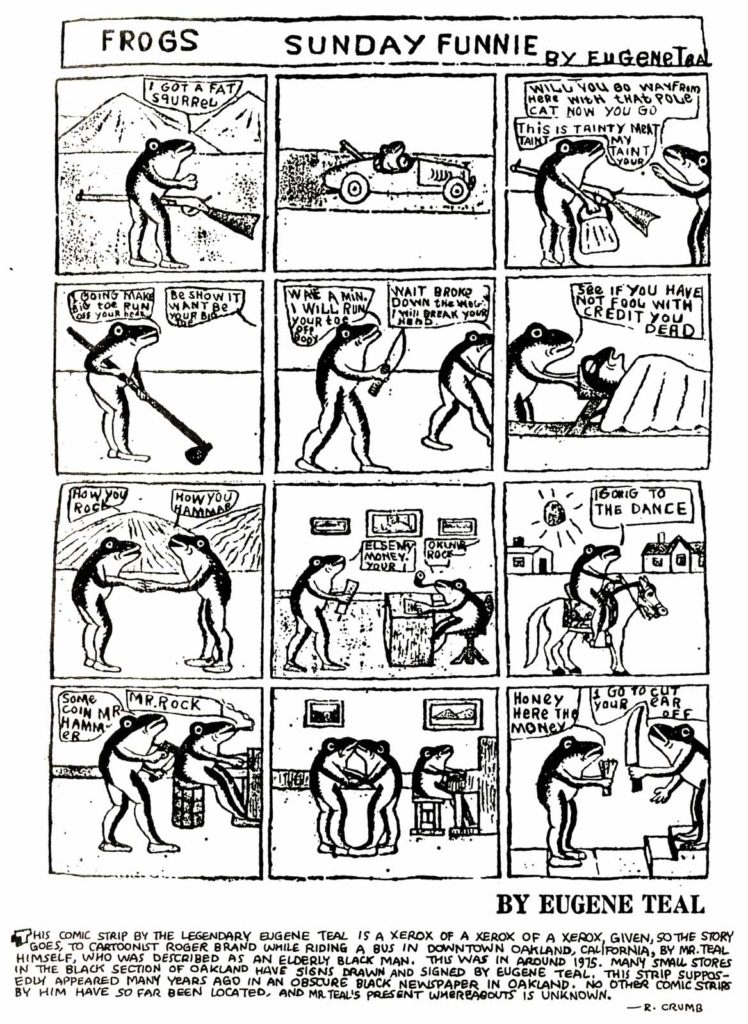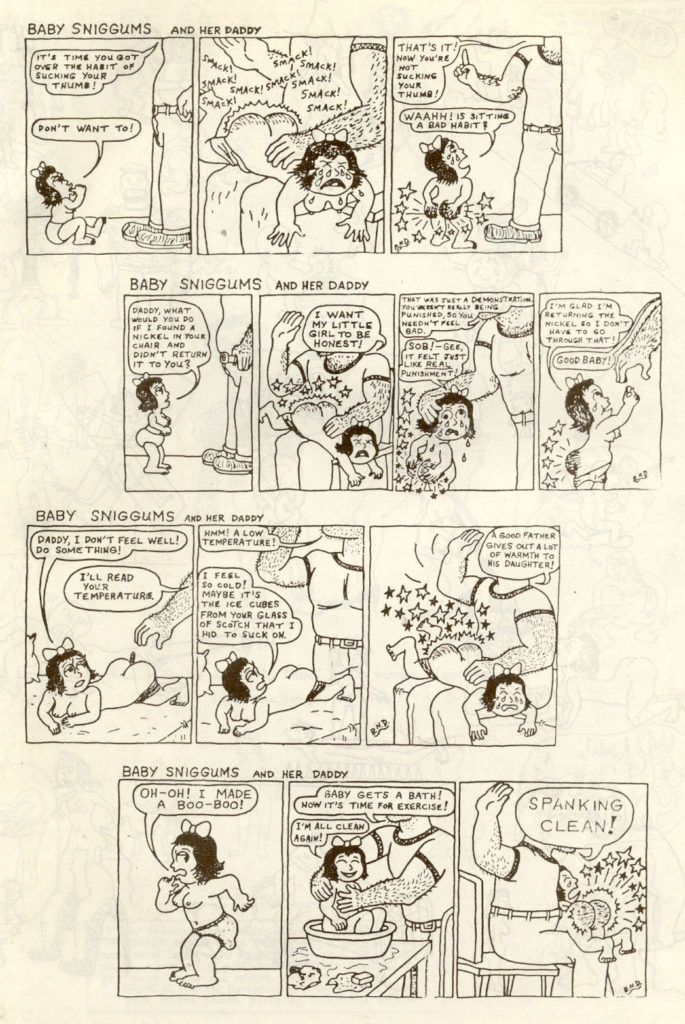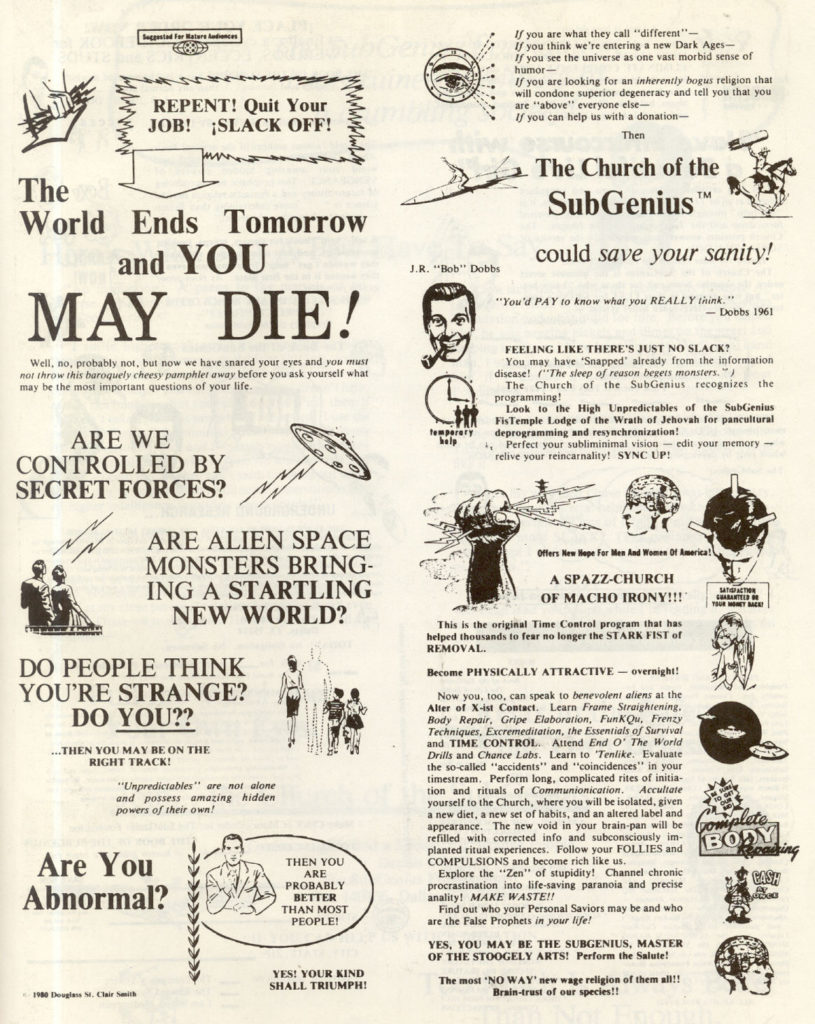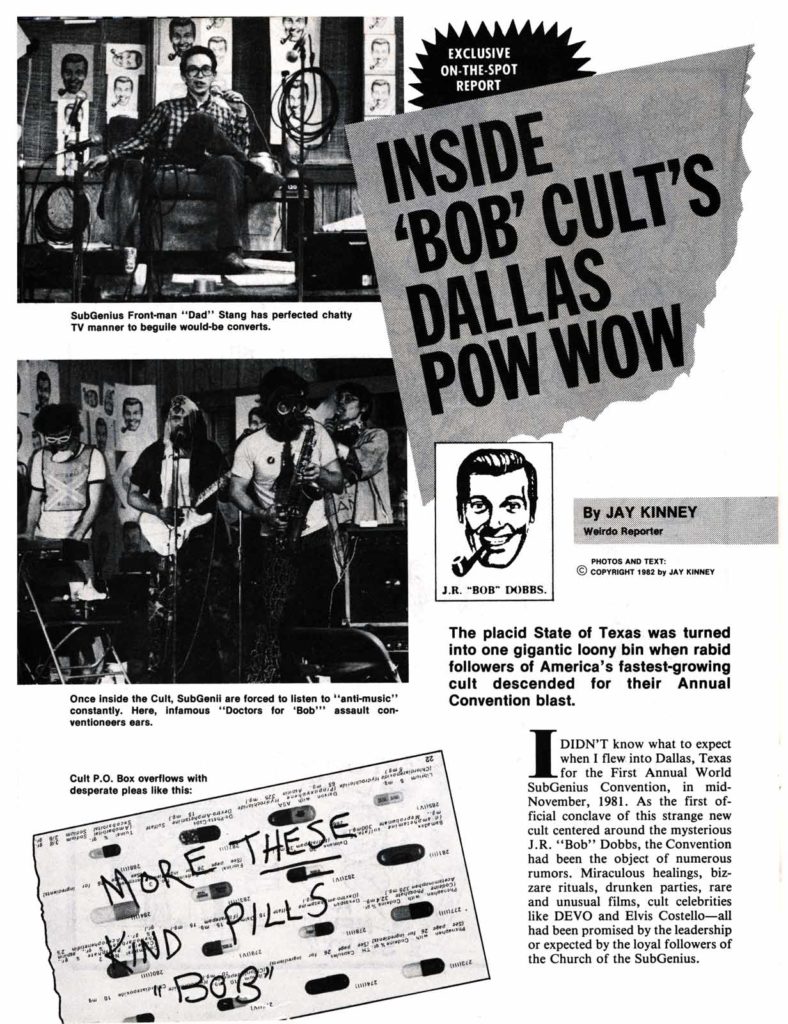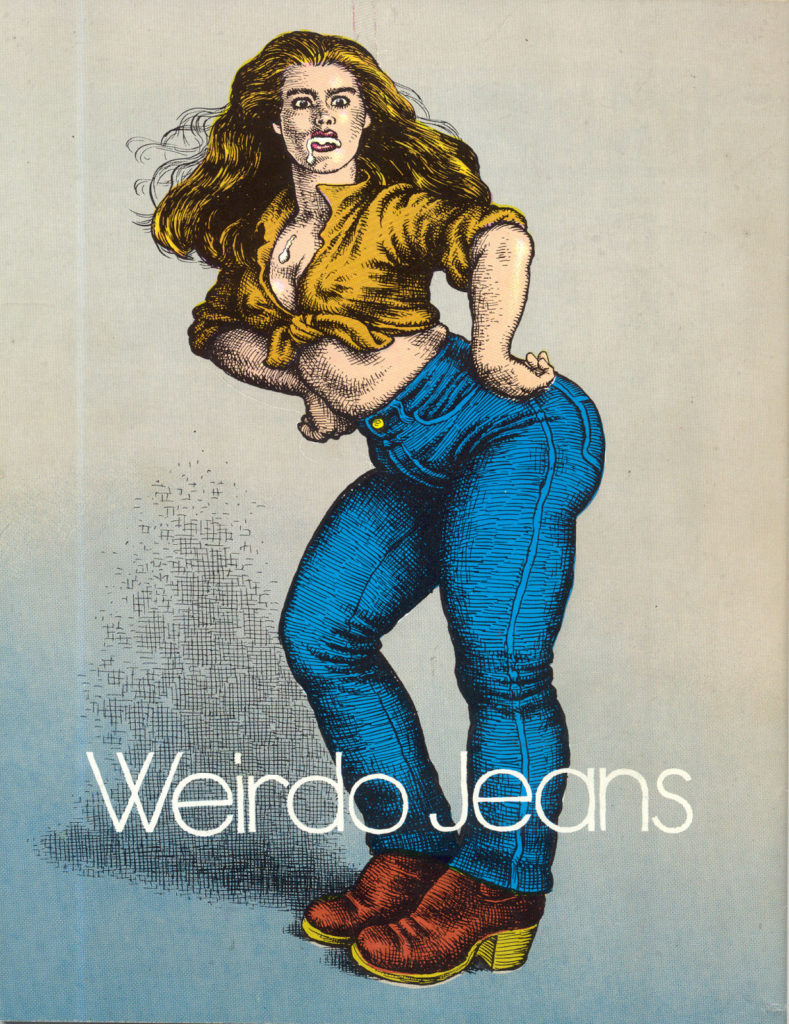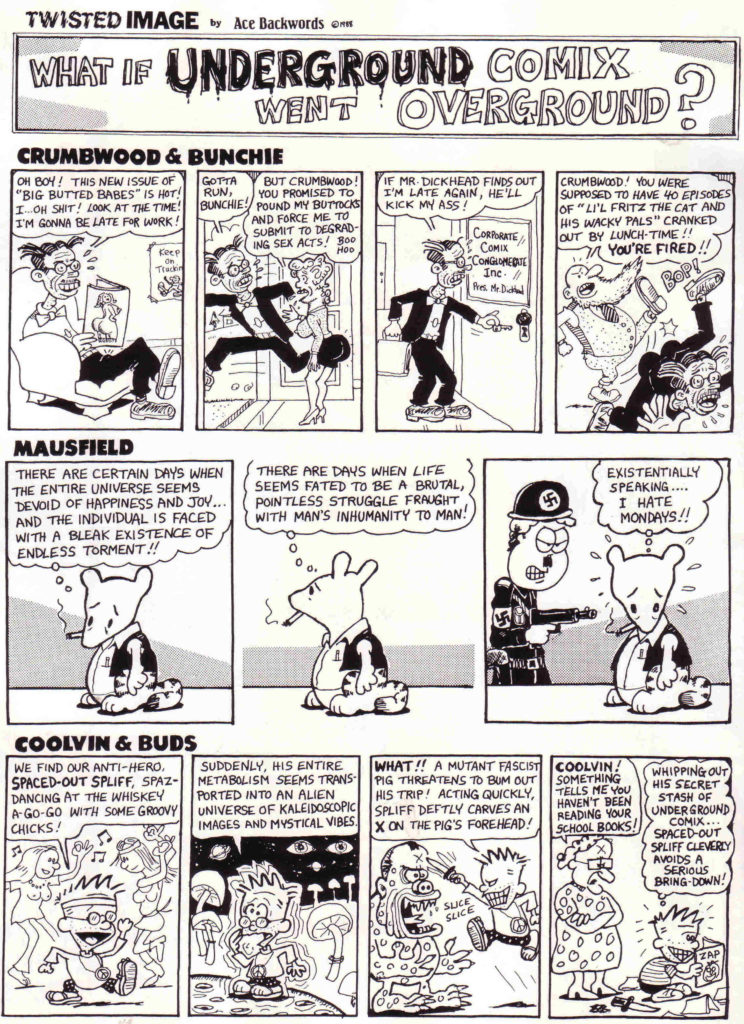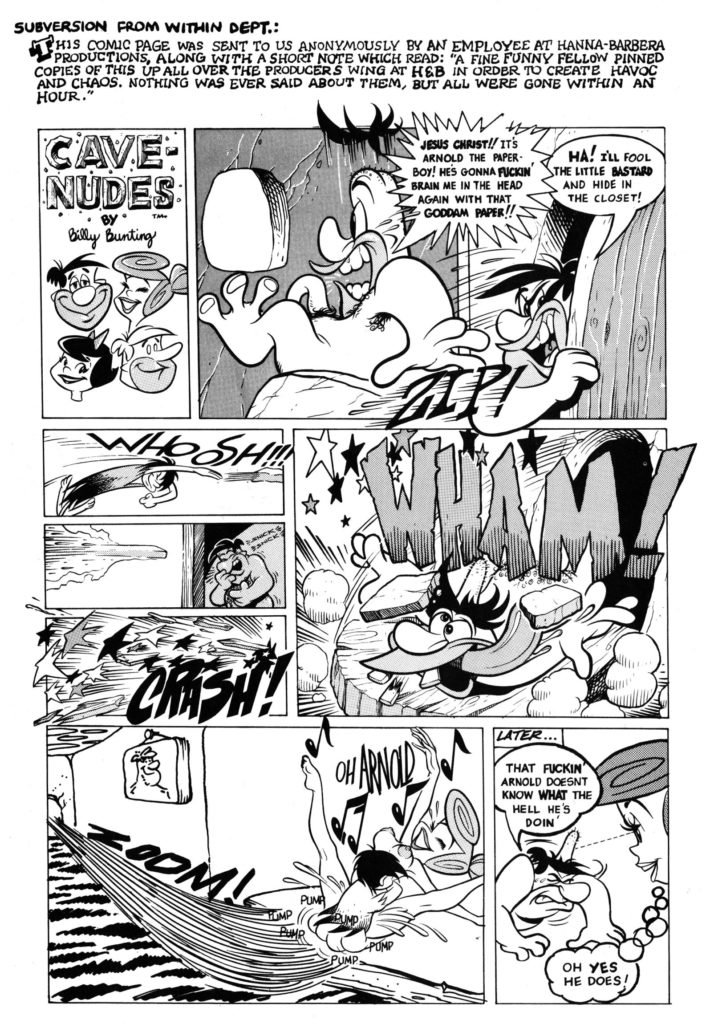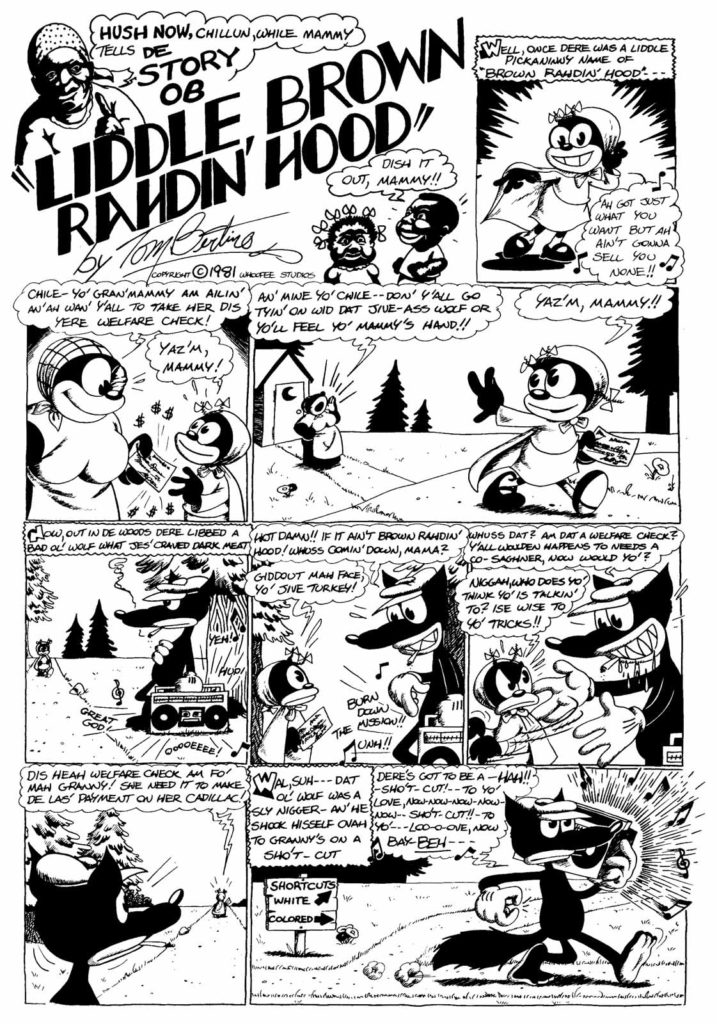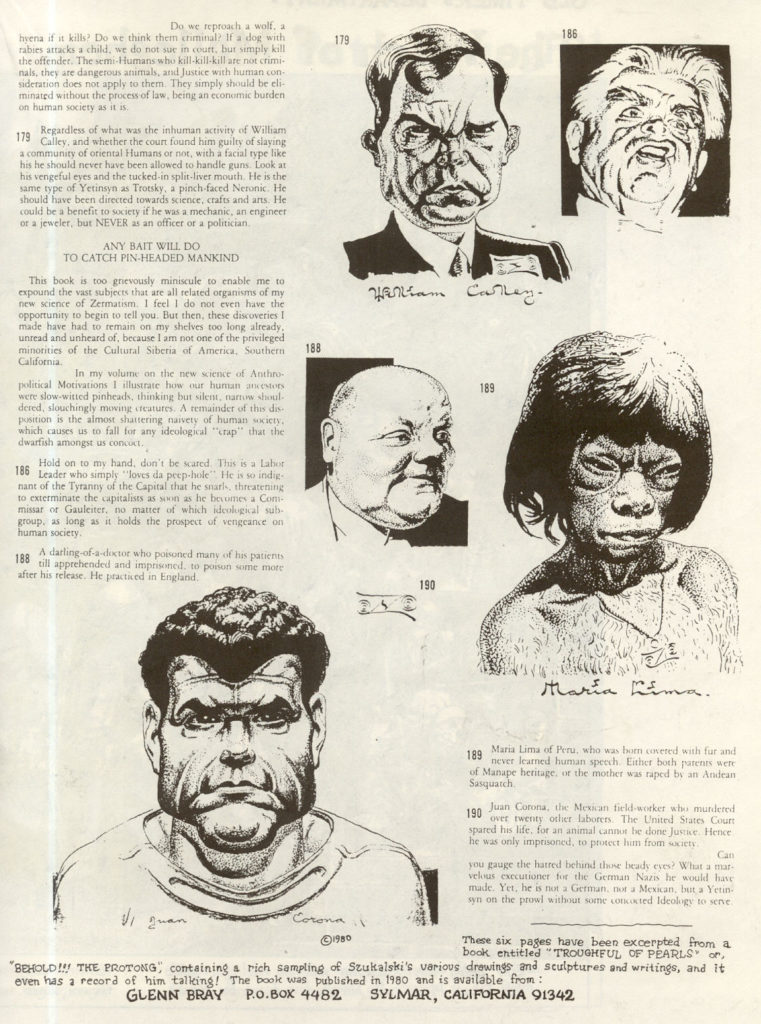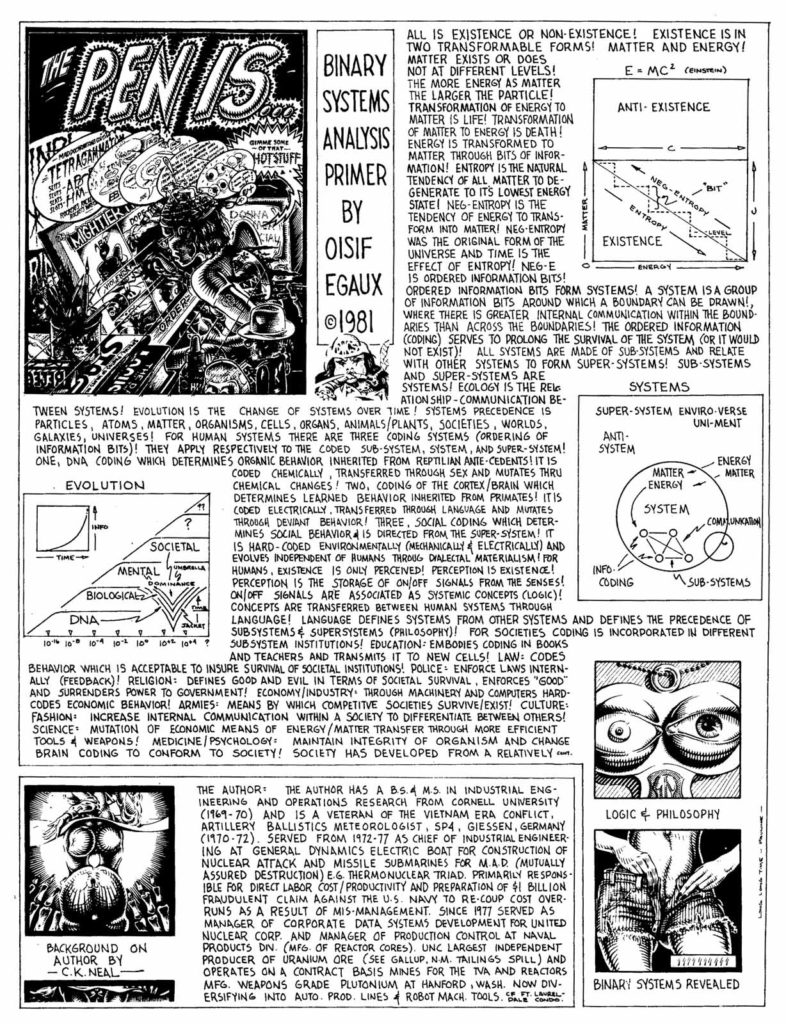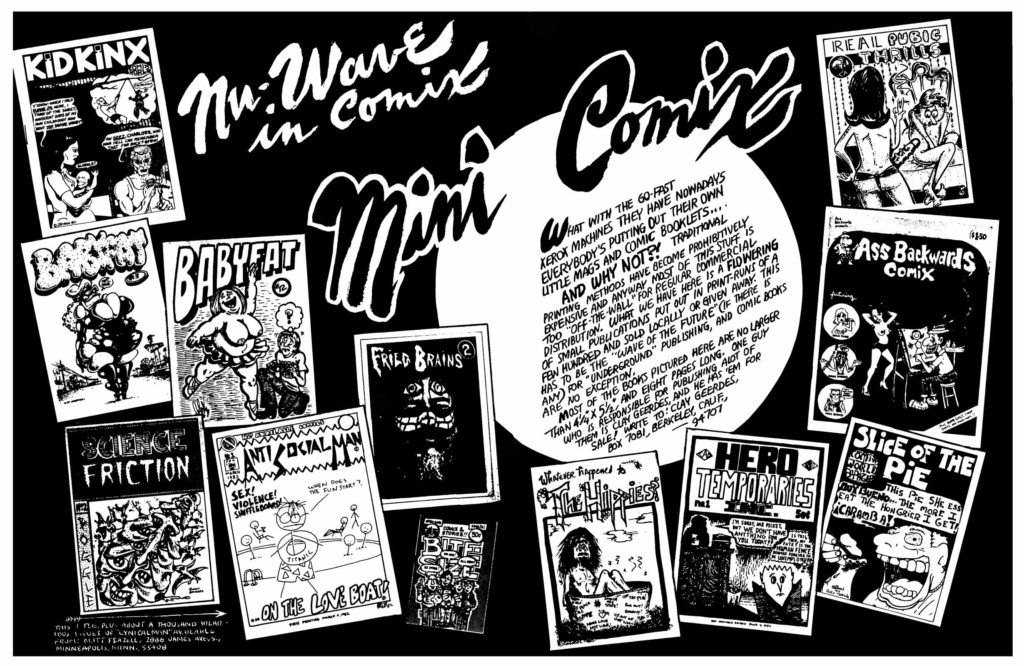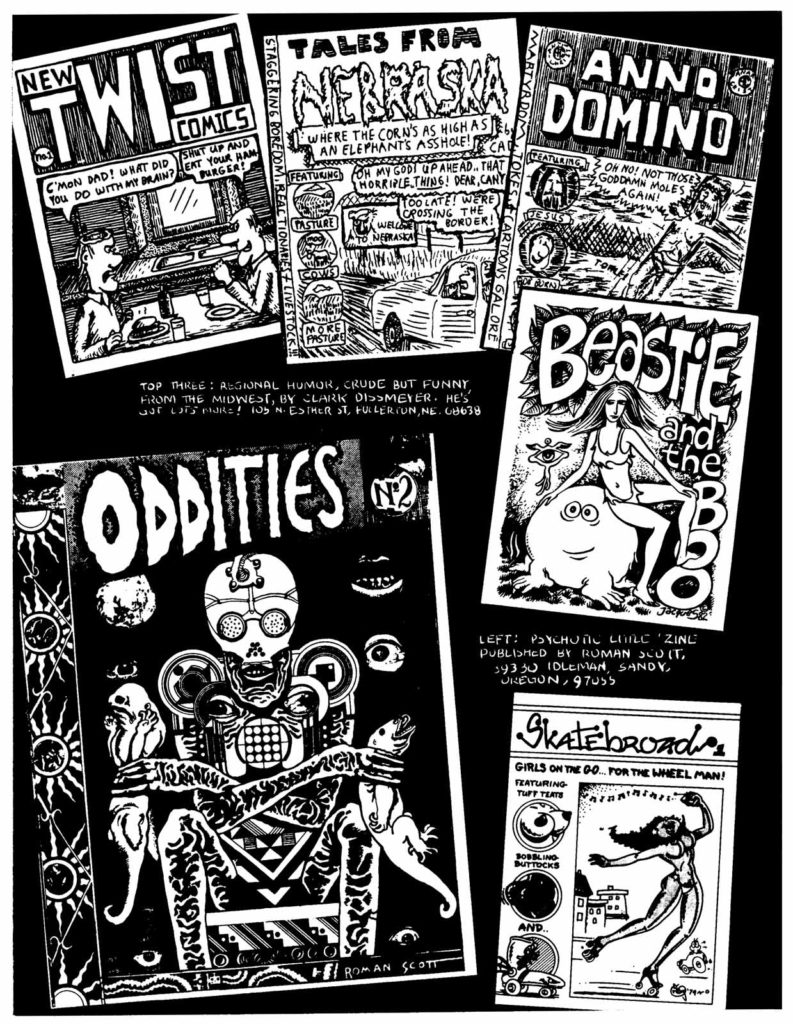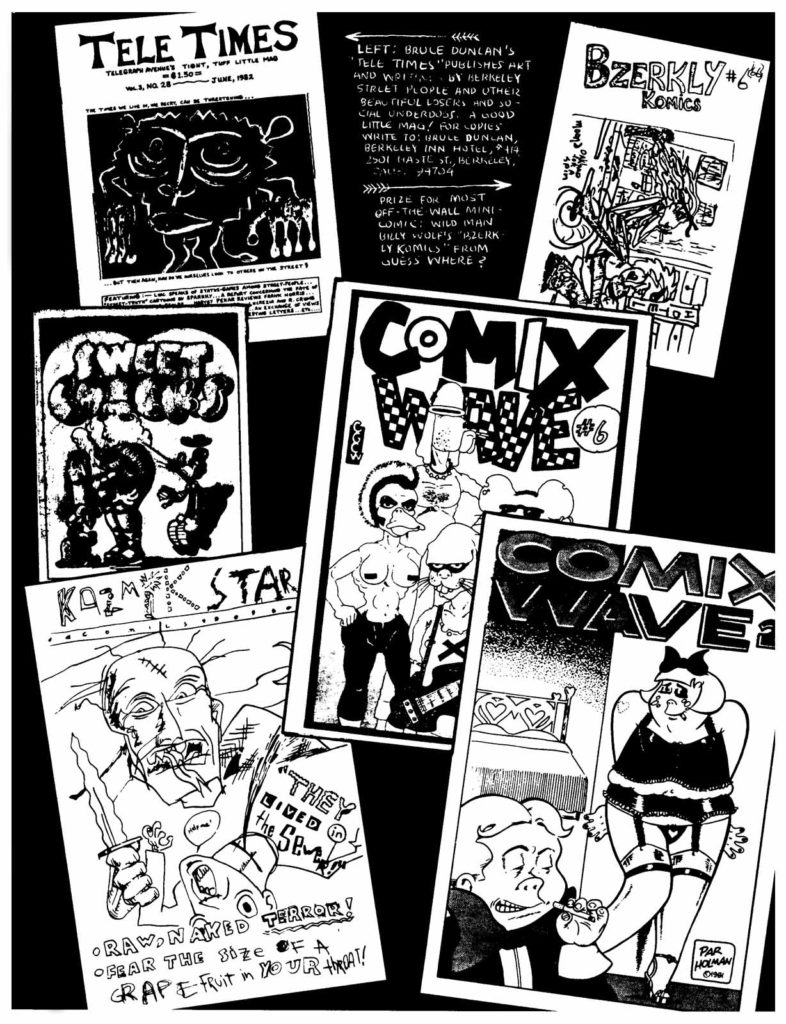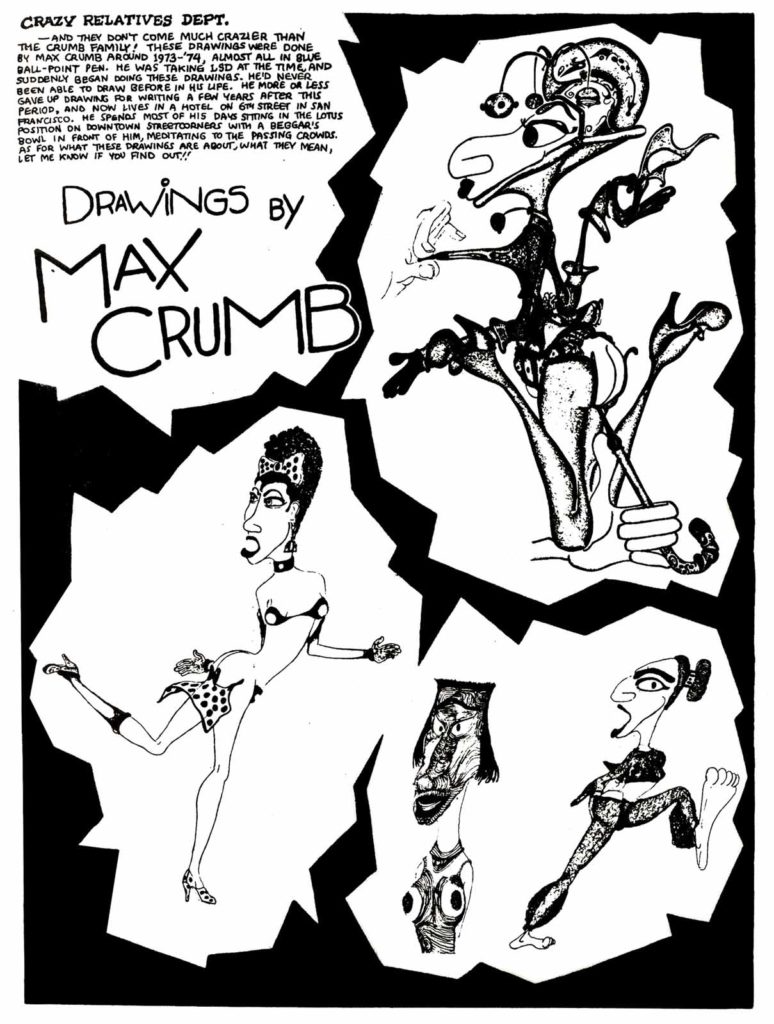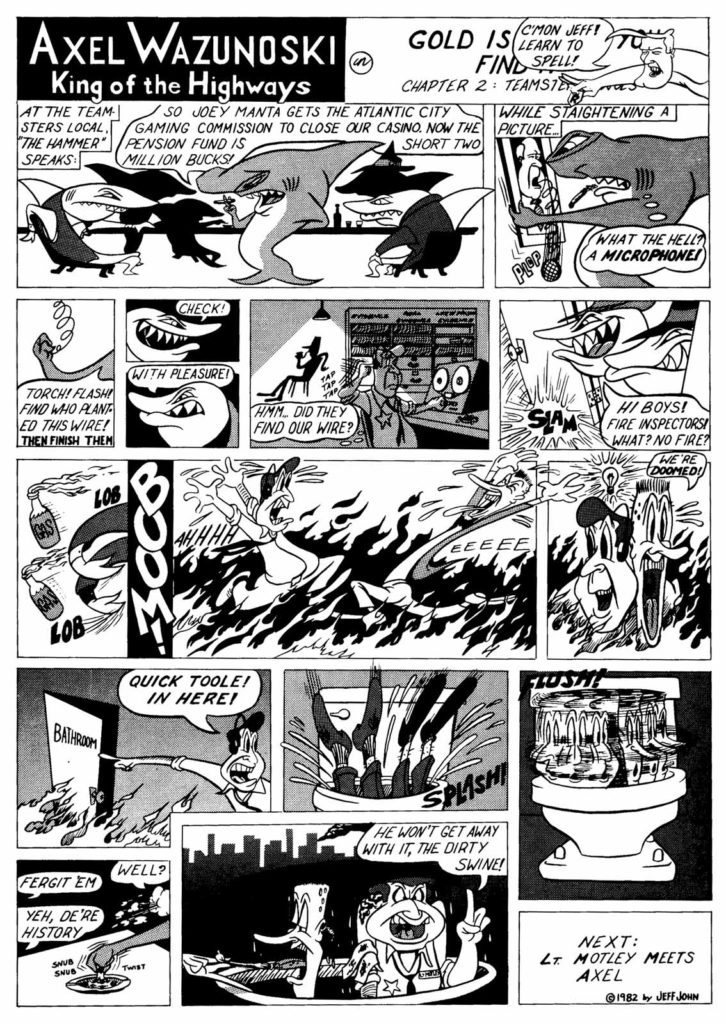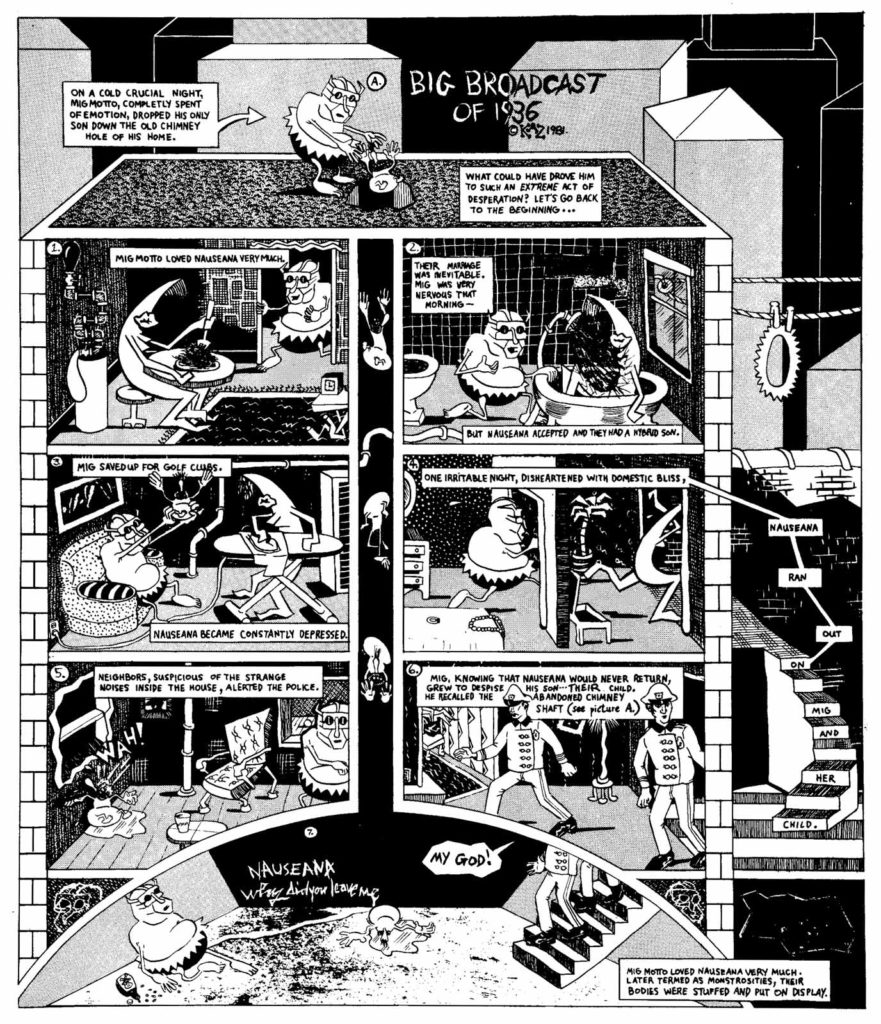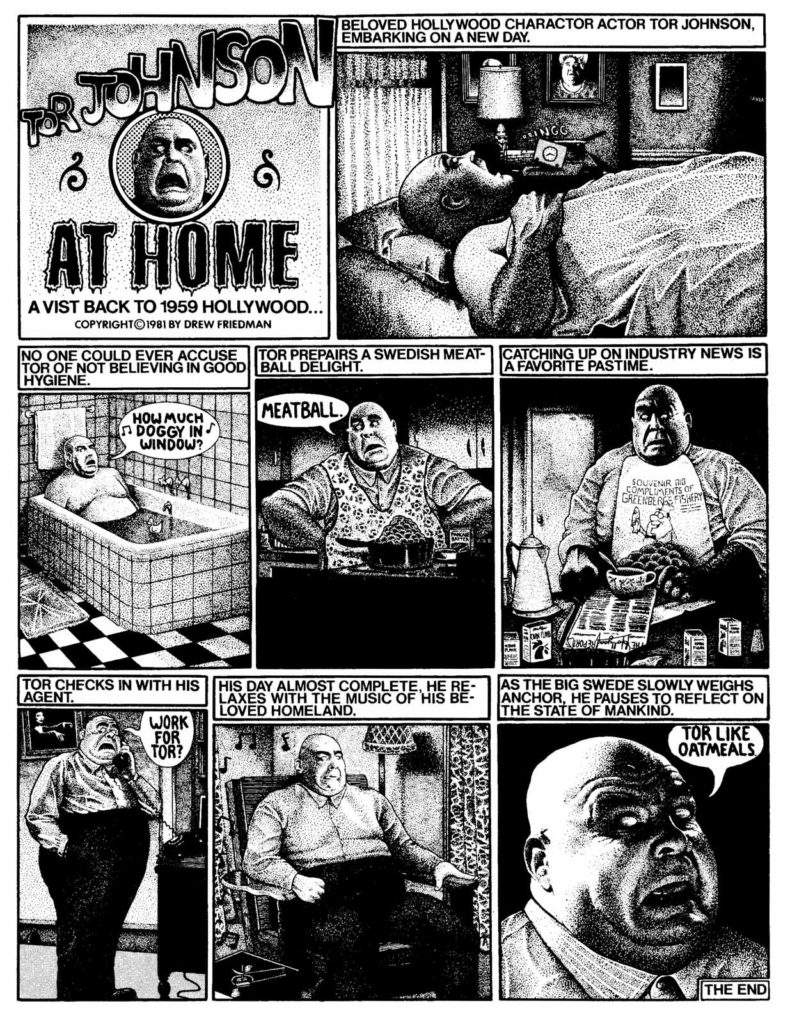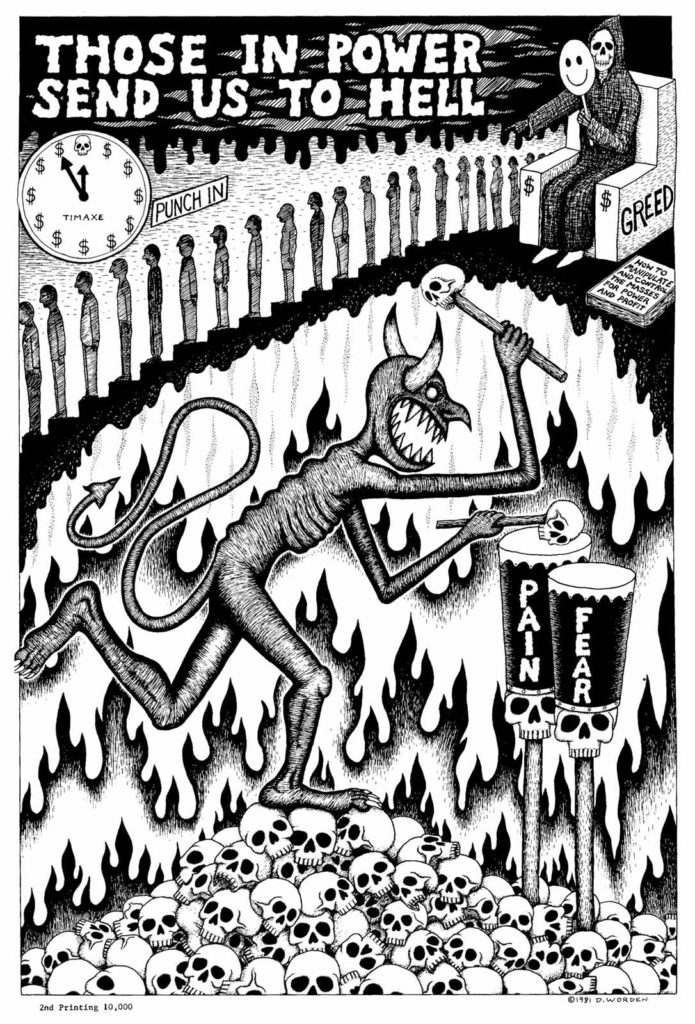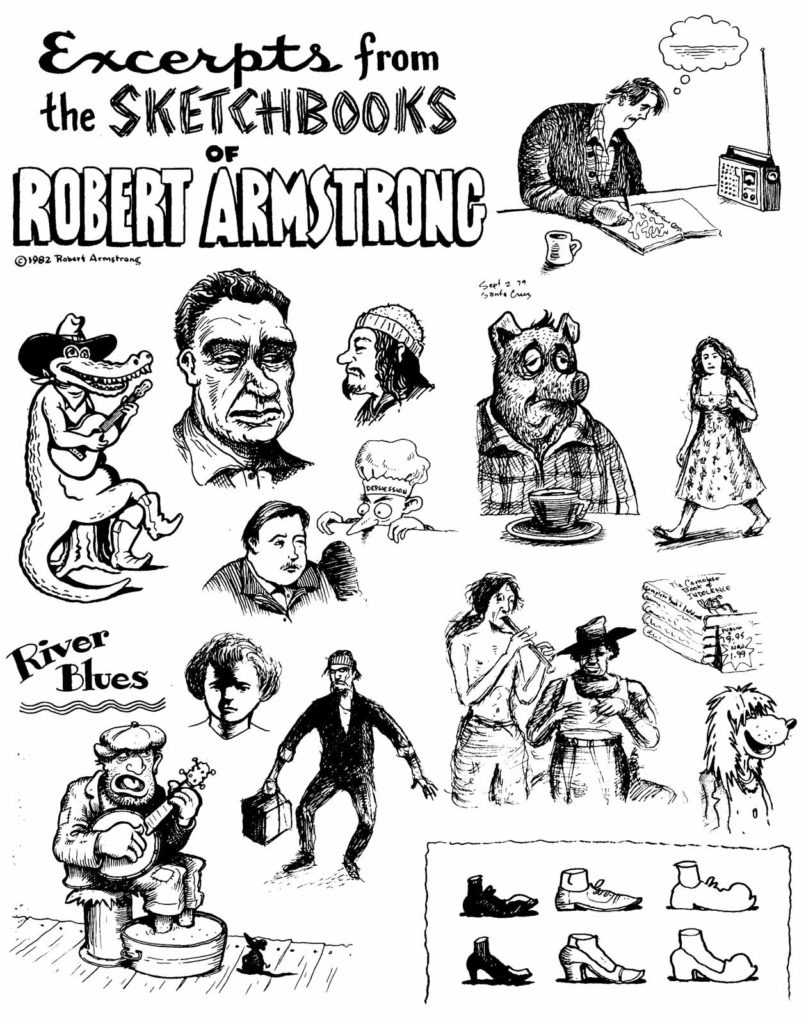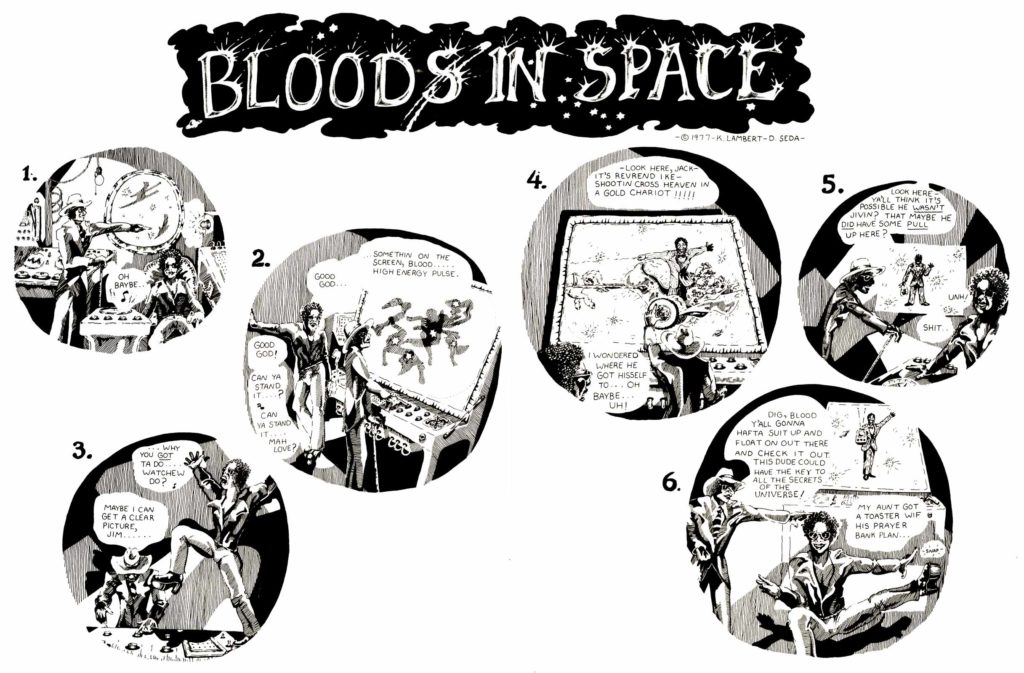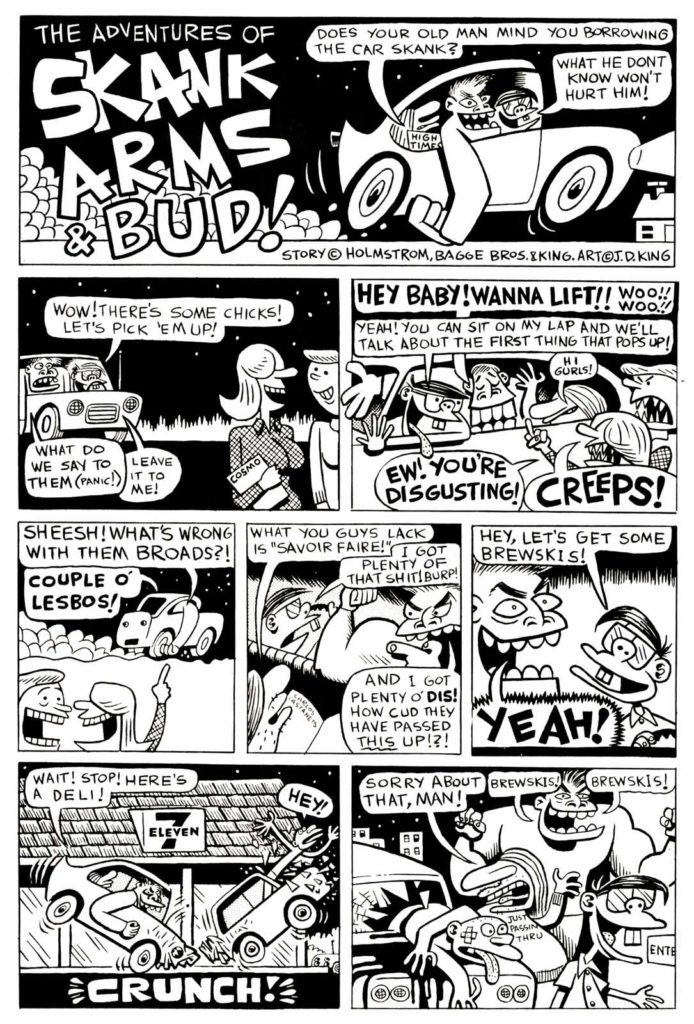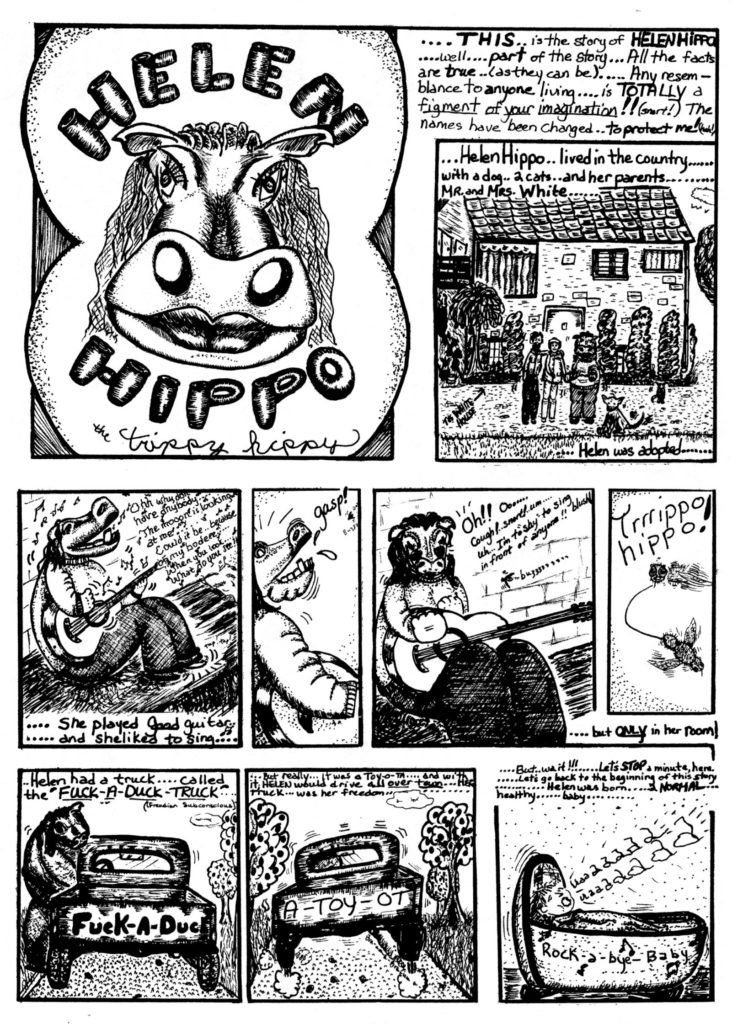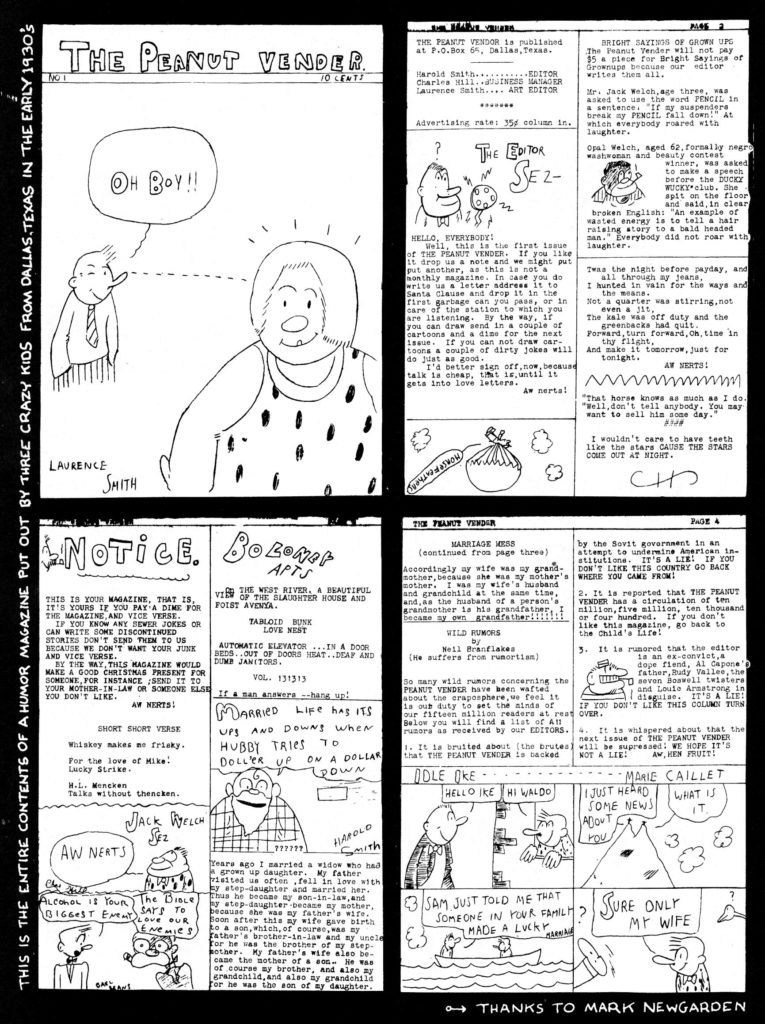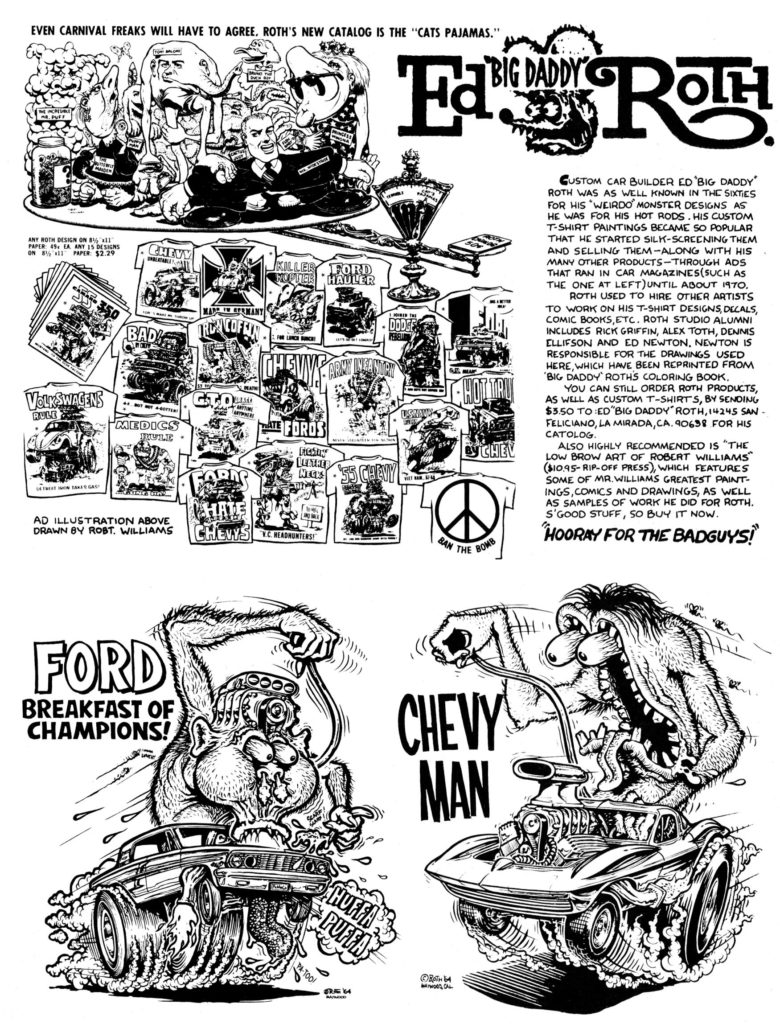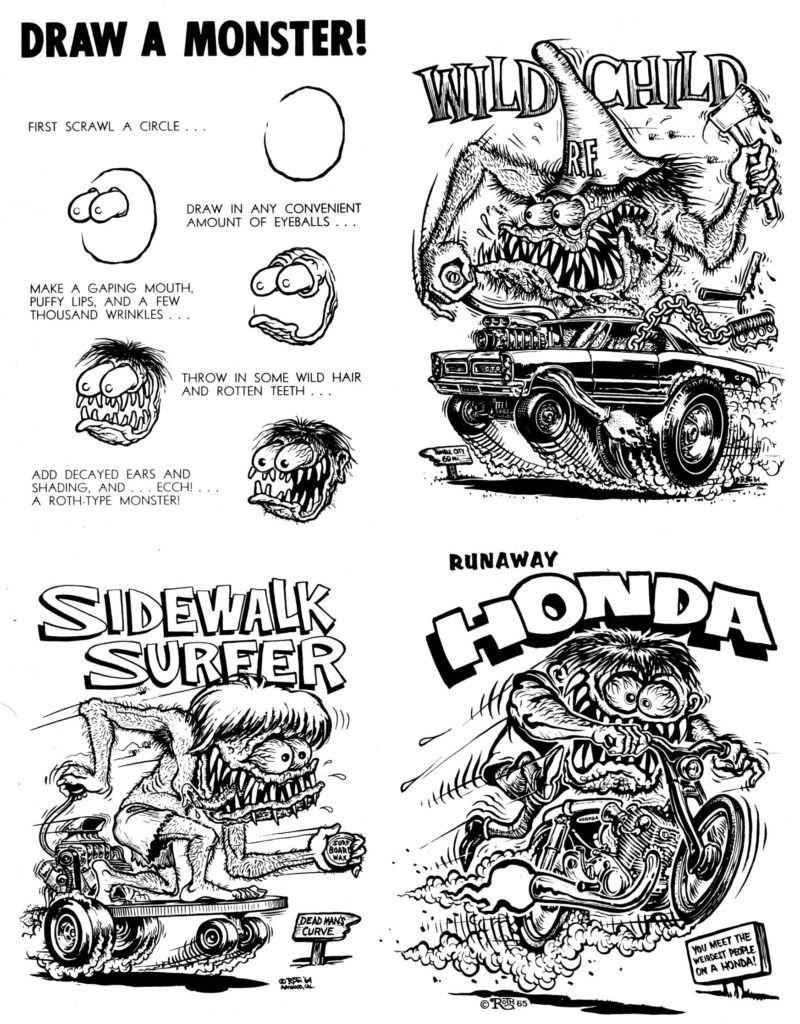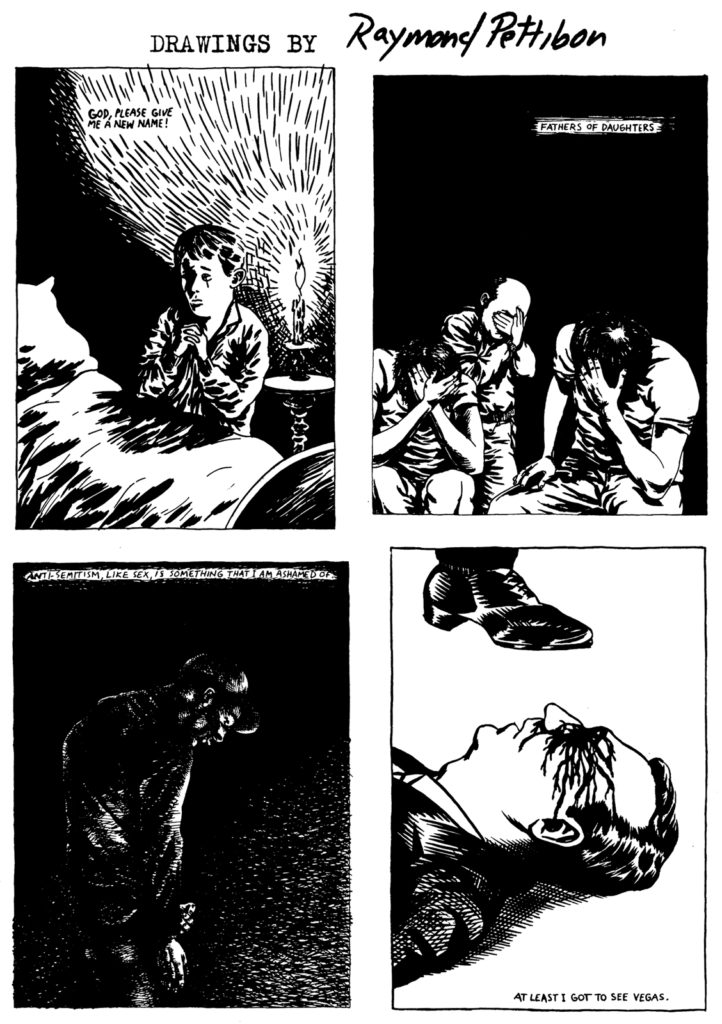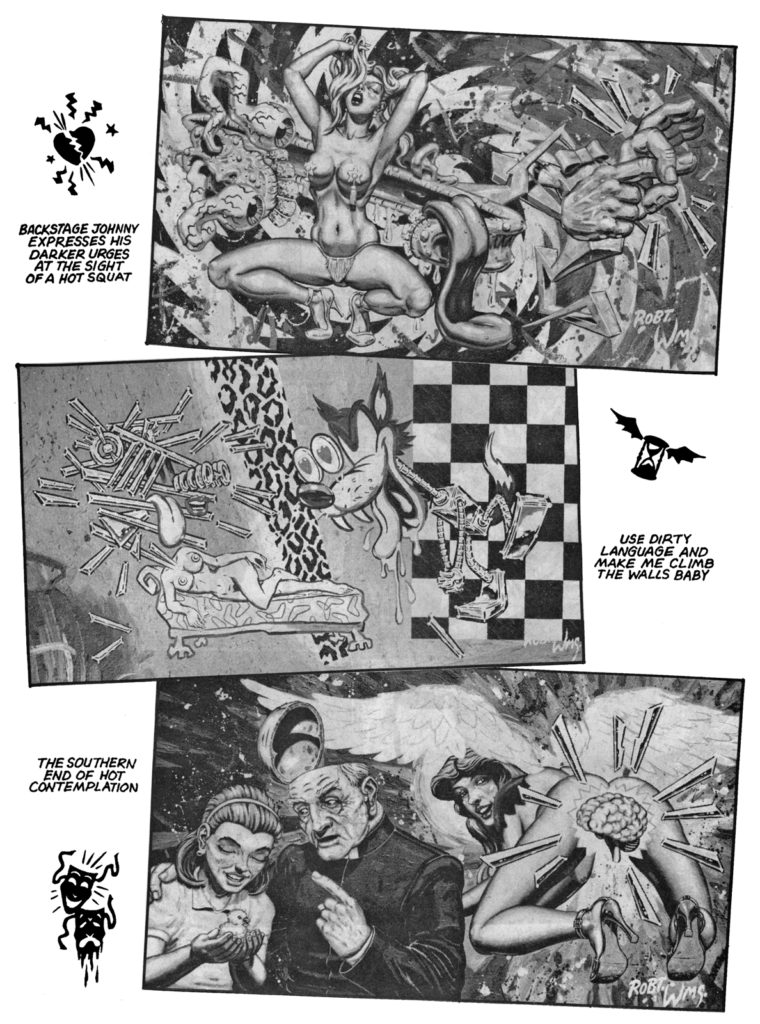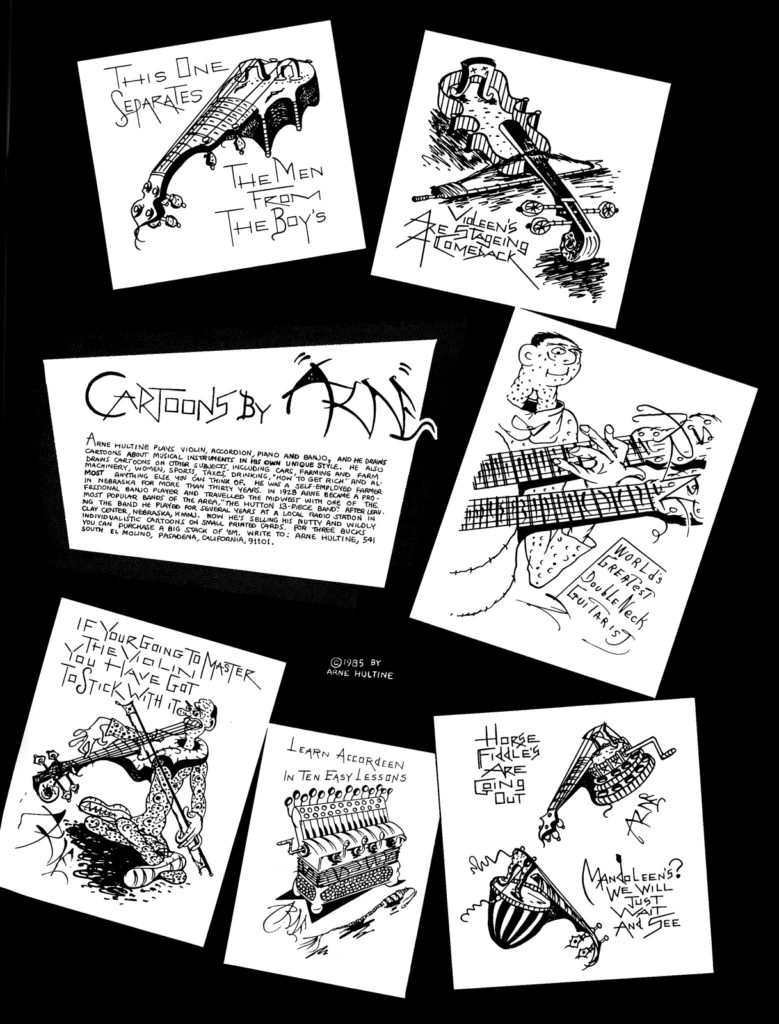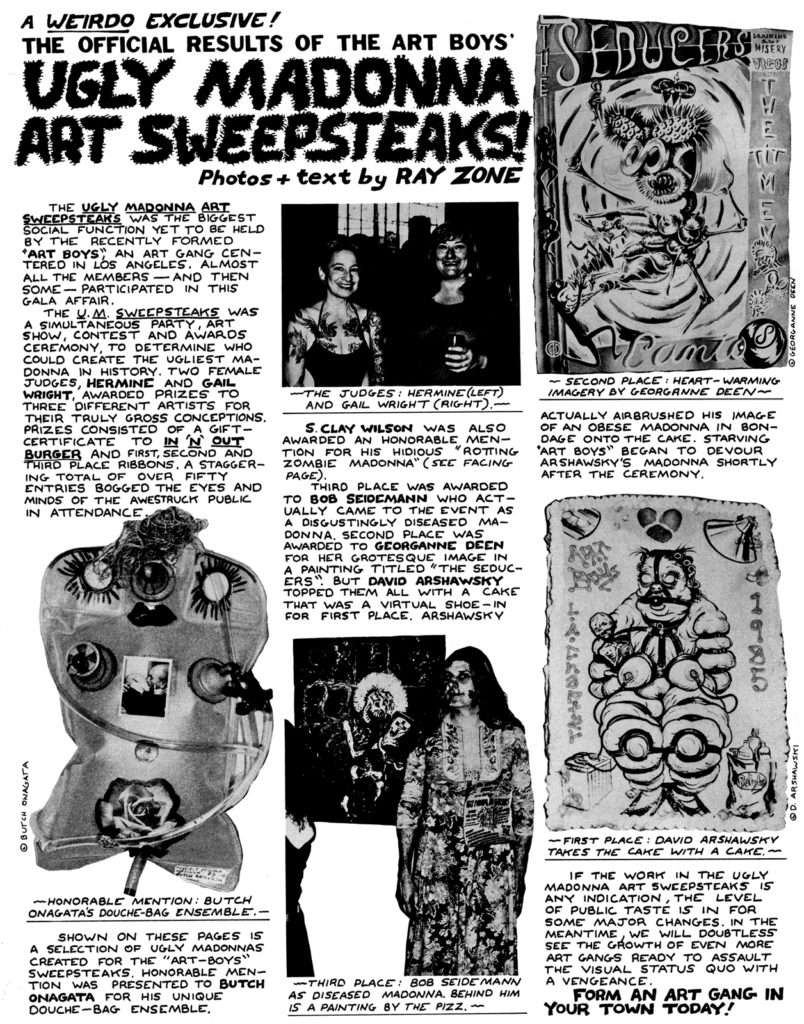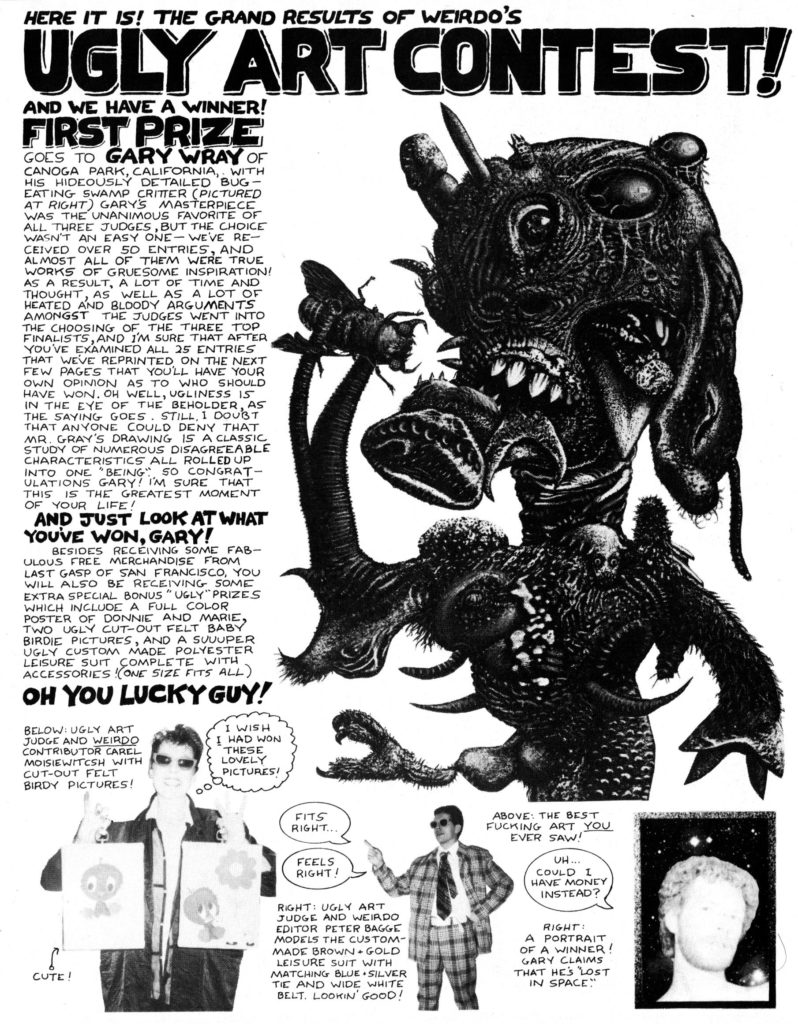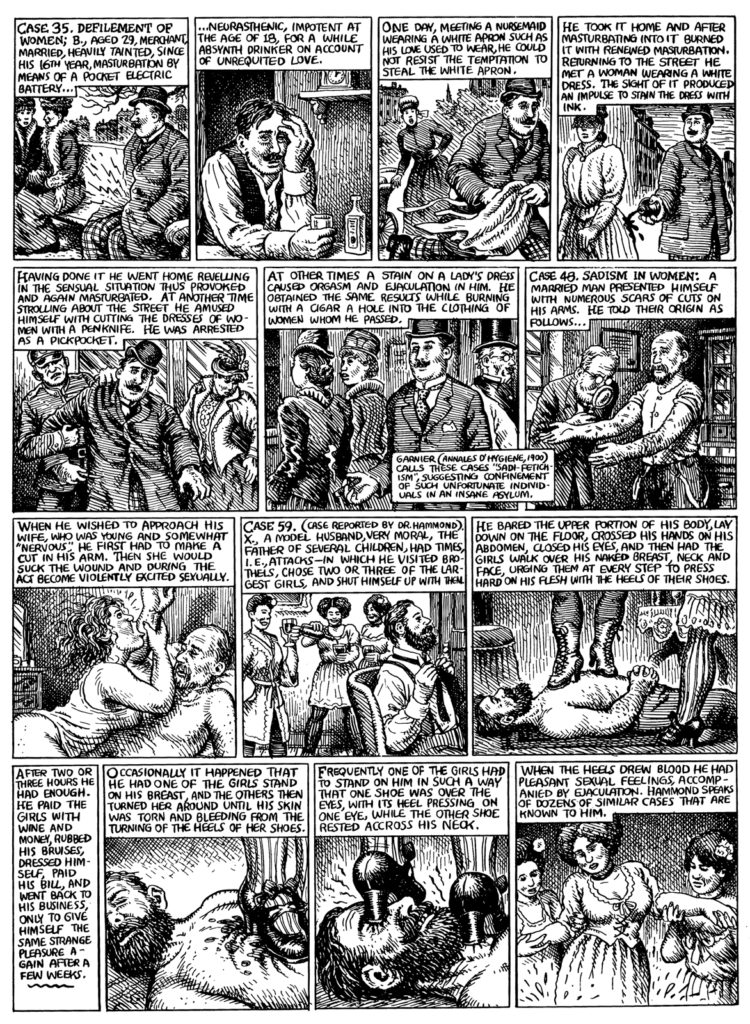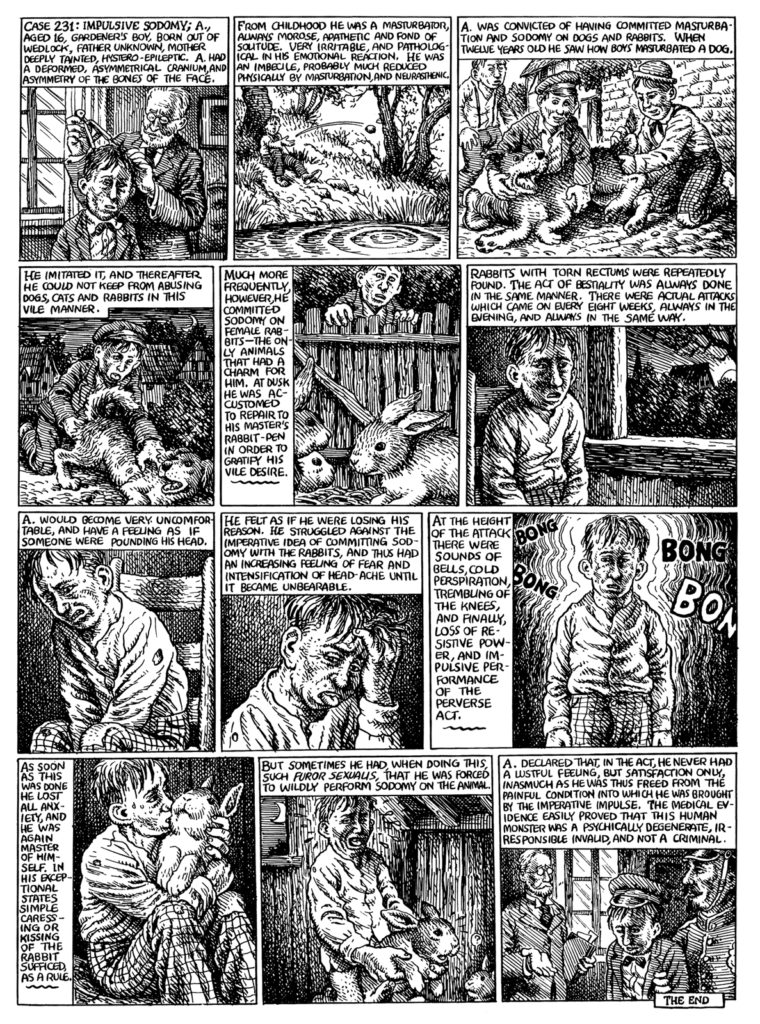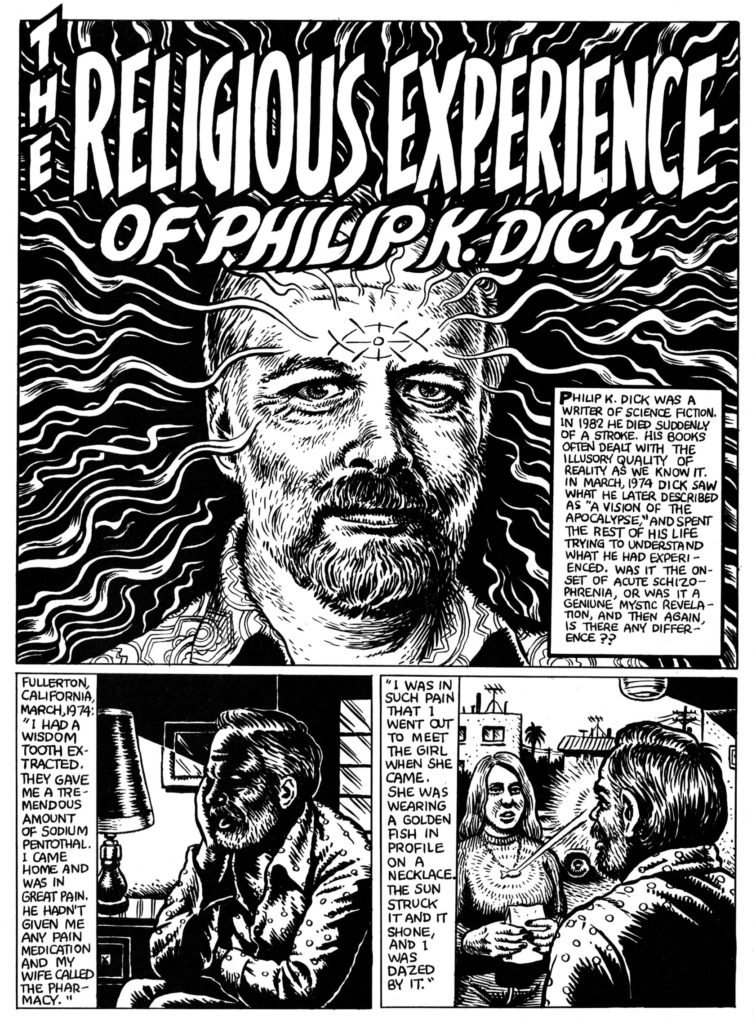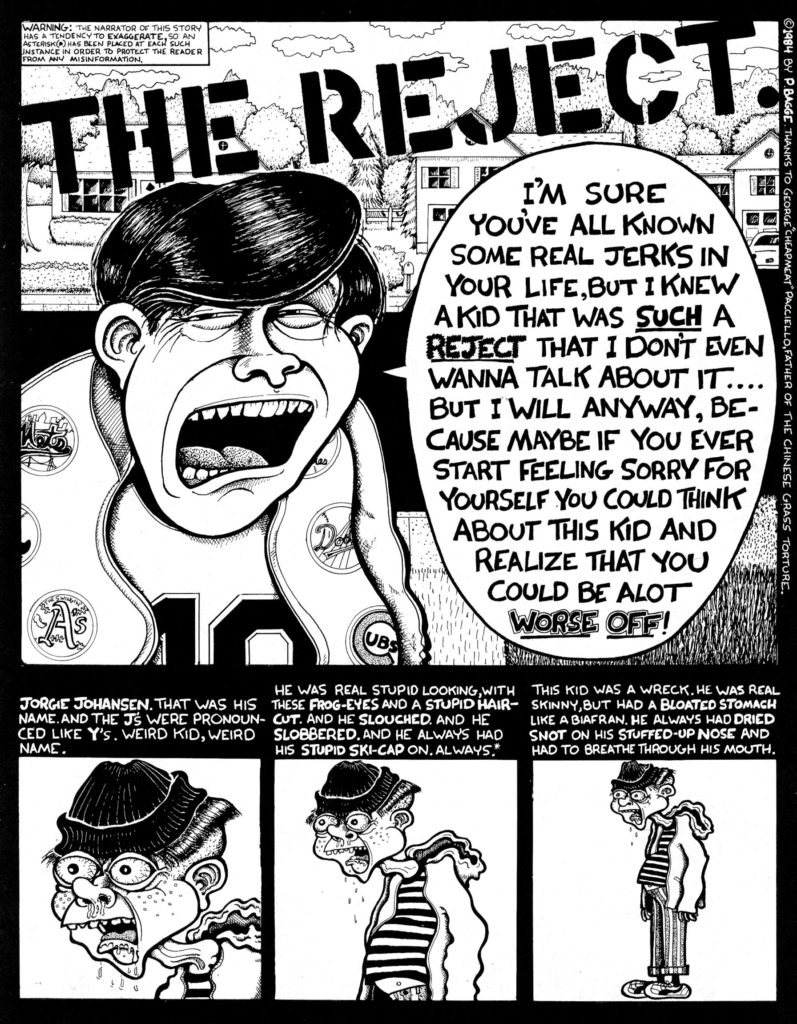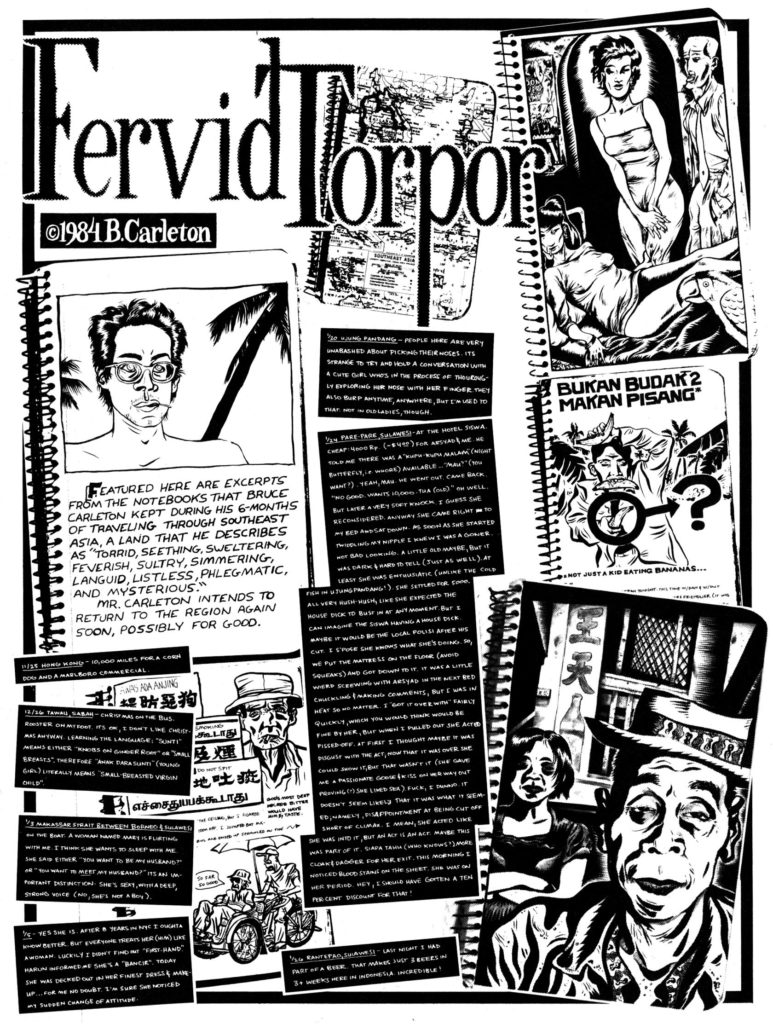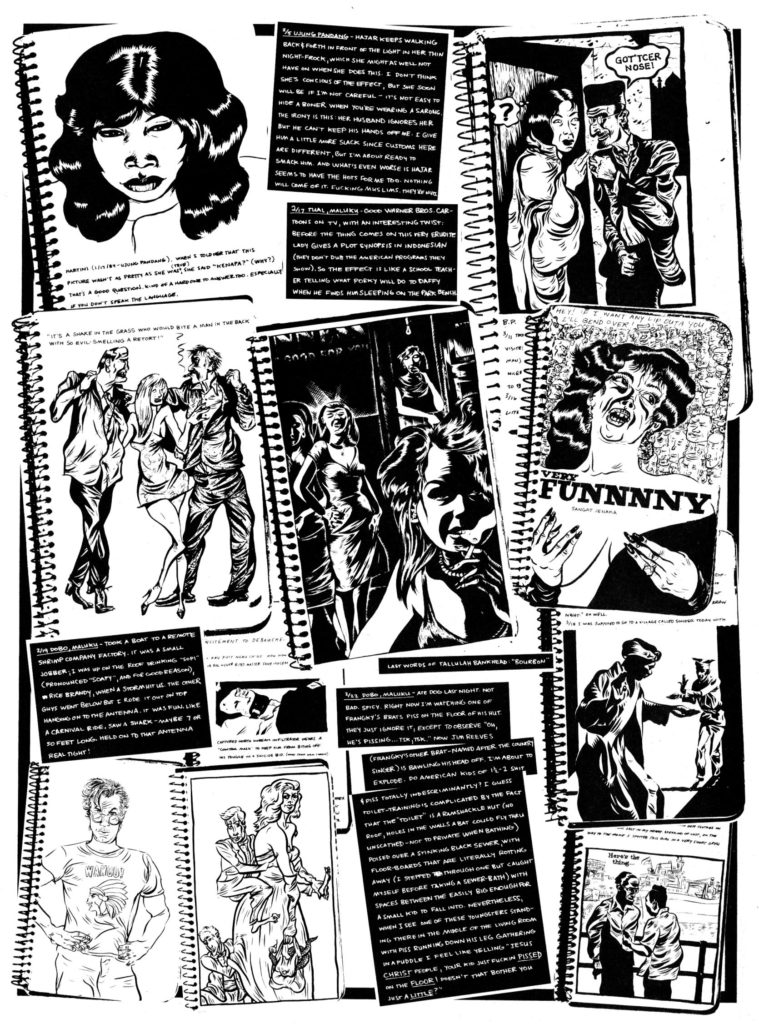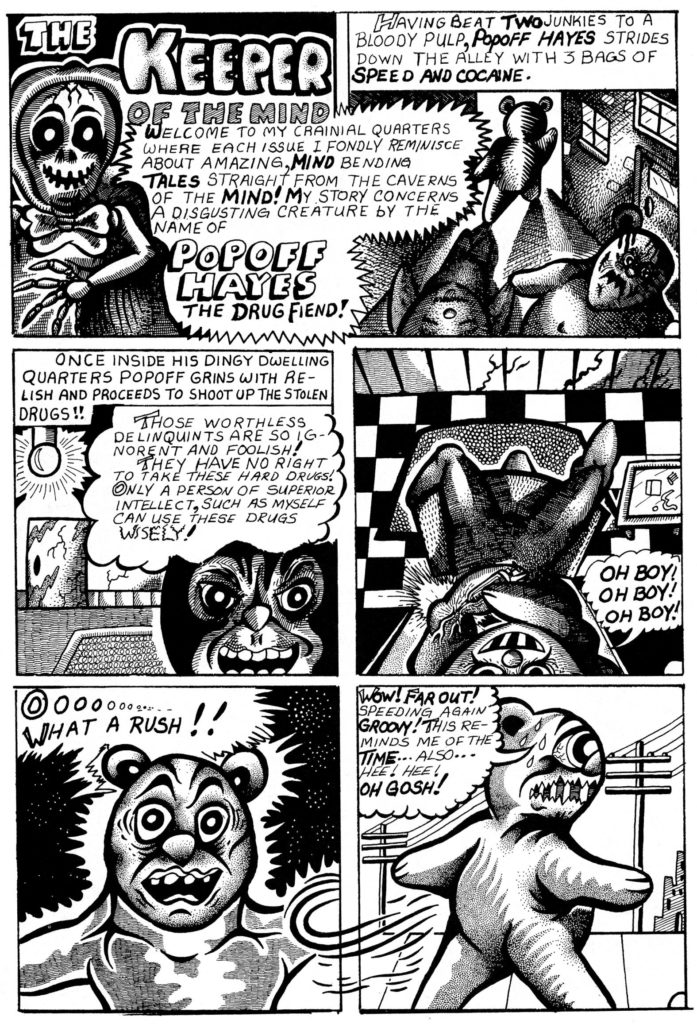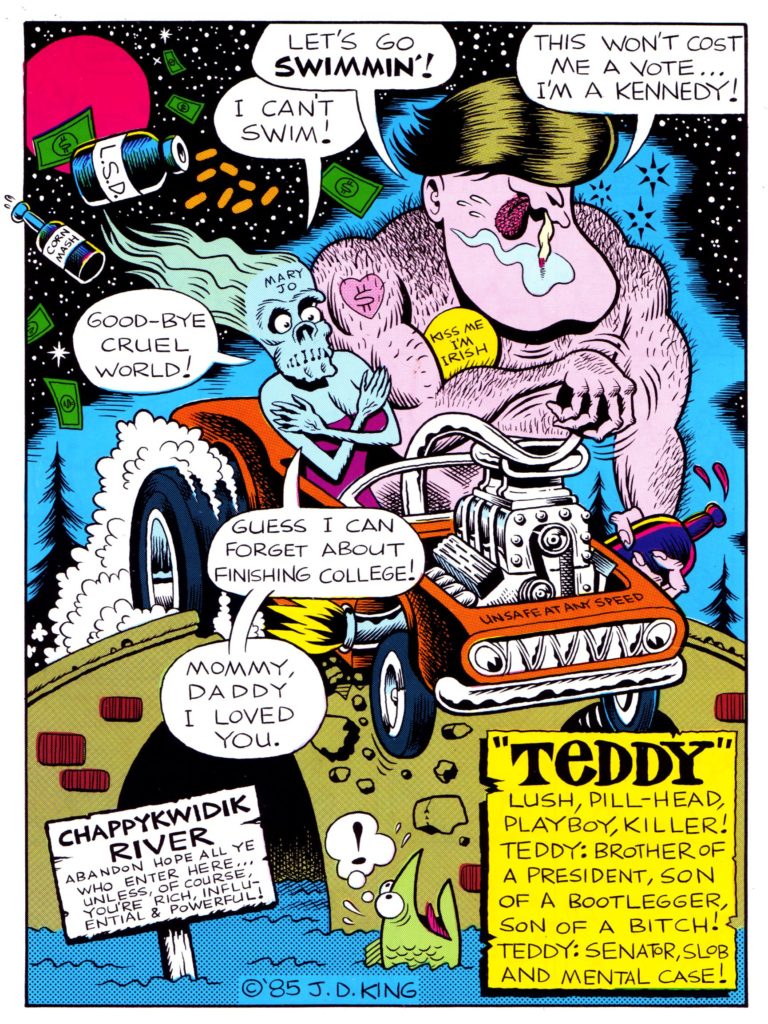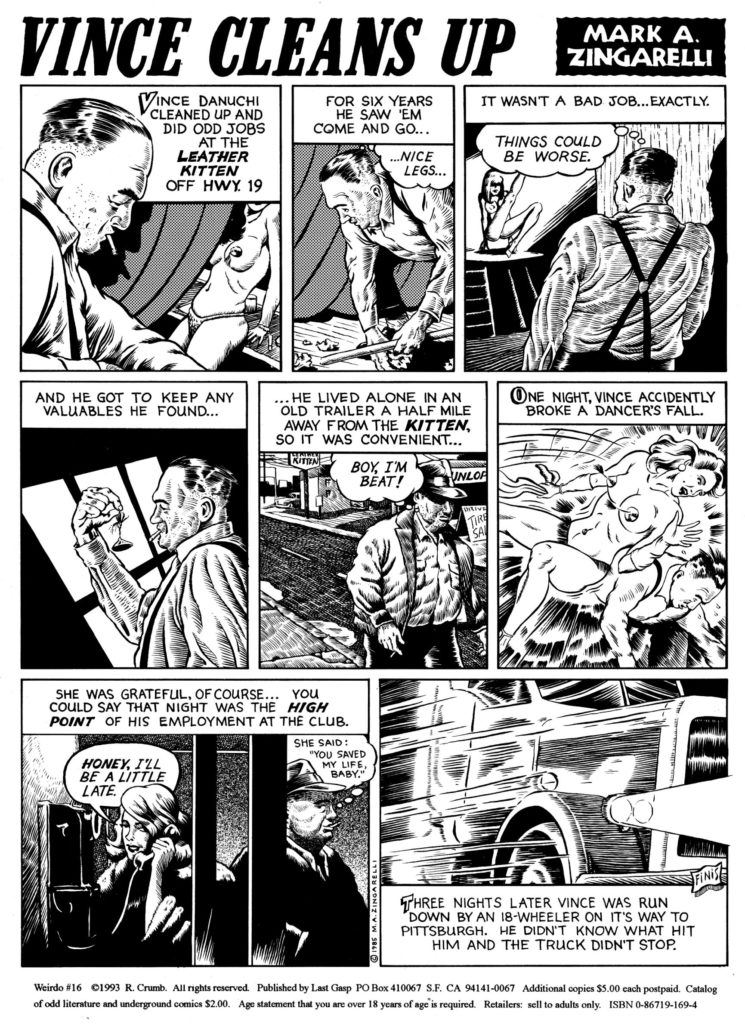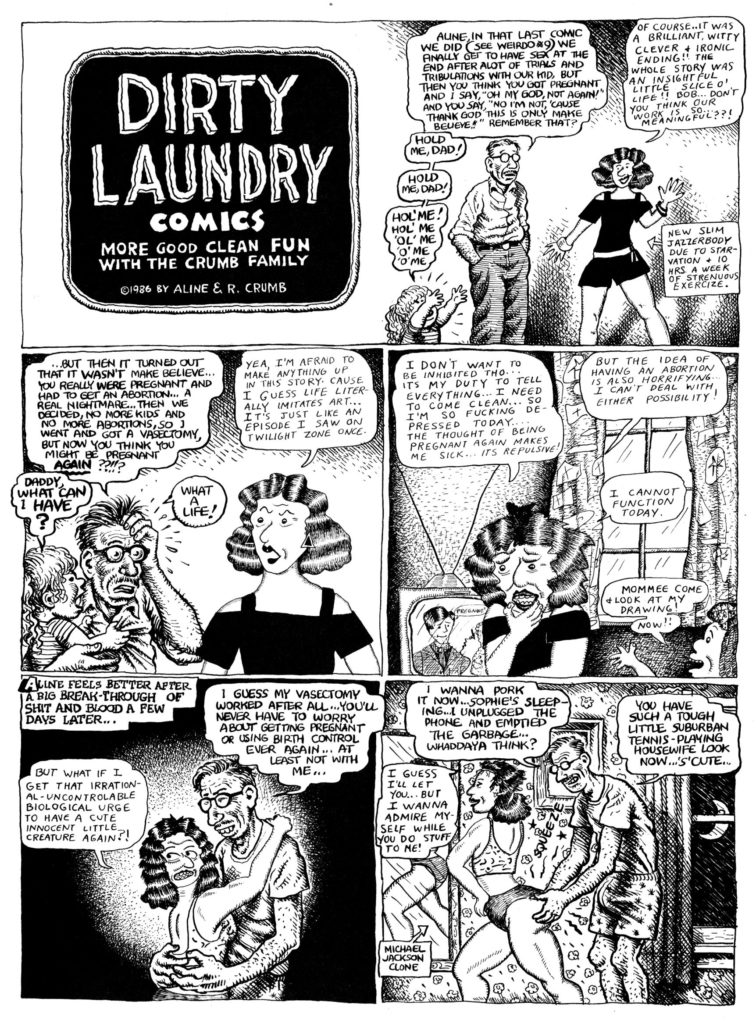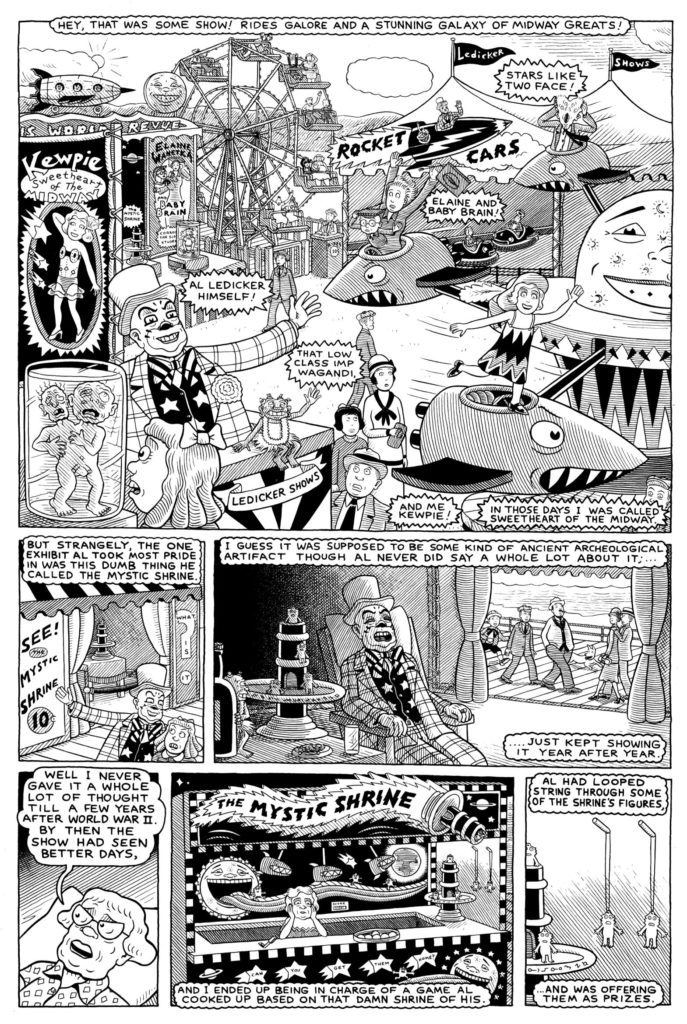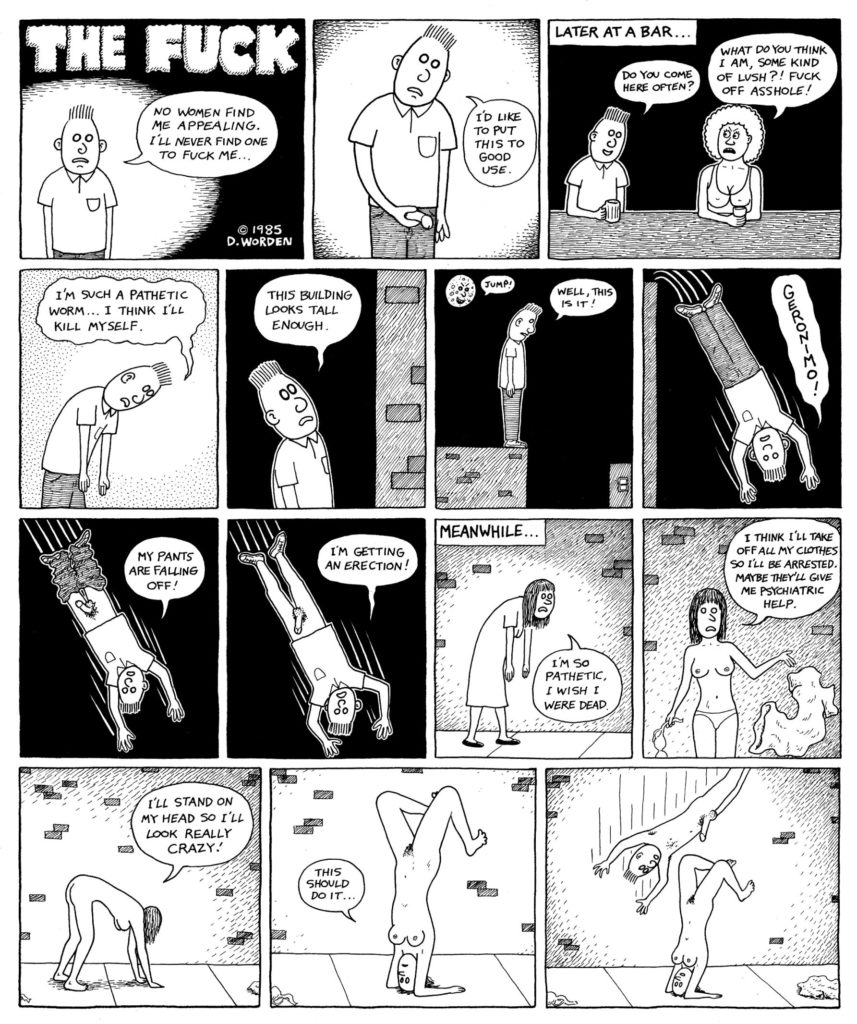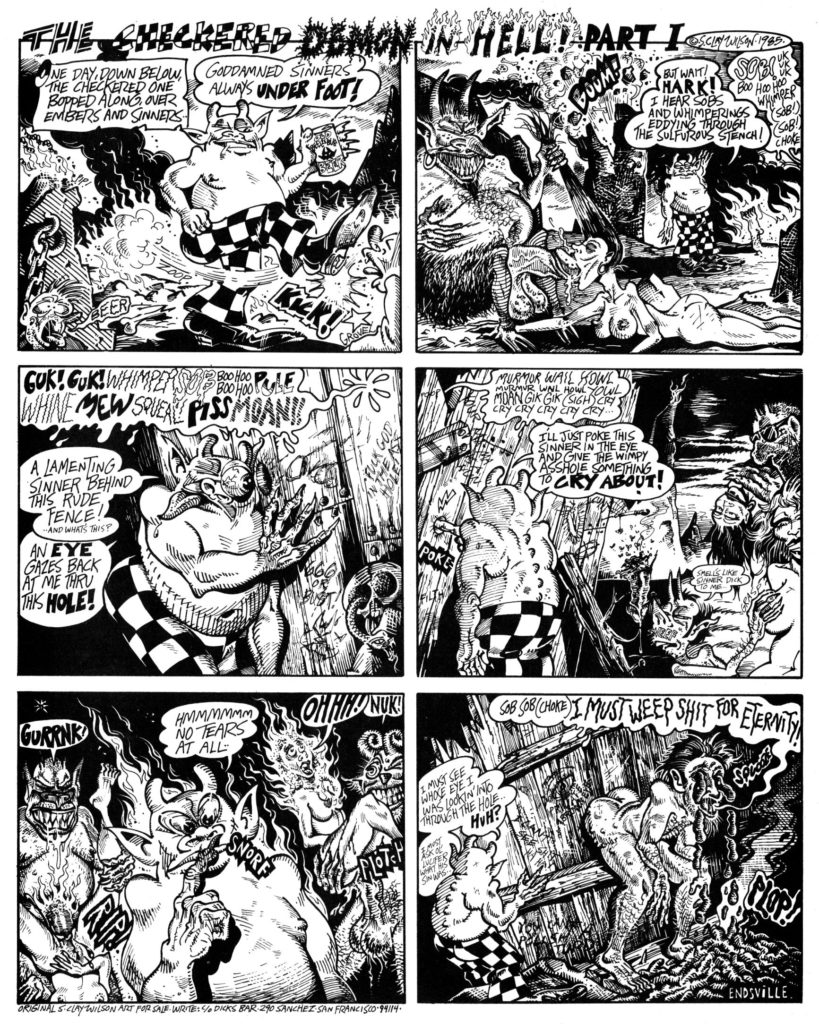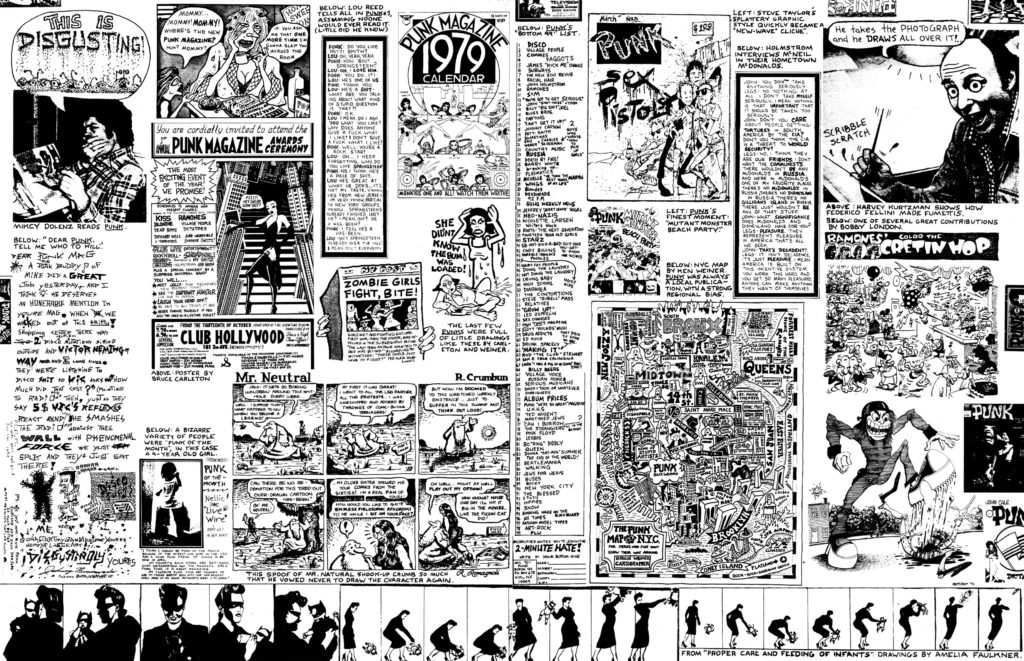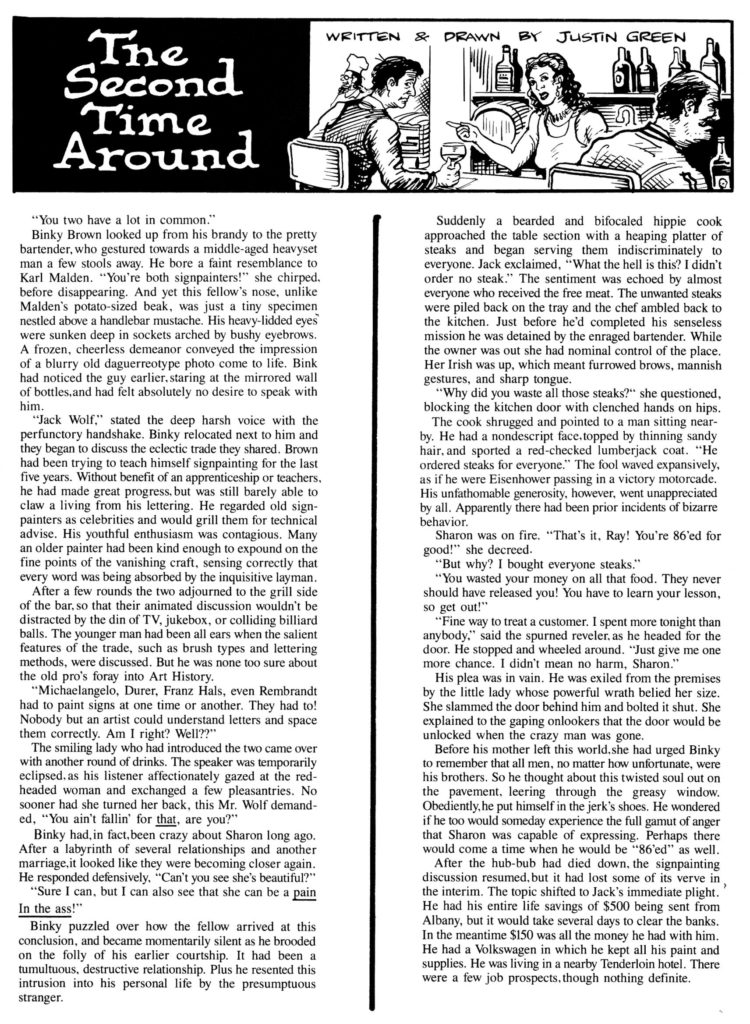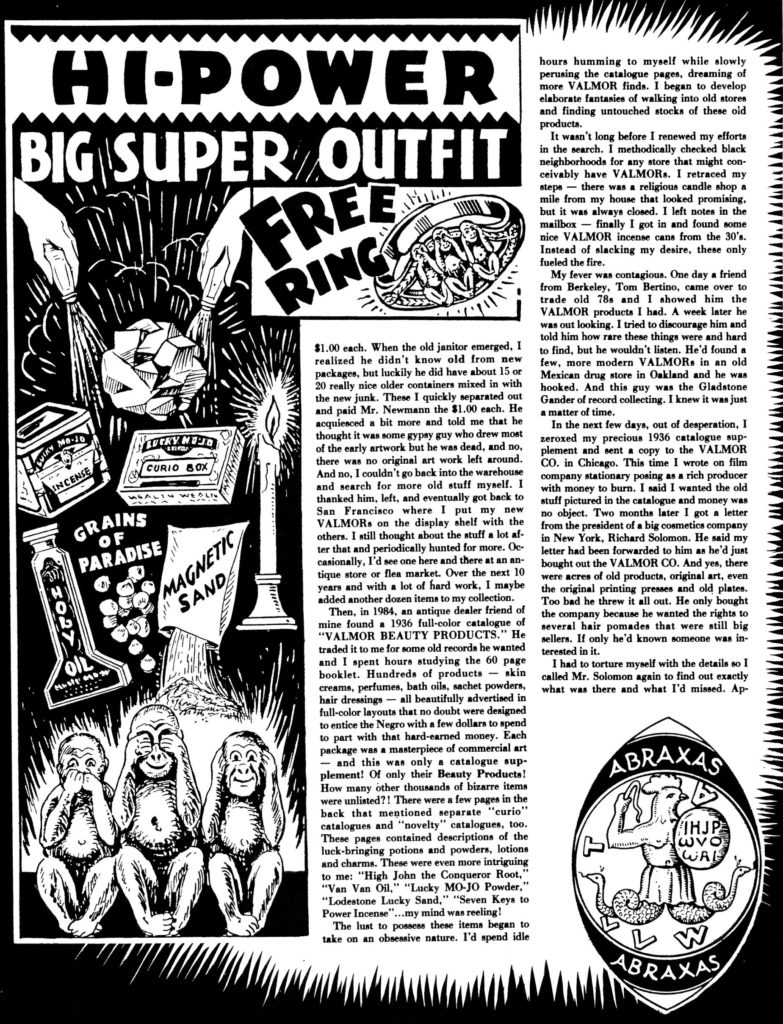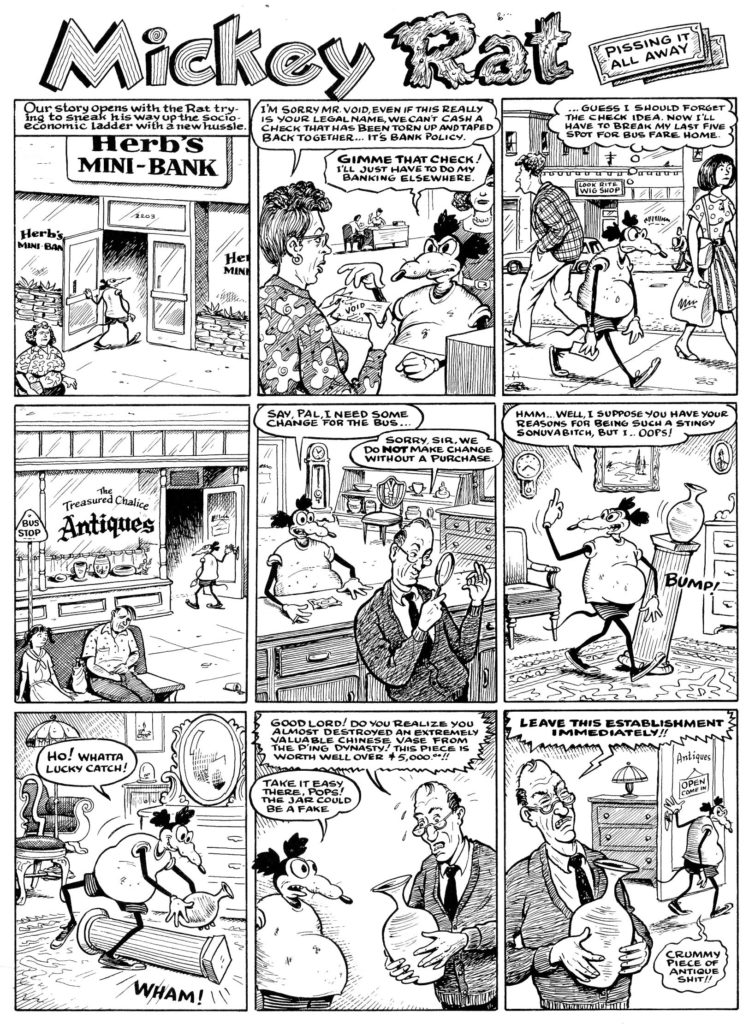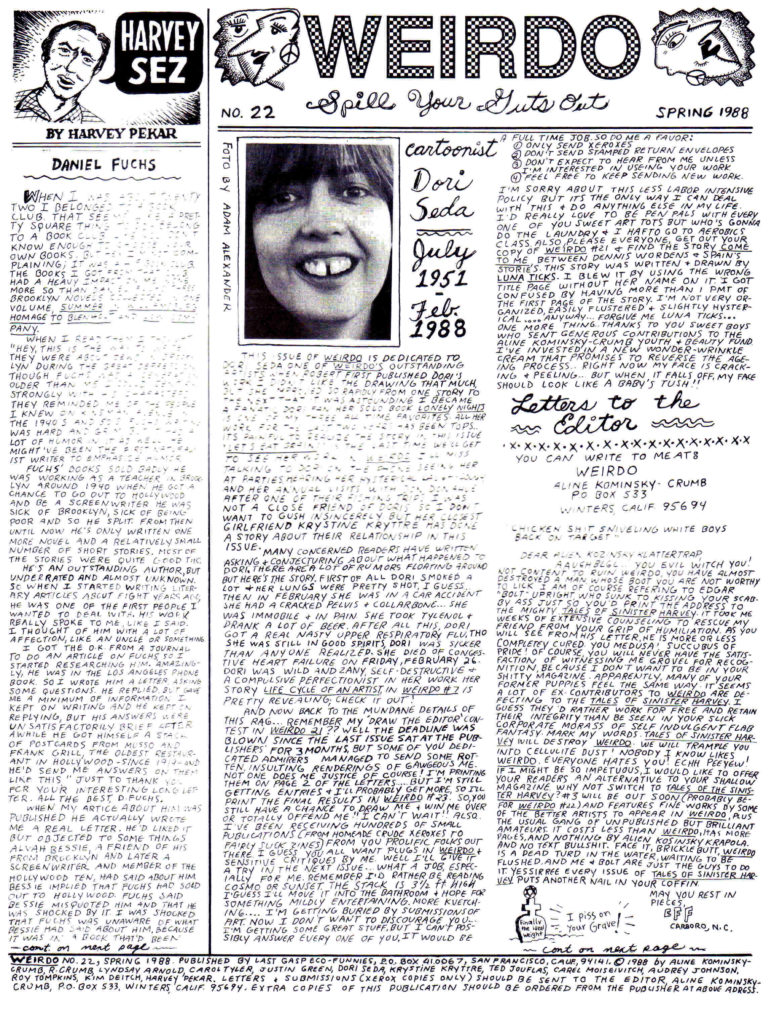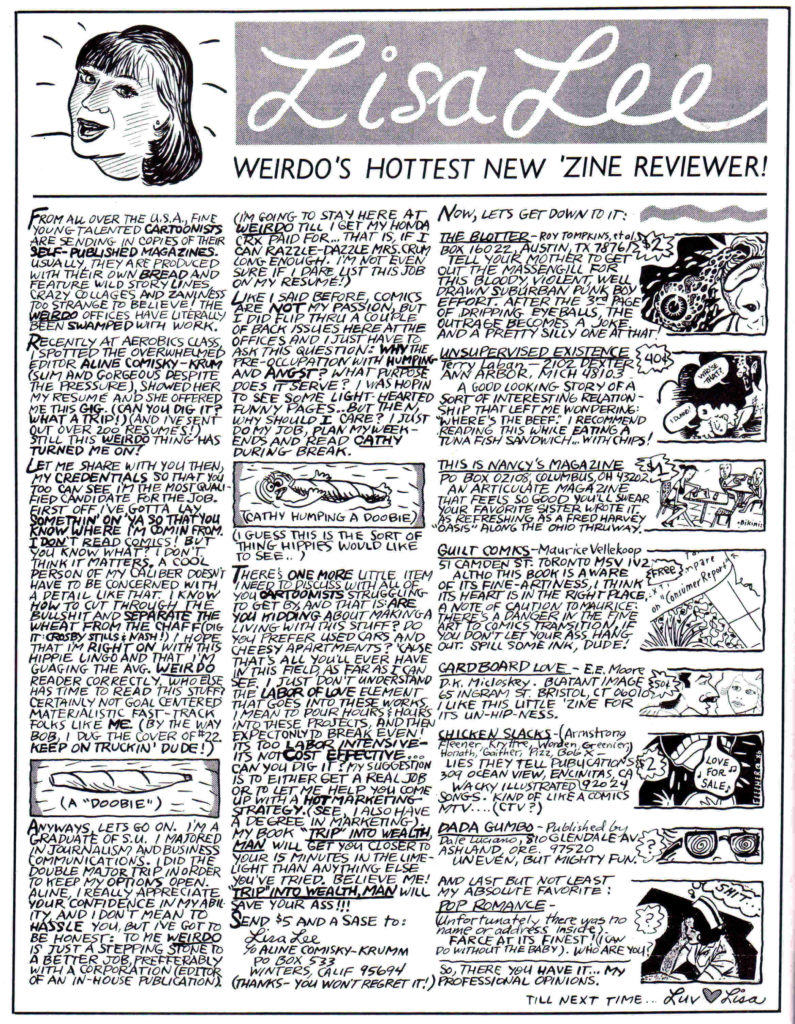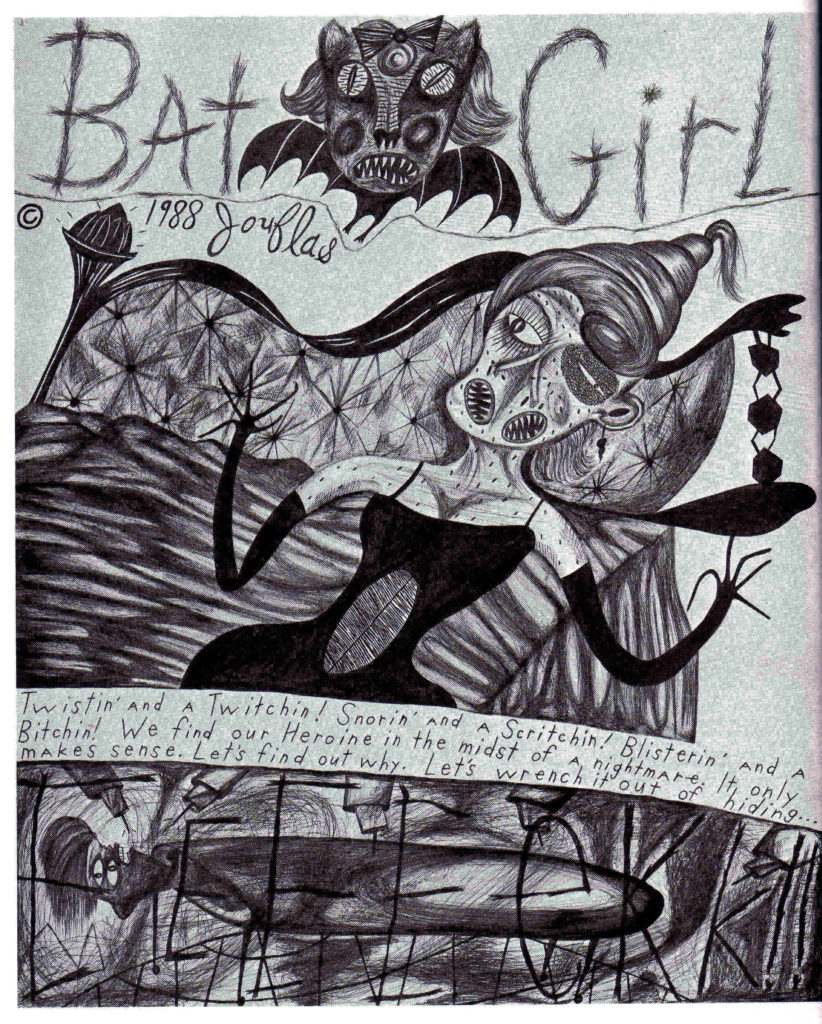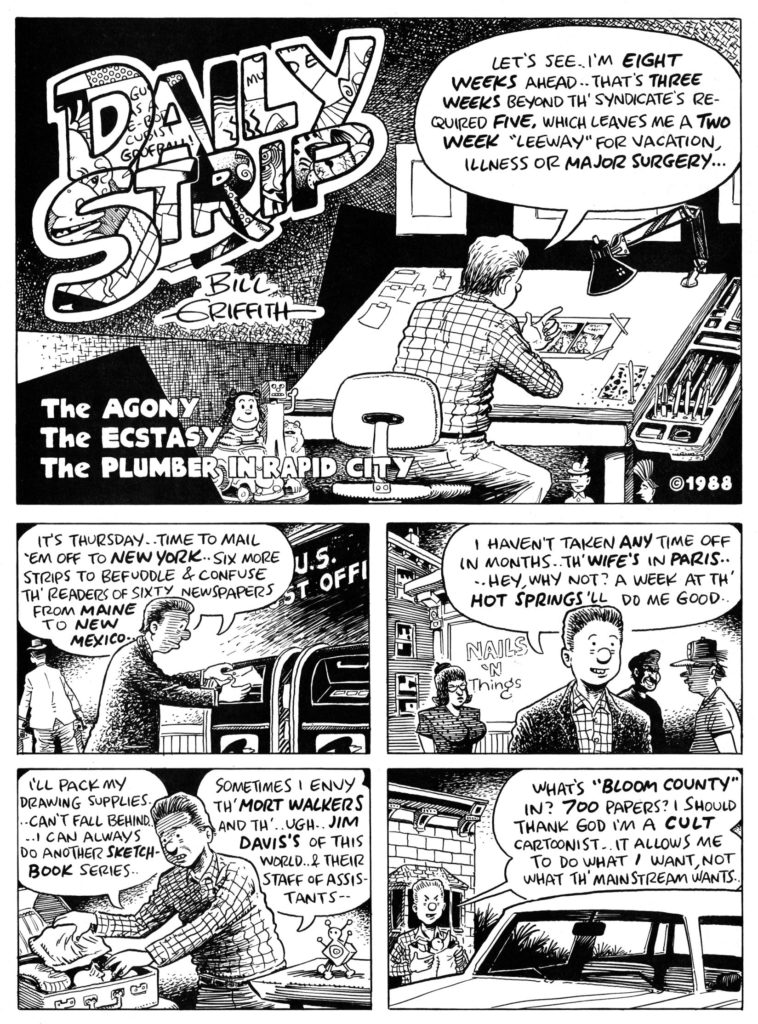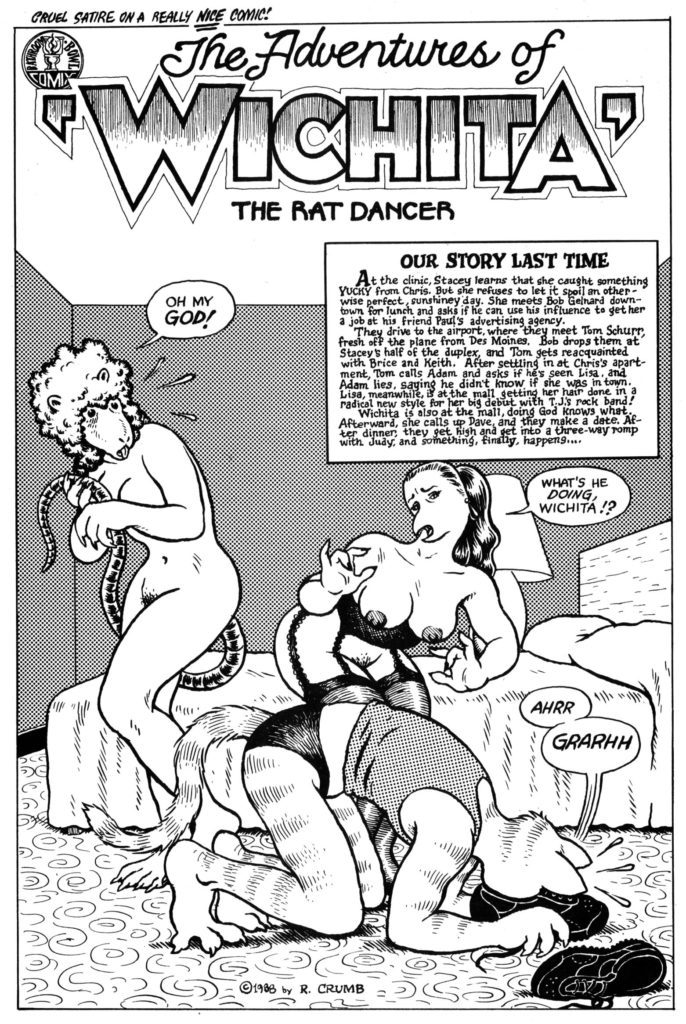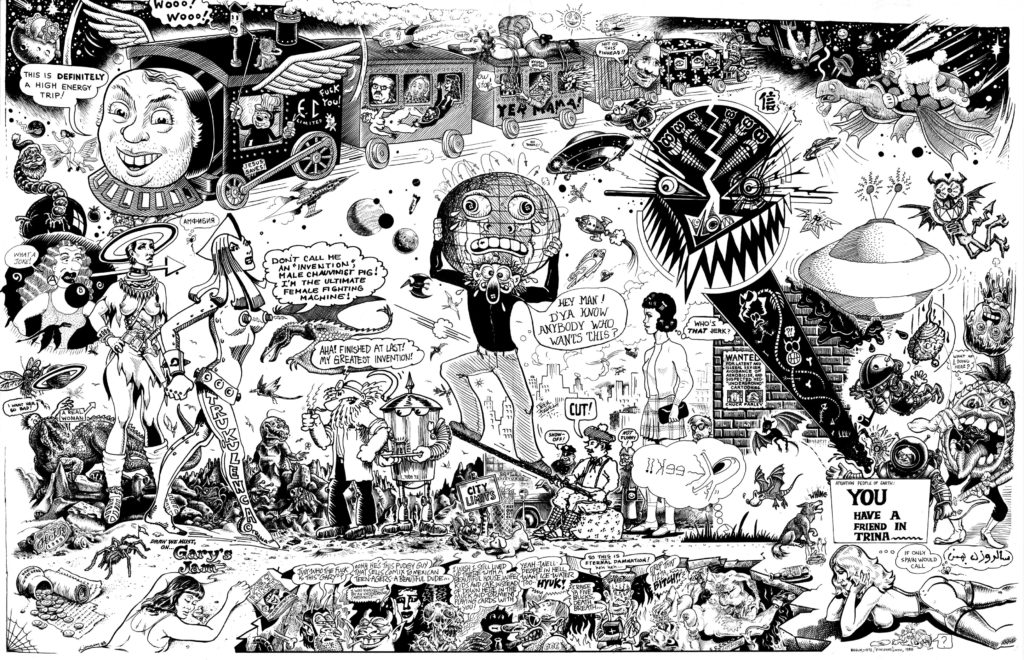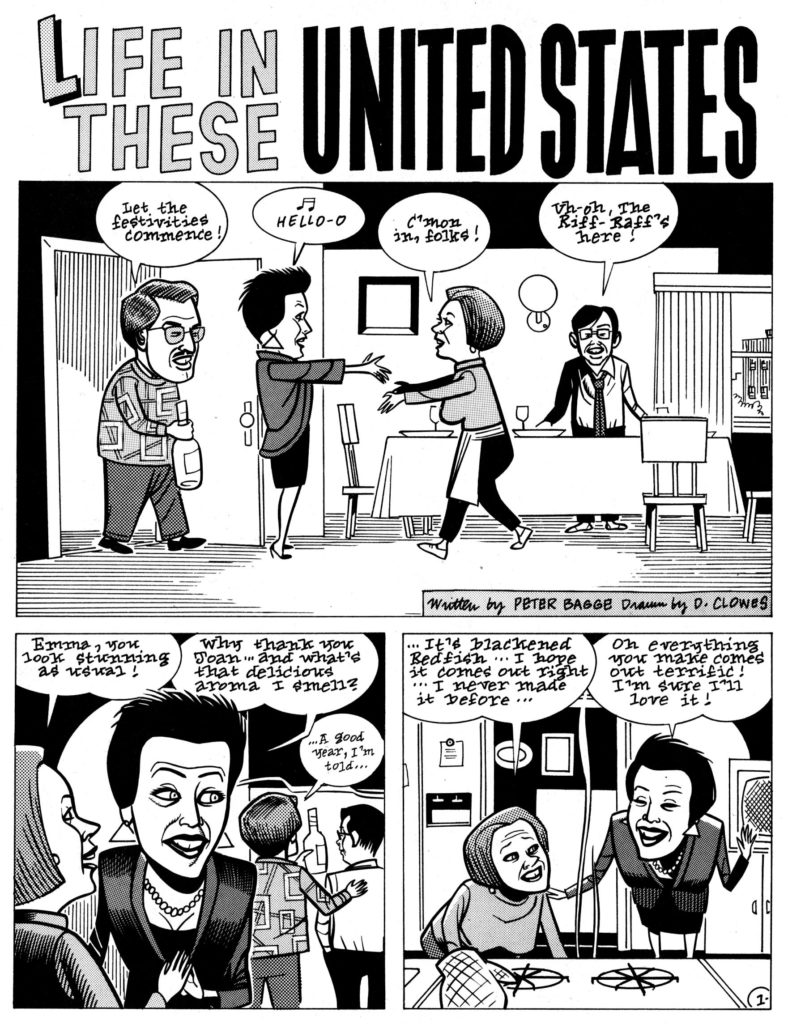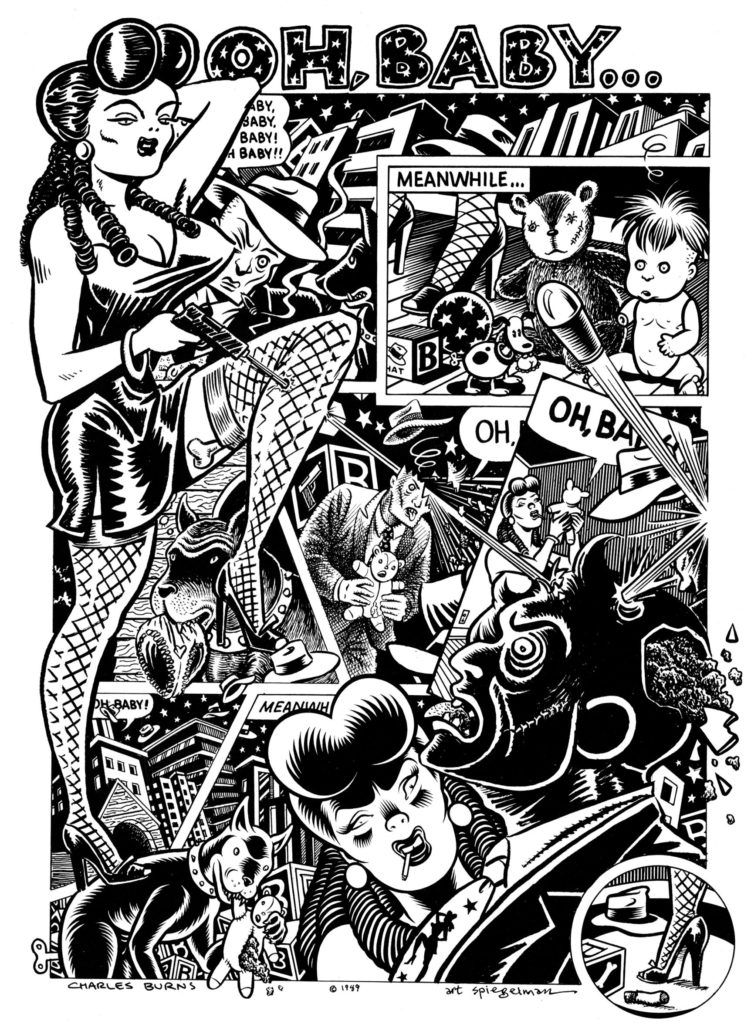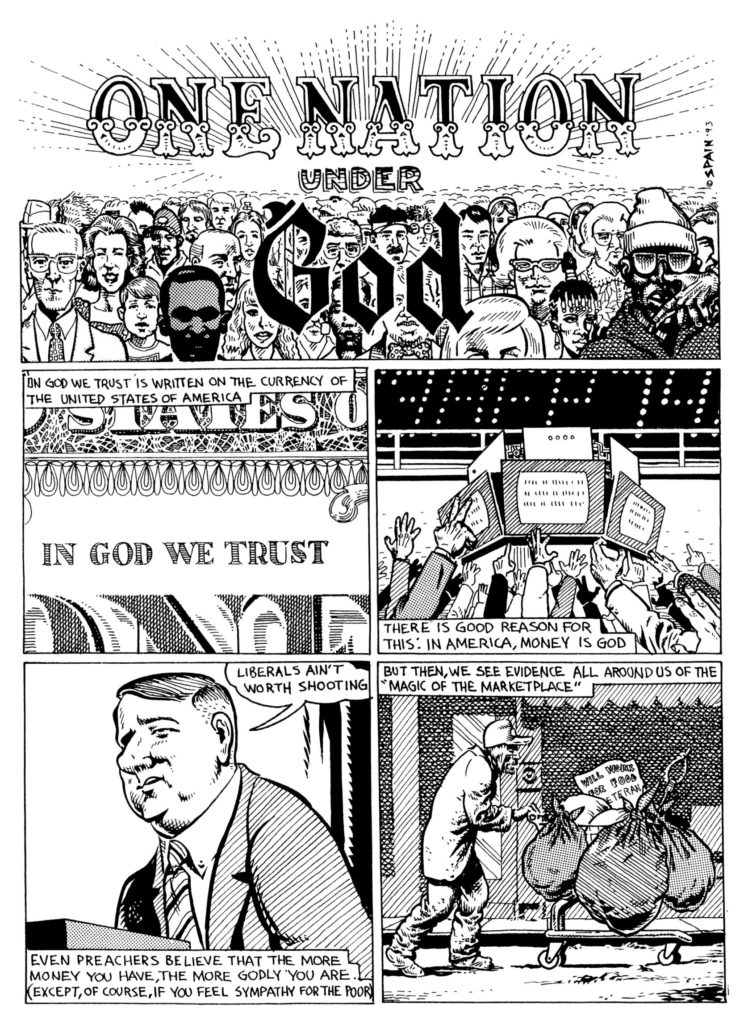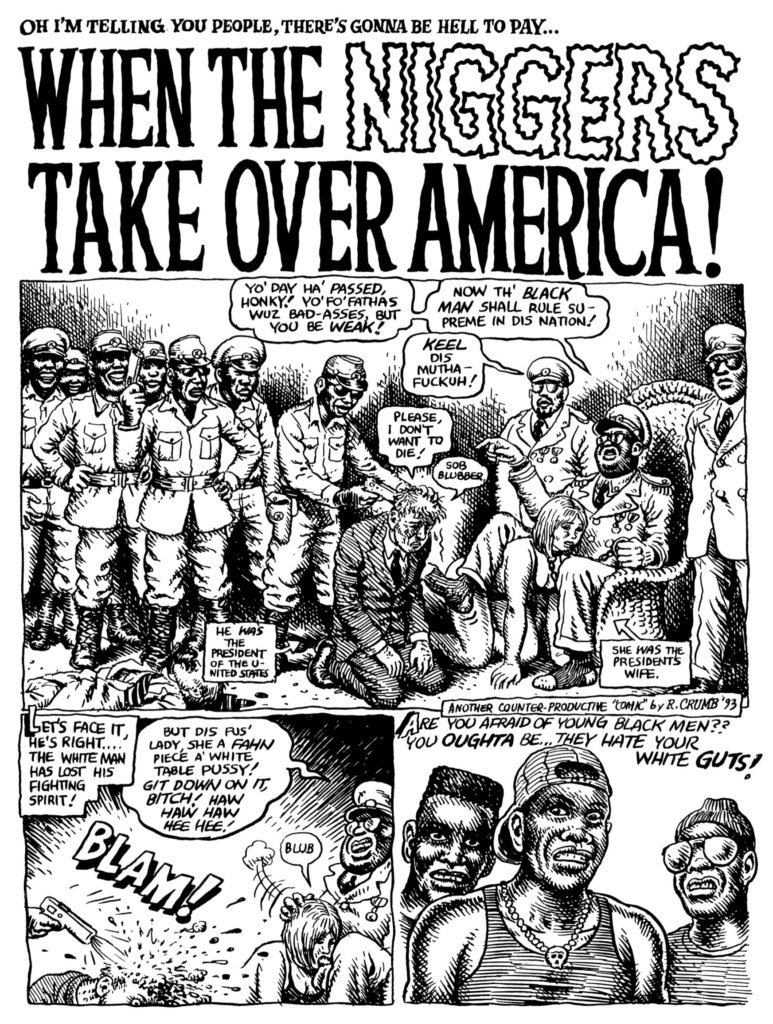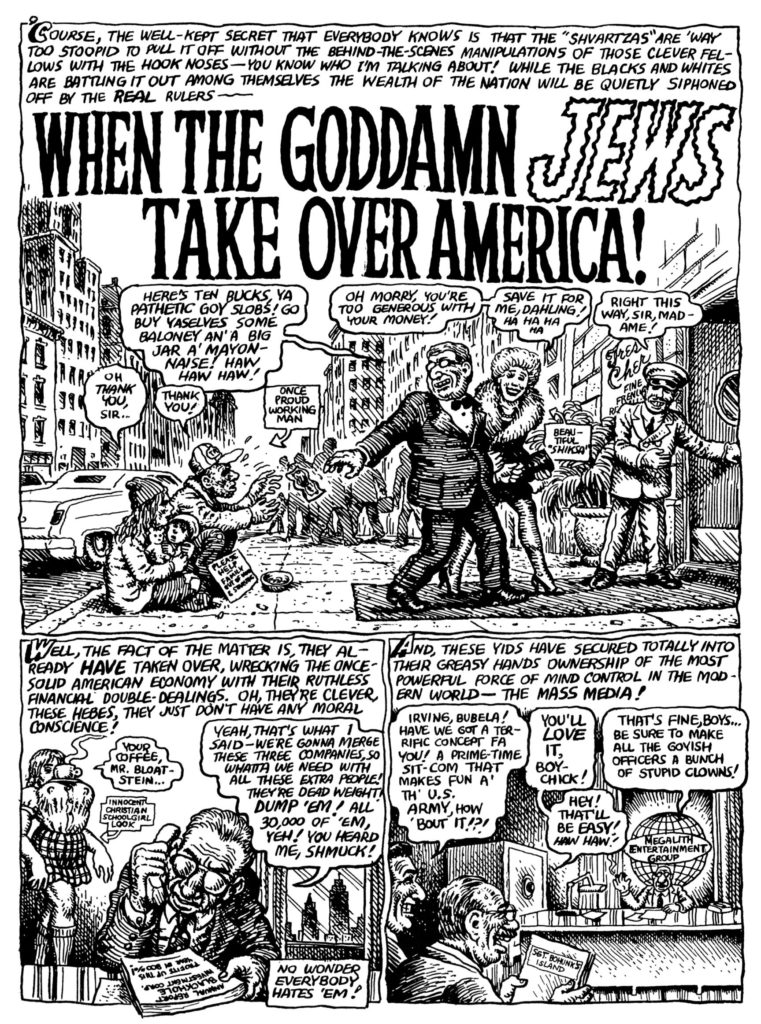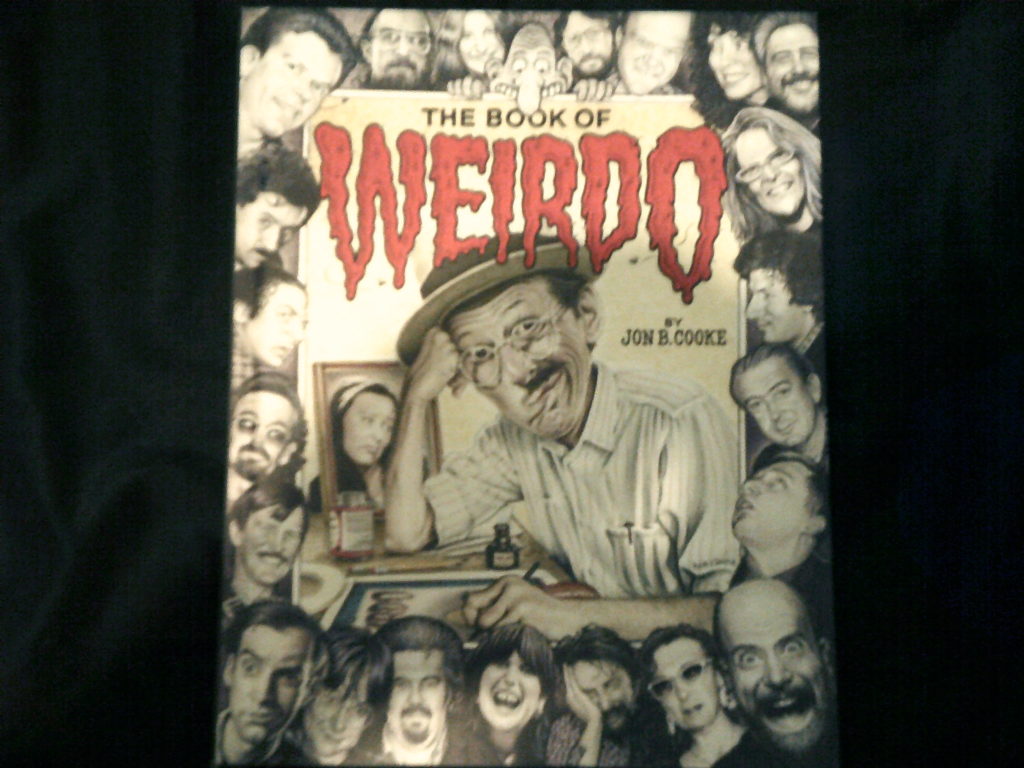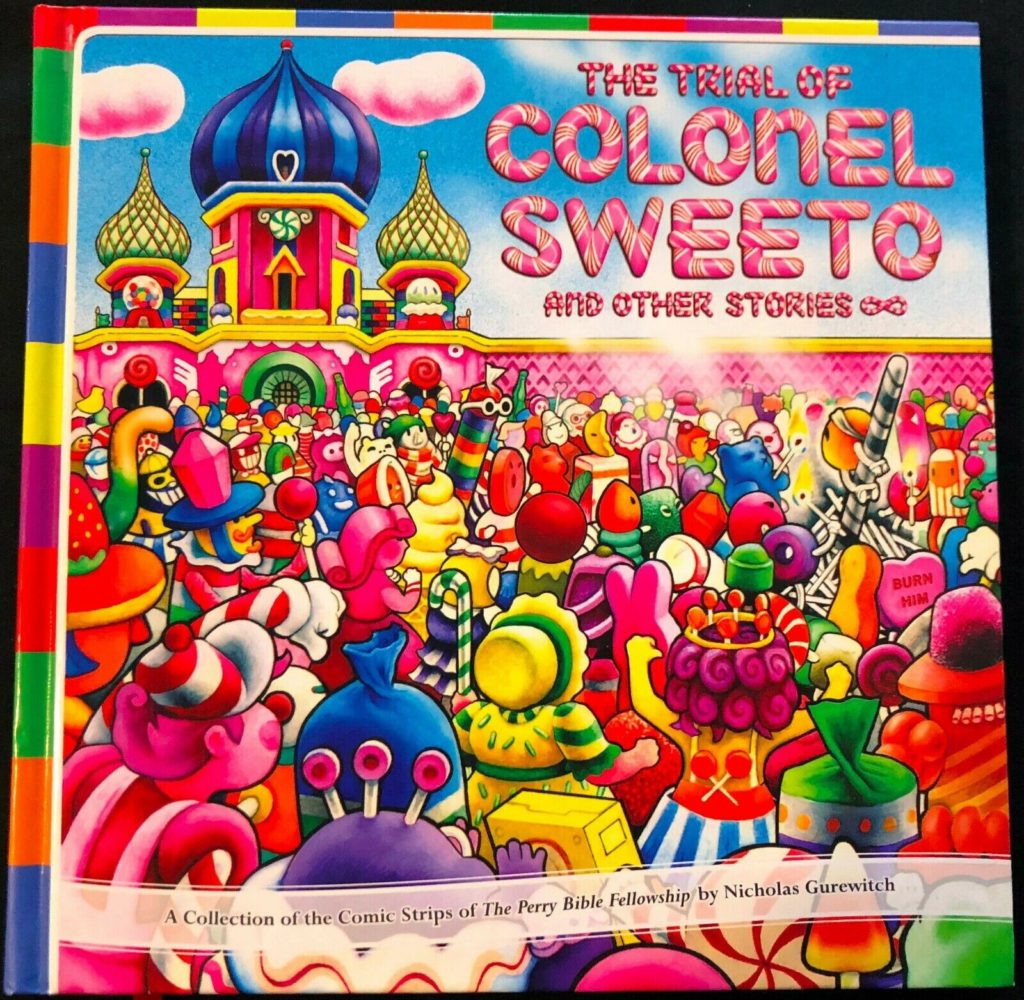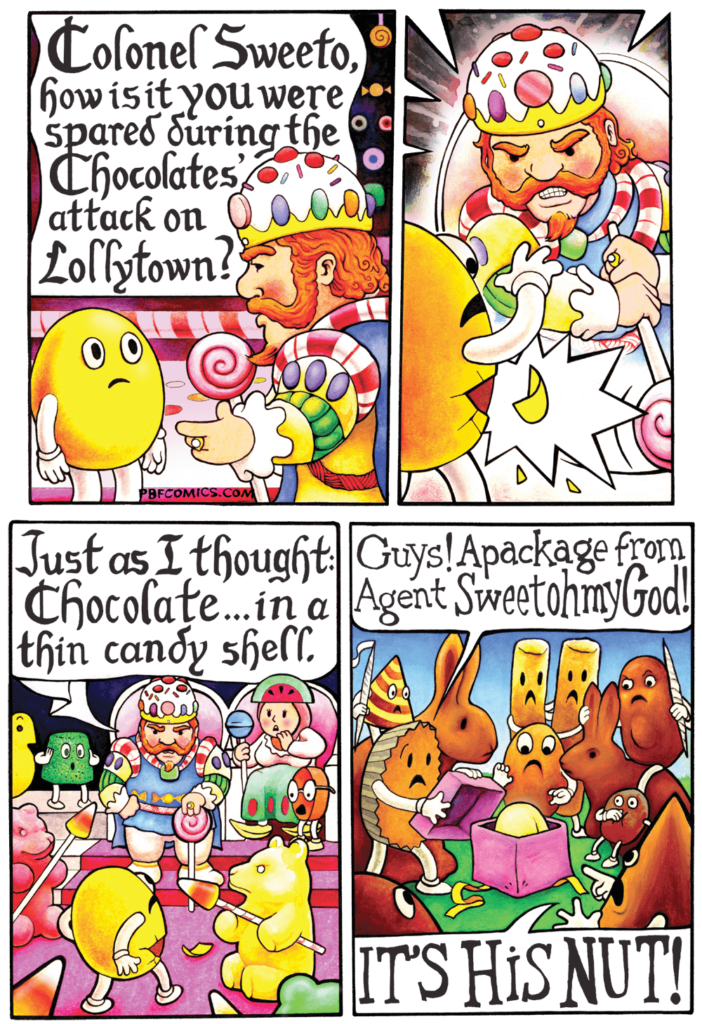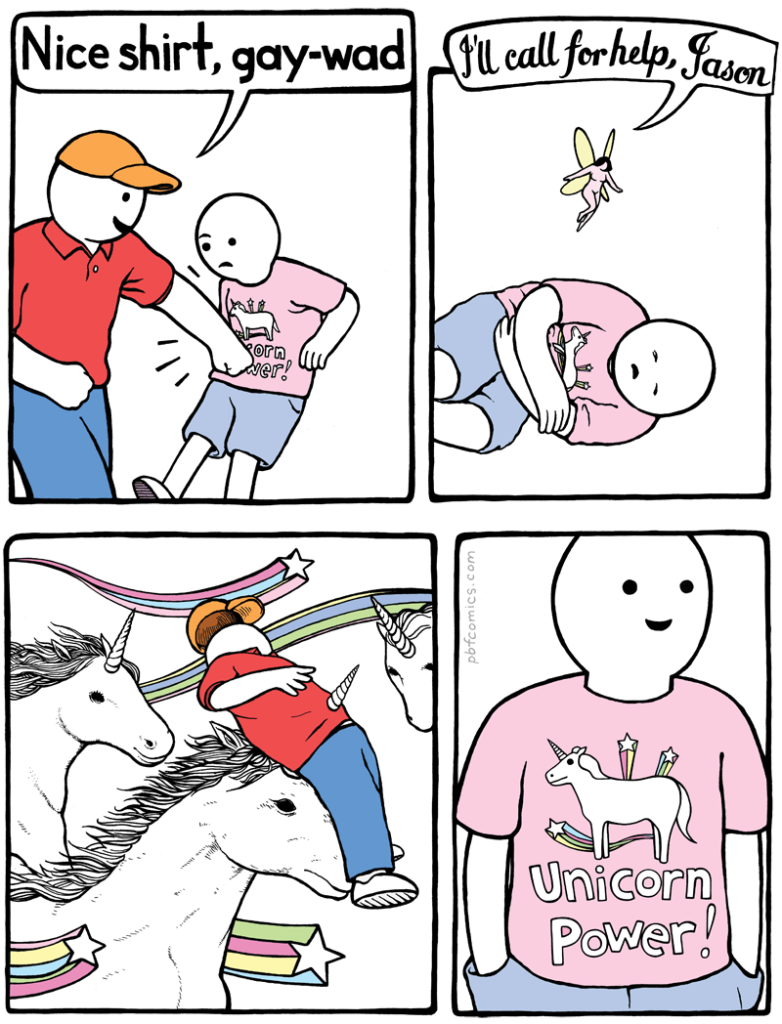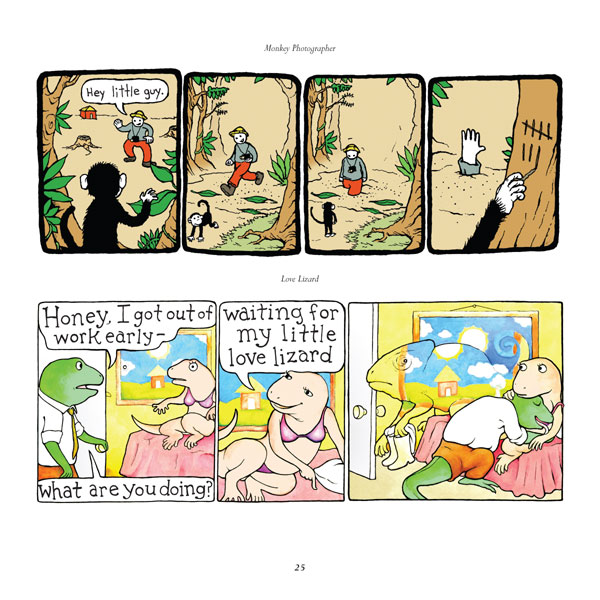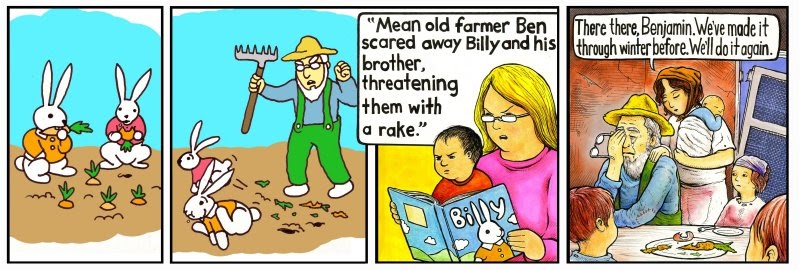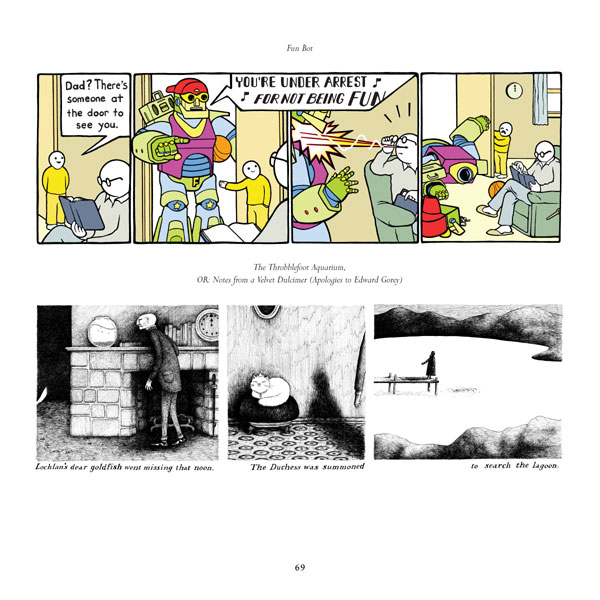My first encounter with “Blab!” was issue eleven. I was in some independent bookstore in So Cal looking for weird art shit as usual, this was in 2003 I’d heard of “Blab!” Before and had seen the covers but none of them snagged me until I saw the weird Mark Ryden illustrated cover. It was my first introduction to Ryden, I picked up the large book and thumbed through it, the book reached up and bitch slapped my retinas. After being beaten black and blue, my eyes sore, I bought the thing and later bought volumes sporadically as the years went by. I’ve gone through two house fires, numerous psycho ex girlfriends stealing and/or destroying my stuff and moves and I lost my original “Blabs” and forgot about them. Eventually I started trying to find artwork by Al Columbia, I’d found out he’d done a rendition of “The Book of Revelations”, nightmare Fleischertoon style, for “Blab!” Volume ten. Trying to find volume ten was like trying to find a needle in a haystack because of the Al Columbia strip but trying to find this one book rekindled the flame of my interest in “Blab!” And if I was gonna start collecting all of the “Blabs” I had to find ten so I had a complete collection. I searched high and low, almost in despair, nobody had it, that is until I saw there was a copy on Amazon Japan, so I had to contact a Japanese shipping export company to buy it for me and ship it for me. Once I got it I went about collecting all the “Blabs”.
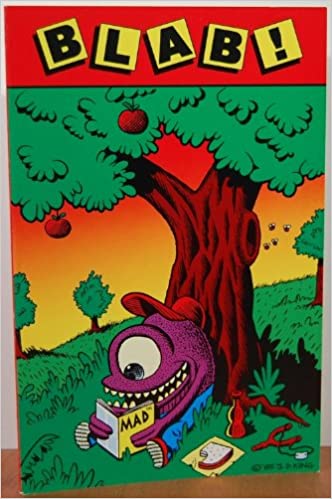
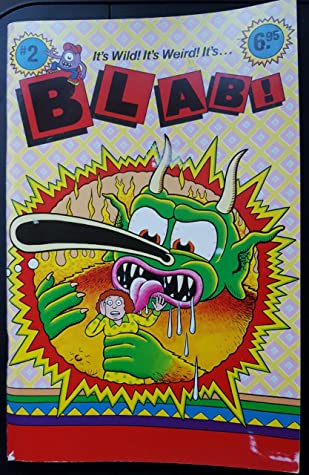
Issues one to seven are a smaller size, A5 format, and edited by the great Monte Beauchamp, the first issue features more text and less art and comics, it mainly focuses on the 1950’s EC horror comics that were banned and how they influenced various underground artists like Kim Deitch, Bill Griffith, Rick Griffin etc. Some of the same artists do some artwork for the issue. Issue two features still more text than art and comics, now there is a feature “Blab Dating” with artists doing different grotesque renditions of “Blab!” Dating prospects, the Mars Attacks! Card creator, Len Brown, is interviewed, Daniel Clowes does a strip on EC Censor Wertham’s first book “The Show of Violence”, Gary Arlington and his love of EC comics is shown in a an interview and parodied by Kim Deitch in a strip, EC and early Will Elder “Mad’s” influence is explored by various underground artists. Both issues were put out by Beauchamps own imprint, Monte Comics from 1986-1987, when Kitchen Sink Press took over the title they printed new editions of “Blab!” Volume one and two.
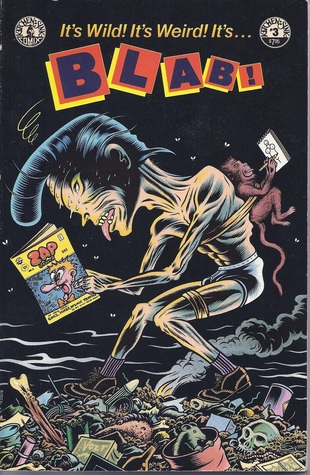
Issue three sees Daniel Clowes doing a strip on another of the censorious Wertham’s books that led to the crack down on comics in the 1950’s, “Seduction of the Innocent”. Spain joins in with his reminisces of 1950’s Buffalo, New York in “Tex’s Bad Dream”. Richard Sala follows the life of a censor in “What the Censor Saw,” Bhob Stewart investigates Bazooka Joe and his origins in “Bubbling Over”, Joe Coleman does a piece on the infamous “Casanova Killer” in “The Final Days of Paul John Knowles”, Kim Deitch features an excerpt from a story that would be completed in “Zero Zero” (I review the whole “Zero Zero” series here https://www.noisepuncher.net/2021/09/30/five-four-three-two-one-zero-zero-comix/ get zeroed out, babe) in the strip “Wagan Island”, Richard Sala spears televangelist hypocrisy in “A Date with the Devil,” Blab’s Date Department piece continues and various underground artists talk about Robert Crumb’s influence on them, the content is starting to become more art and less text. This is when Kitchen Sink Press takes over publishing “Blab!” in 1988 from issues three to eight.
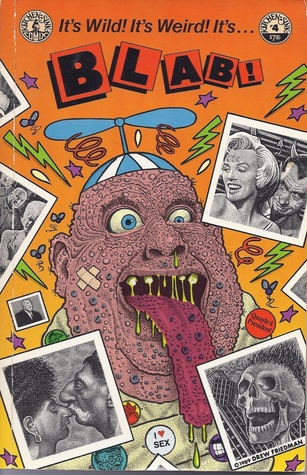
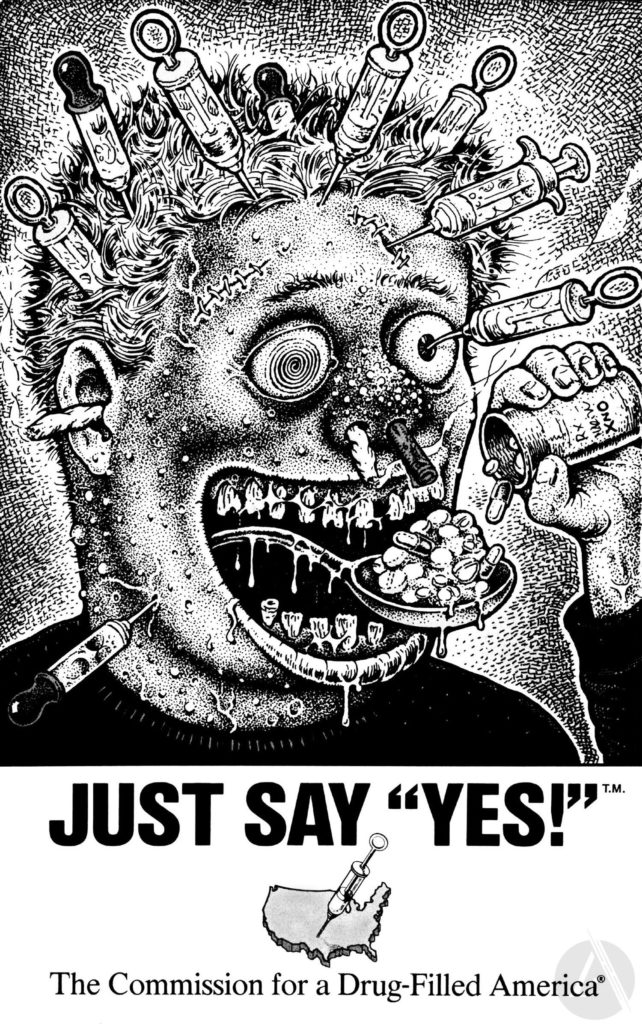
Issue four has more comics than text, Daniel Clowes dives head first in the apocalypse in “666”, Spain dishes on his old friend in the 1950’s in “Fred Toote Rides”, Richard Sala talks subliminal advertising in “Hypnorama”, Jaxon talks underground comix in “Comics or Comix”, “Blab!” Does the “Dating Depot” thing with ugly dates, Doug Allen brings his cowboy hat wearing character Steven in “Steven Flips Out”, Skip Williamson has his recurring character Snappy Sammy Smoot go to work in the corporate world in “Death Merchant”, Monte interviews Daniel Clowes into “Behind the Eightball”, Jay Lynch and Gary Whitney brings the “Bix” in “The Best of Bix”, “The Wages of Sin” brings Joe Coleman’s criticism of religion to the pages and Mark Newgarden talks “Garbage Pail Kids” in “Garbage, Gum and Lawsuits”.
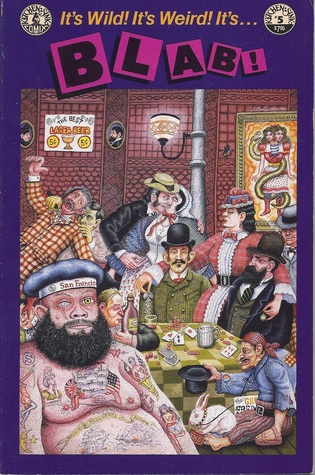
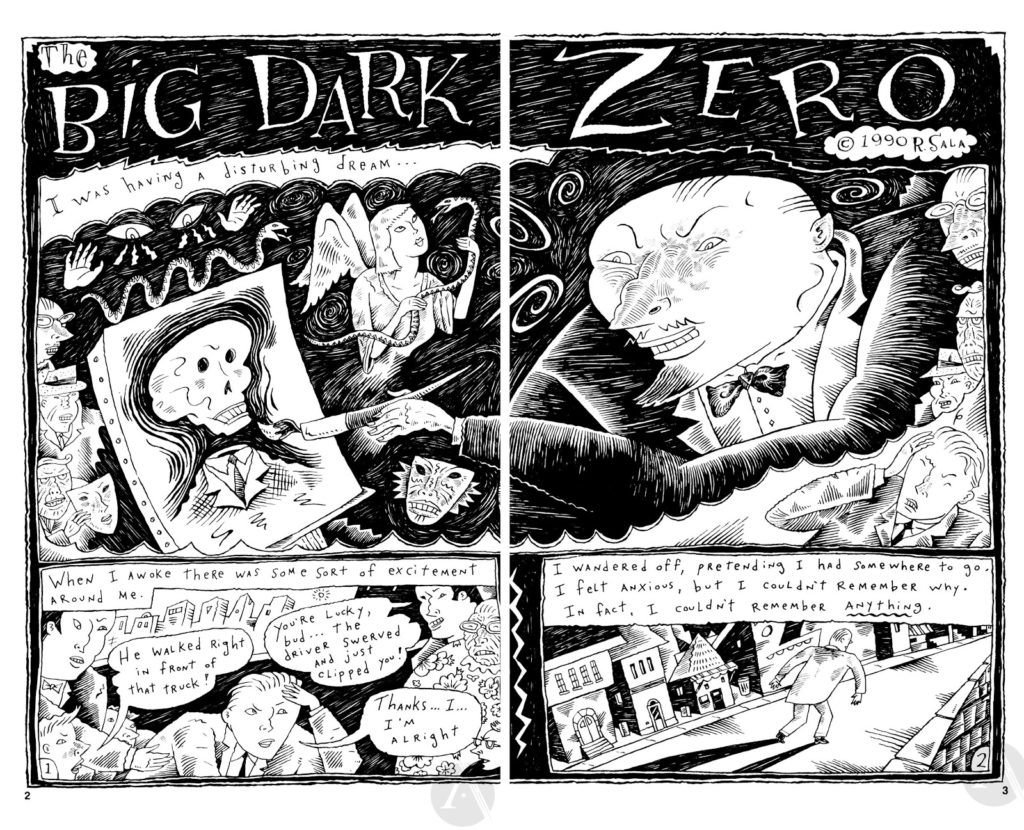
Issue five is when “Blab!” Goes majority comics and art with some text, in this one Richard Sala does triple cross in the art world in “Big Dark Zero”, Lloyd Dangle does a strip on Deborah Harry (yes that one) and other victims escaping the clutches of notorious serial killer Ted Bundy in “Lucky to Be Alive”, Joe Coleman tells the tale of serial killer Carl Panzram in “Carl Panzram #32614”, Ray Tone talks crime comics of the 1940’s and 1950’s in “The Rise and Fall of the Crime Comic Book”, Doug Allen has his cowboy hat wearing Steven in the air in “Steven in Thin Air”, Spain tells about his youth in the 1950’s and the neighborhood bank robber “Wilcoxson Naussbaum”, Skip Williamson lands Snappy Sammy Smoot in the middle of adopting his thug nephews in “Self Titled”, Daniel Clowes draws a tale of a life owed for death in “One for the Father”, Joe Coleman is interviewed by Monte, and Dan’s brother James Russel Clowes spins a murderous yarn with illustrations by Richard Sala.
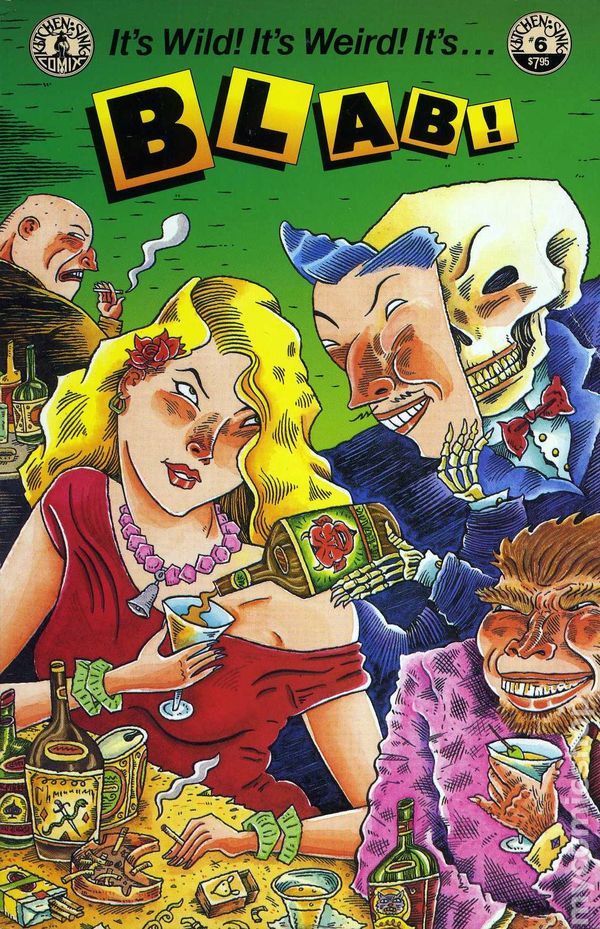
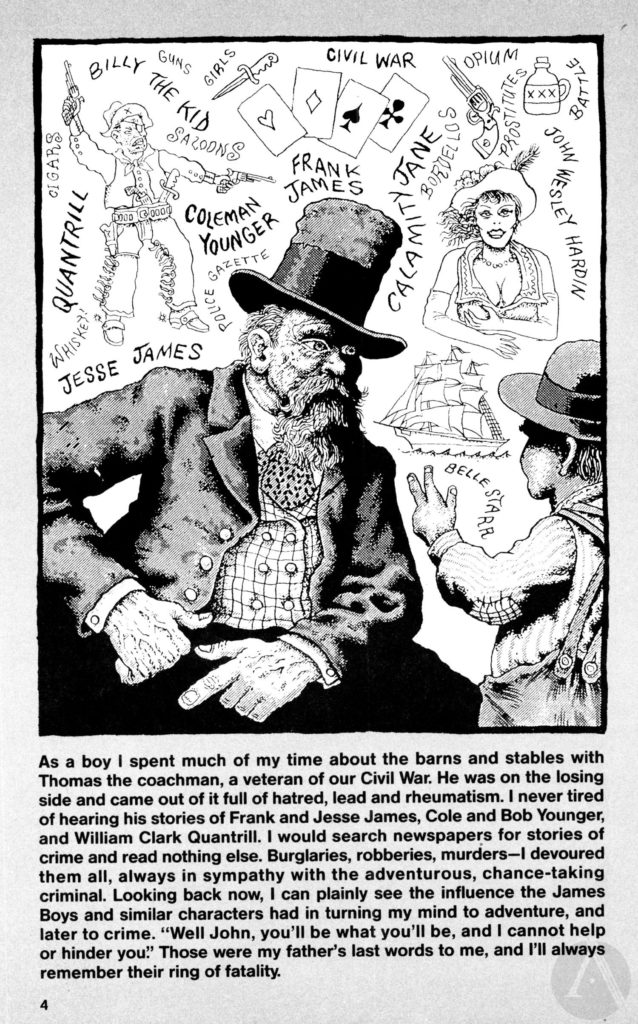
Issue six is an “Alcoholic” issue. To start in the inside cover Mary Feelner discusses her parents, alcoholism and herself in the strip “As American as Mom, Apple Pie and Martinis”, Joe Coleman does a write up of old west career criminal and hobo, Jack Black in “You Can’t Win”, Richard Sala does a whodunnit murder story with a bizarre twist in “Where is Christine Brooder?”, Lloyd Dangle does a strip on a real life alcohol fueled murder committed by a couple in “Mixture for Murder”, Doug Allen brings cowboy hat Steven back in a strip with a drinking competition with a talking cactus in “Steven in the Show Down”, Skip Williamson has a lush, vomiting, pink elephant watcher going down for the count in “Necropolis Keester”, Monte Beauchamp and John Pertrie do a write up on alcoholic cartoonists and its illustrated by Daniel Clowes titled “Alcoholic Cartoonists”, “The Lying Ear” has Frank Stack doing a strip about the alcohol fueled and contentious friendship between Vincent Van Gogh and Paul Gauguin, the “Blab Dating Depot” goes digital with Mark Landman and Monte Beauchamp, Spain talks alcohol in his 1950’s youth in a black r and b/rock n’ roll dive called “Down at the Kitty Kat”, Skip Williamson has Snappy Sammy Smoot being targeted by the IRS in “Travail, Misery, Disillusionment and Pending Oblivion with Snappy Sammy Smoot”, pets get sloppy drunk in Gary Leib’s “Pets That Drink”, Josh Alan Friedman writes a tale of prostitutes and booze and Richard Sala illustrates in “Babes on Broadway”, and Justin Green does a one pager “Great Moments in Alcoholism, Las Vegas 1967”, on the story of his father drinking numerous shots of straight Jim Beam and telling Frank Sinatra and his crew to shut up when they were loud while his friend Clancey Hayes played on stage.
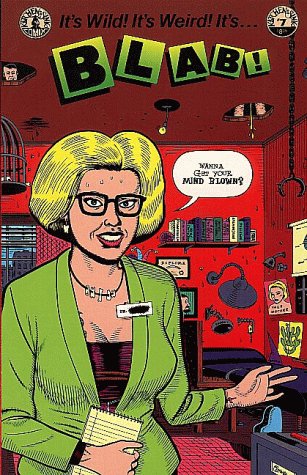
Issue seven is the last of the A5 size format with a Daniel Clowes’ covers and Chris Ware does the inside covers and back covers with “Jimmy Corrigan, Smartest Kid on Earth” strip with a mix of fantasy and brutal, creepy reality where each bleeds in Jimmy’s memories and then Jimmy can’t tell what is fantasy or reality, Joe Coleman does “Boxcar Bertha, an Autobiography” his way on the trials and tribulations of a woman hobo, Mary Fleener does a strip on how her husband and herself deal with a dysfunctional couple that are their friends (one who is into pyromania) in “Ashes of Passion”, Doug Allen’s cowboy hat wearing Steven does noir in “Bang”, Gary Leib talks about mental health in an abstract way in “My Mental Health??? Fine”, Spain digs again back into his 1950’s youth in “The Shadow of Fred Toote”, Terry Laban talks about how porn ruined a man’s life and family in “Porn”, Frank Stack goes back into the past and talks assassination of William Shakespeare in “The Bad Must Die”, the drunkard Necropolis Keester drunk stumbles his way into being a corporate spokesman for a sham product in “Necropolis Keester Careens Off the Road to Recovery up the 12 Steps to Psychobabylon”, a man experiences the emptiness of living an urban life in “Tales from the Land of Plenty” by Marc Trujillo”, and Josh Alan Friedman writes up a tale of youth in a old folks retirement home illustrated by Richard Sala in “Come to Pa Pa.” This time the comics outnumber the text with Josh Alan’s story being the only text based thing in the whole issue.
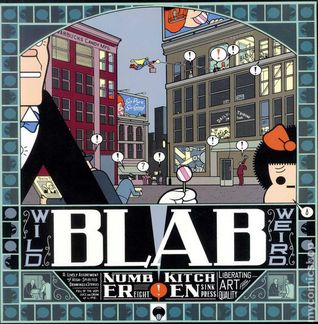
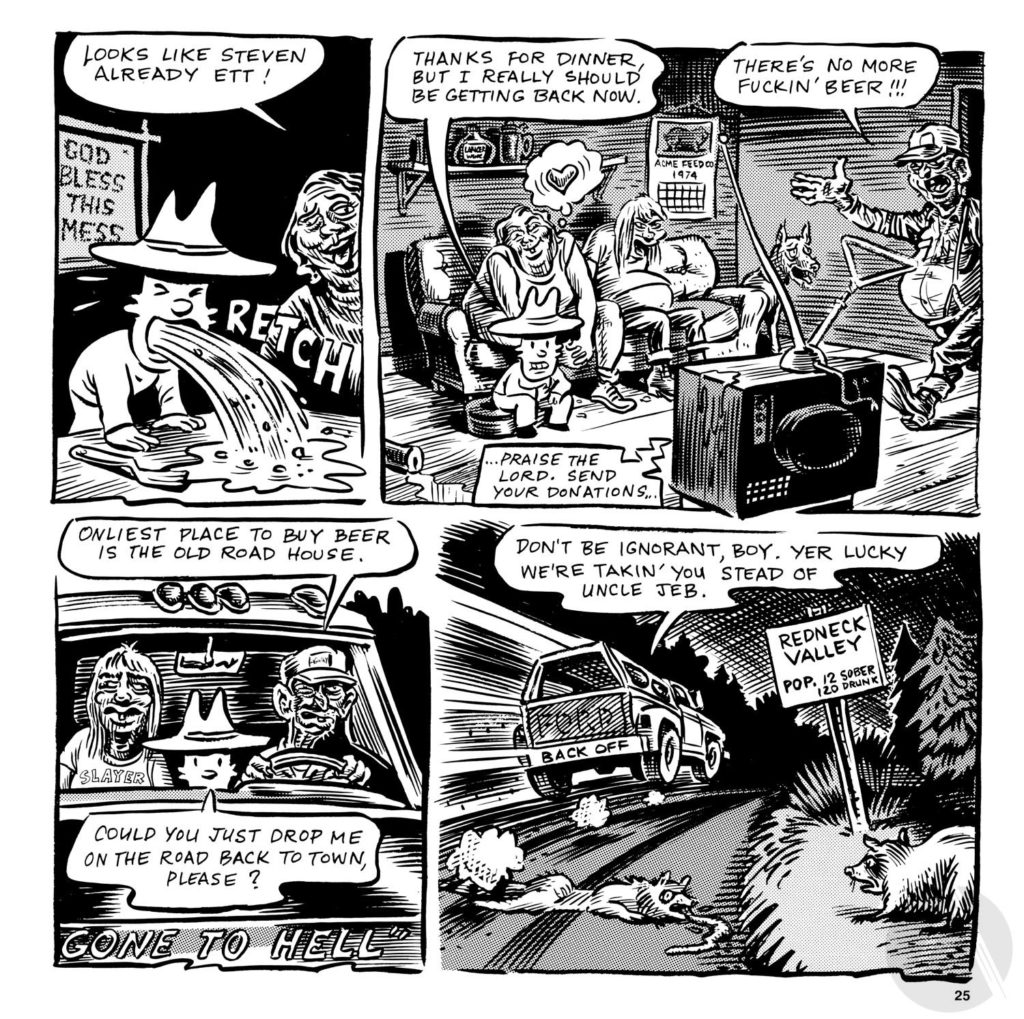
Issue eight goes into a bigger 10×10 format to better feature the art, to get this format kick started Walter Minus and Charles Berberian do their strip retro with a tale of jealous love, voodoo picture stabbing and a sci fi ending with “Somewhere Over the Rainbow”, Terry LaBan shows what happens when the sun comes out and the pants drop in “Mating Season”, Richard Sala does a strip on a man going to retrieve his father’s brain in “My Father’s Brain”, Doug Allen brings cowboy hat wearing Steven into redneckville in “Steven and the Morons”, Spain goes back in time again to his 1950’s youth and his favorite radio DJ in “Cruisin’ with the Hound”, Jeffery Steele does a text piece on haunted bars across America with illustrations by Johnathan Rosen “A Case of the Shakes”, Archie Prewitt brings on Sof Boy who gets roughed up by a metal head and his Rottweiler in “Sof’ Boy”, Gary Leib celebrates Halloween, old school, with “Halloween”, Chris Ware has Jimmy Corrigan on a island stranded in another installment of “Jimmy Corrigan, the Smartest Kid on Earth”, a robot goes through abstract adventures in Peter Hoey’s “Angry Gray Robot”, Peter Kuper talks danger on the high bridge in New York City in “The Beaten Path”, David Golden combines drawings with physical objects like matchbooks and beer bottle caps in a story of fiery lust in “Burning Love”, Monte Beauchamp explores the colorful art of the Valmor company in “Art of the Valmor Label”, Frank Stack talks Michelangelo, the painter’s sordid and criminal past in “No Hope No Fear”, Jeff Johnson illustrates a song by Jadydee Short in “Snake Doctor Blues”, Denis Kitchen, publisher of Kitchen Press does a comic on how he is more of a businessman and less of an artist, Marc Trujillo further explores the alienation of urban life with “Tales from the Land of Plenty”, and Drew Friedman talks his career with illustrations from himself and his brother Josh Alan Friedman does a prose piece about an elevator man who loses his cool with an insulting kid in “Elevator Ride”.
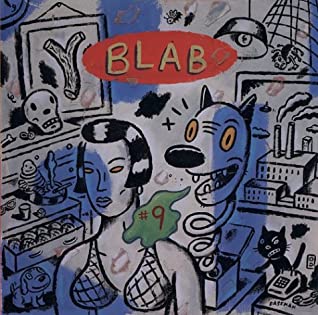
Issue nine Richard Sala has a man chasing a bird through a phantasmagorical crowd to get his invite to his own “Prestigious Banquet to Be Held in my Honor”, Walter Minus does obsession, retro style with “Priscilla”, Doug Allen has his cowboy hat wearing “Steven in Double for Danger” doing an amnesia noir thing, Charles Paul Freund writes and Peter Hoey illustrates a sad tale of the last days of a robot swing big band in “Valse Mechanique, The Mechanical Waltz”, Tony Fitzpatrick explores “Dirty Boulevard” with a series of dirty denizens on single page notebook paper, Baseman does philosophy his style in “Enjoy or Suffer”, Christian North East does a collage/drawing with retro ads and pictures in “Goodnight Irene”, Jeffery Steele tells the tale of a loner in the late 1940’s who shoots up his hometown with drawings by Teresa Mucha and Steve Campbell in “The Quiet Man”, Spain explores his late 1950’s youth and fights in diners in “The Fighting Poets”, Banquet has a transgender son taking revenge on his parents with a doll in “A New Version of Love”, Terry Laban does a strip on the extraterrestrial thinning of the human herd in “Park”, Marc Trujillo shows that no good deeds are left unpunished, especially in the city in another installment of “In the Land of Plenty”, “Sweet Grolo” and his invisible donkey wants to cook a dove he kills but can’t find anybody to do it by J. Bradley Johnsons, Peter Kuper talks about how watching the movie “Exorcist” as a young man has effected him into adulthood in “Exorcise”, “Sof’ Boy” by Archer Prewitt has Sof’ Boy homeless and being puked on by an alcoholic bum and being chewed on by rats, Monte Beauchamp does a piece on the cover art of the old Dell mystery books in “The Art of the Dell Mystery”, Nidlog has “Little Baby Gumba” going on a “Late Night Walk” that goes to drunken hell, Chris Ware explores a strange future in “Tales of Tomorrow”, Josh Alan Friedman spins a tale of a sad husband of a former 1960’s girl group singer trying to chase down the fame she lost via the nostalgia circuit with illustrations by Randee Ladden in “The Nostalgia Rapist”, and Boris Artzybaket’s factory based on his animal/human/mechanical hybrid art work is featured by Beauchamp in “Visual Thunder”. Starting in 1997 with this issue Fantagraphics took over publishing and kept the large format, they stopped publishing “Blab!” in 2007 with issue eighteen.
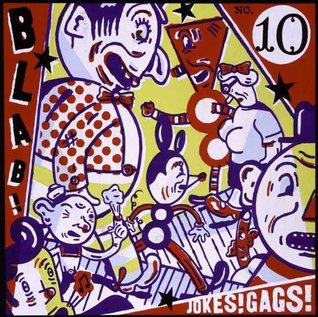
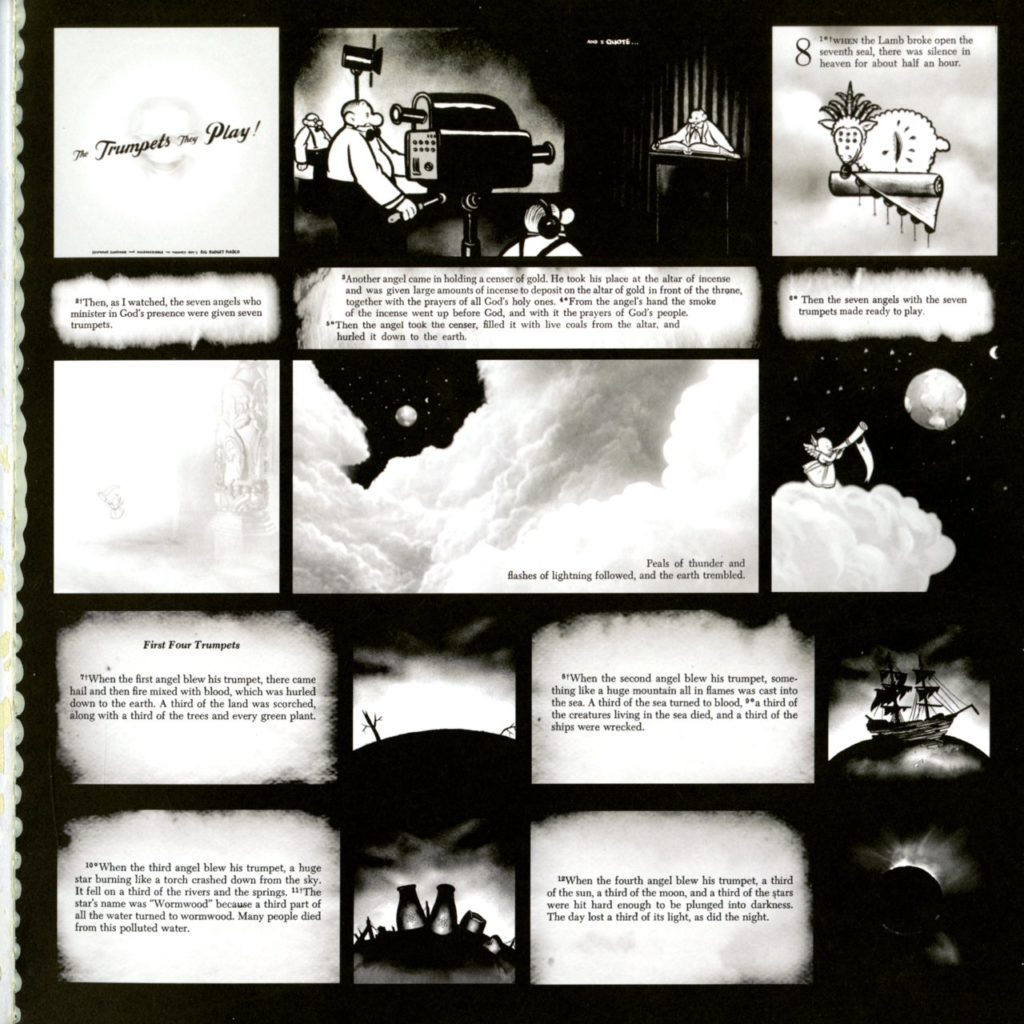
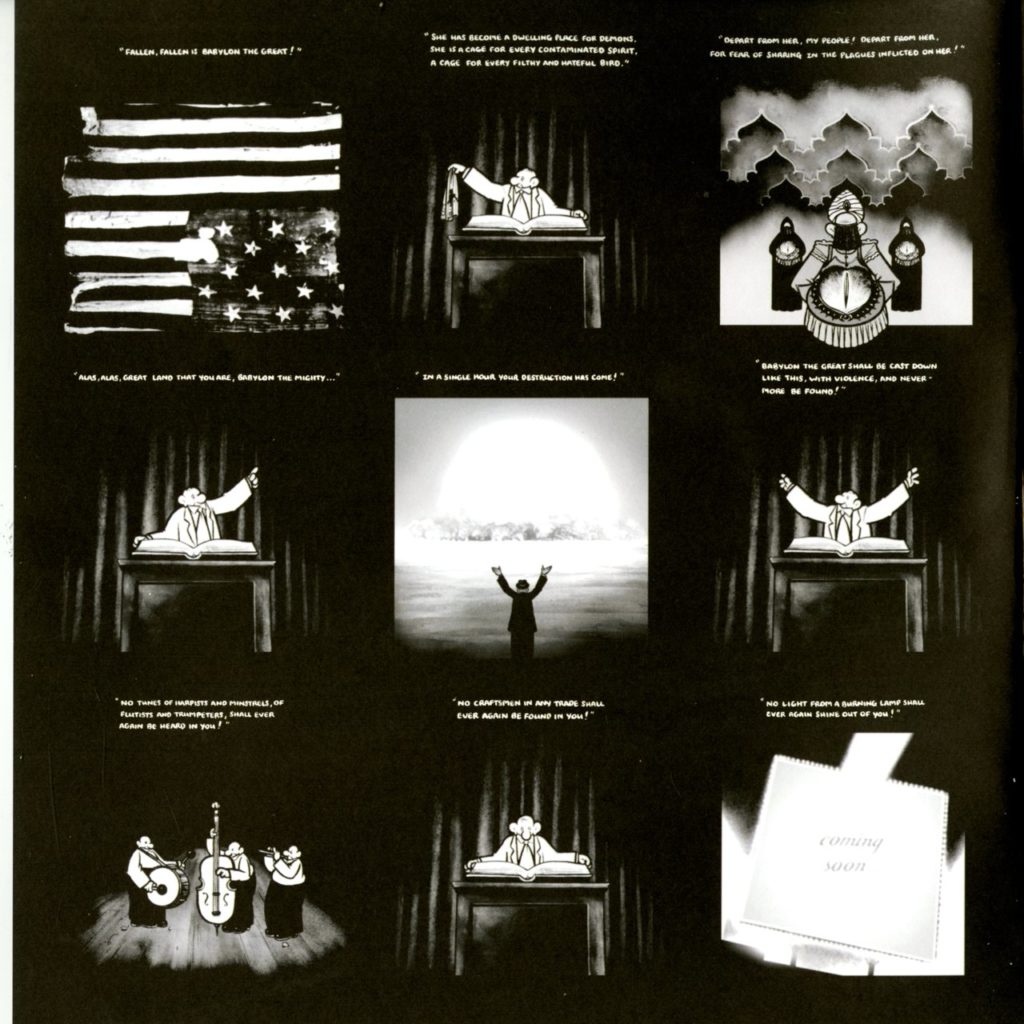
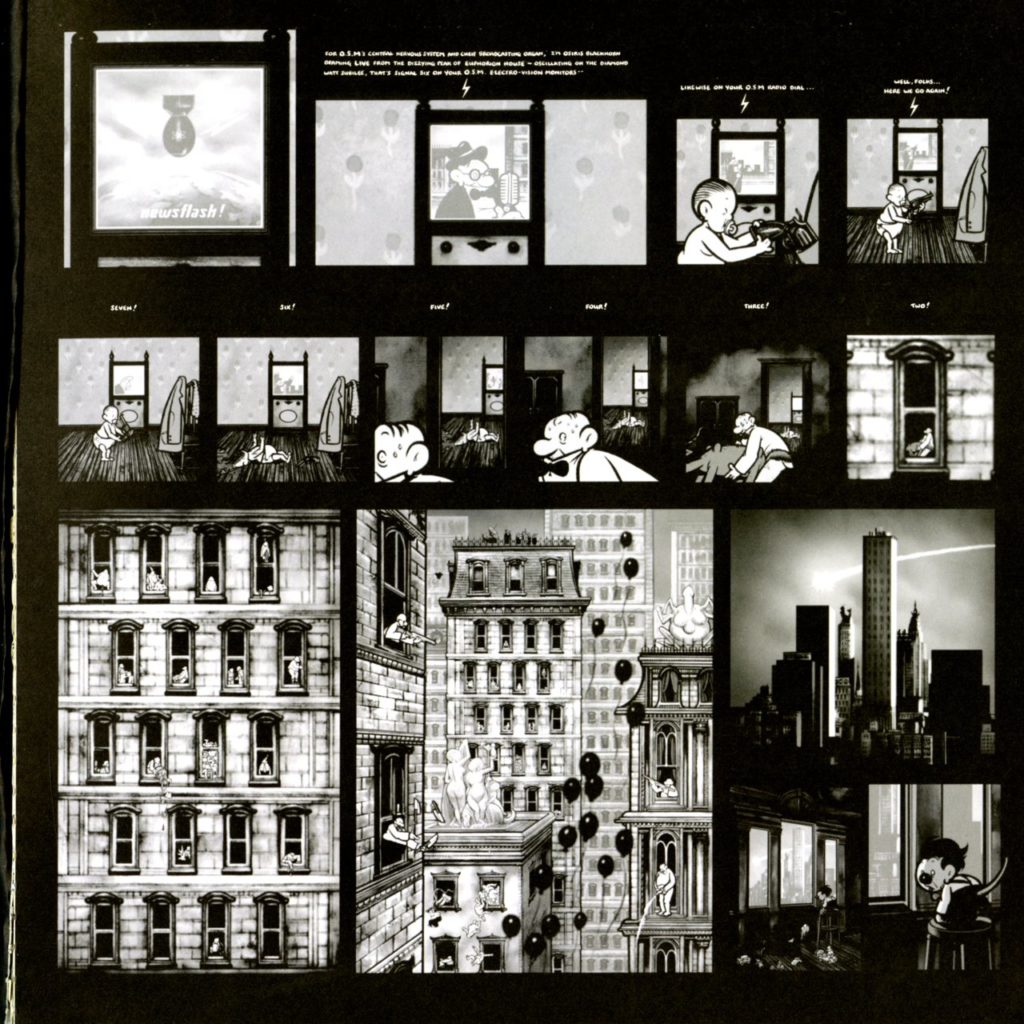
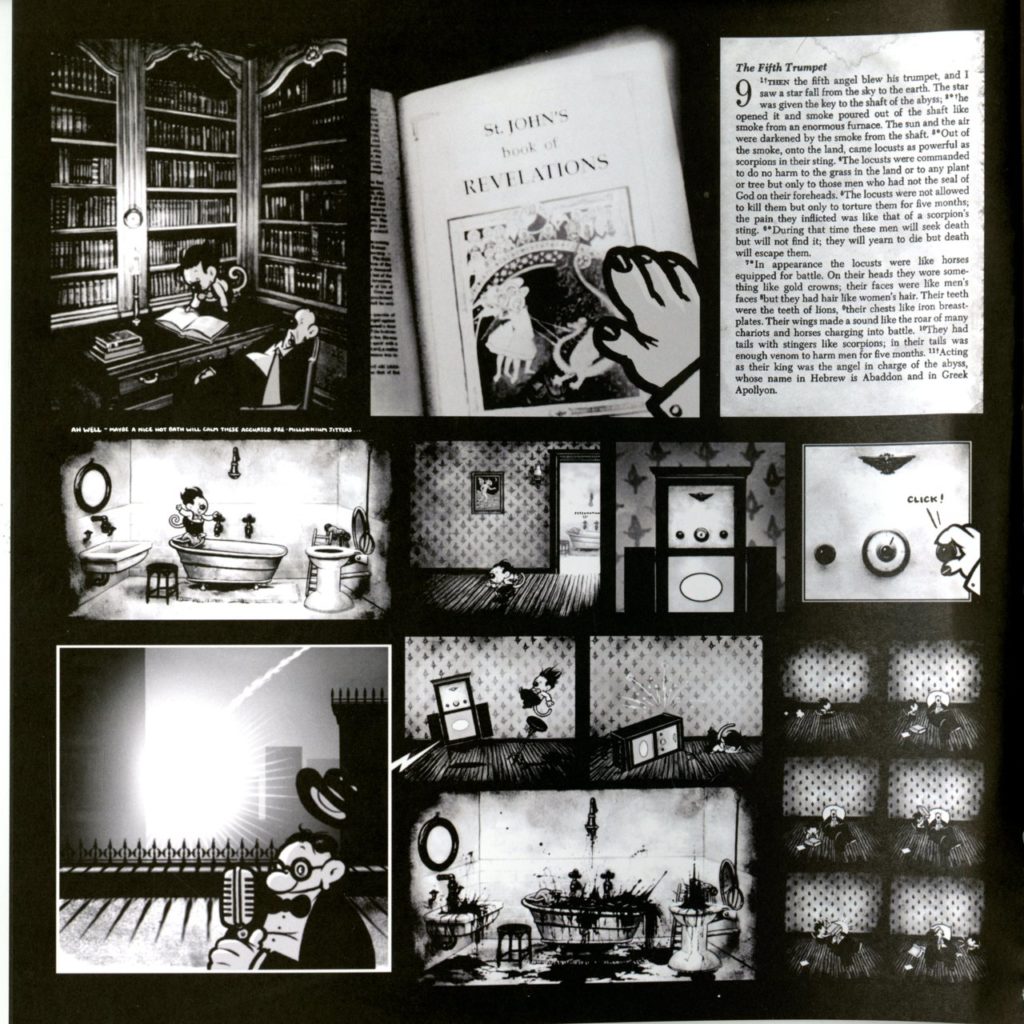
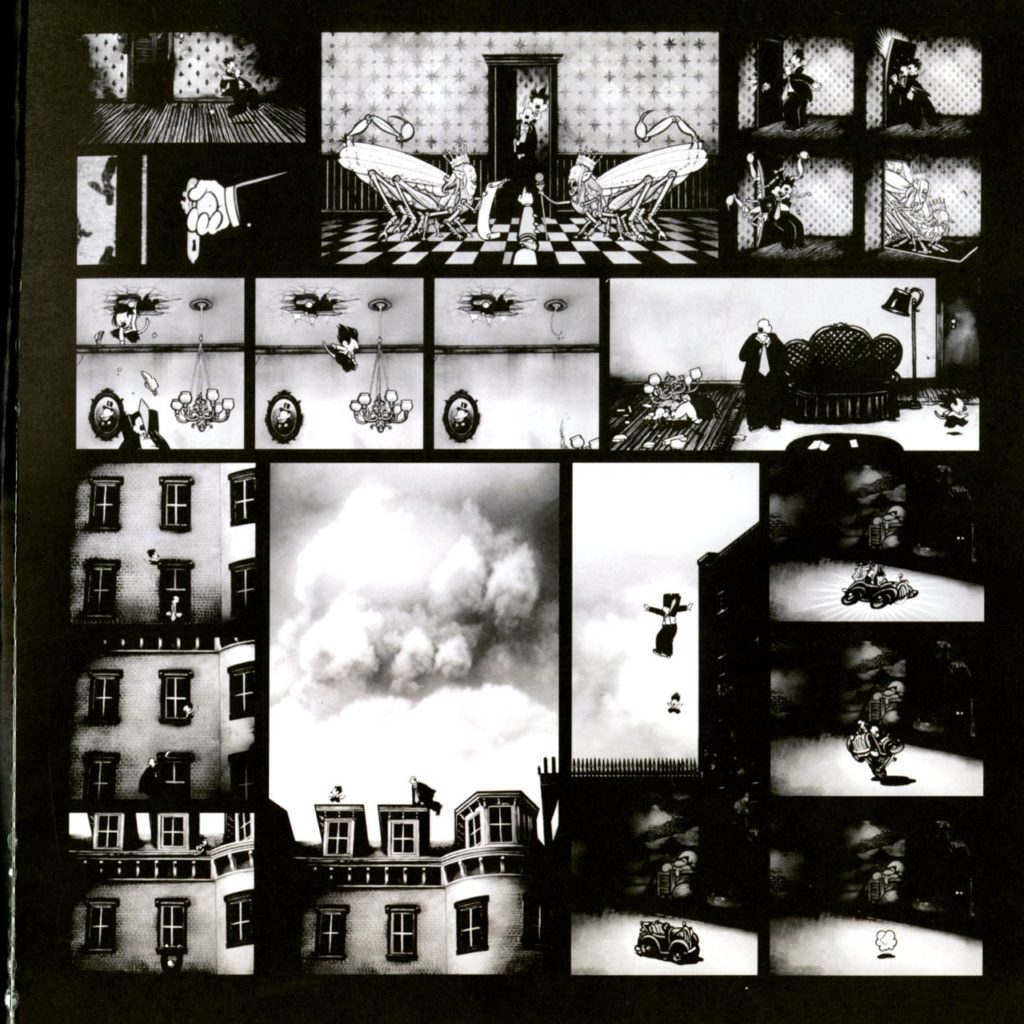
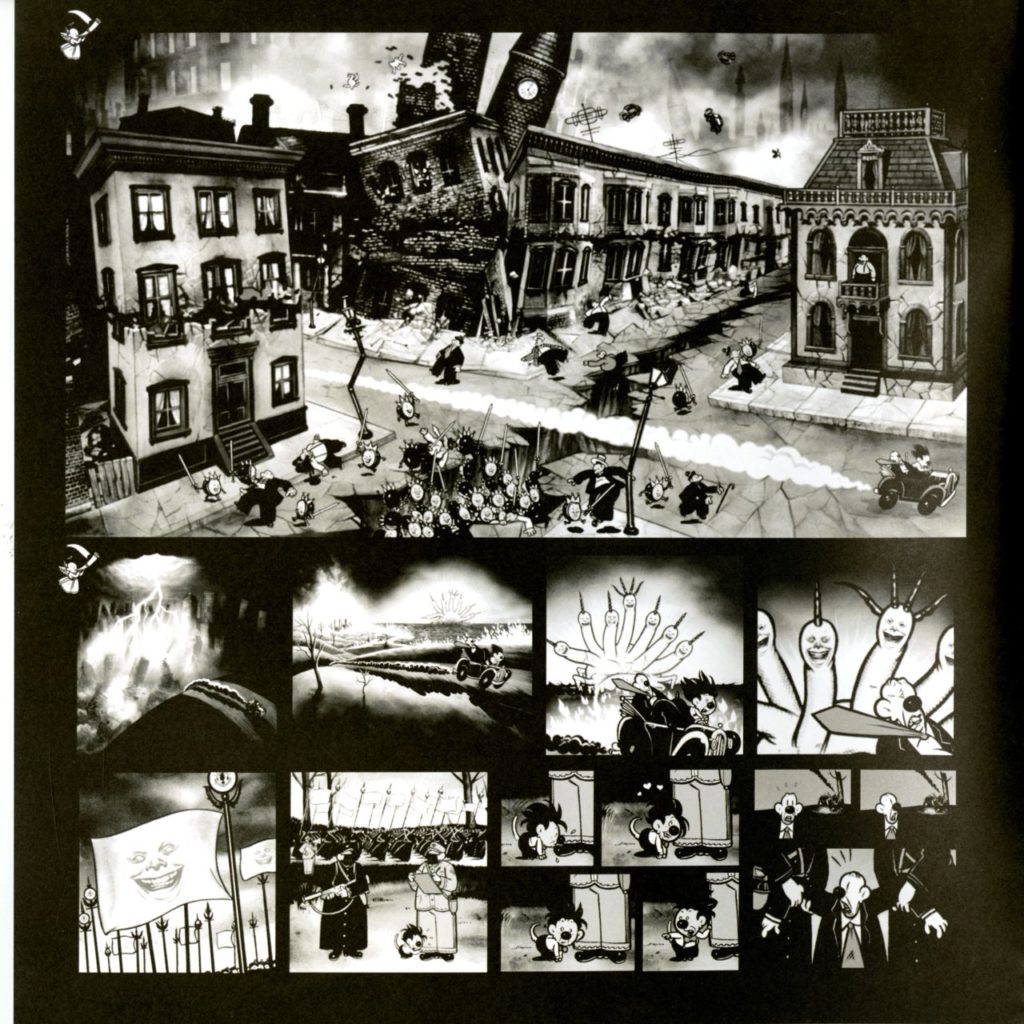
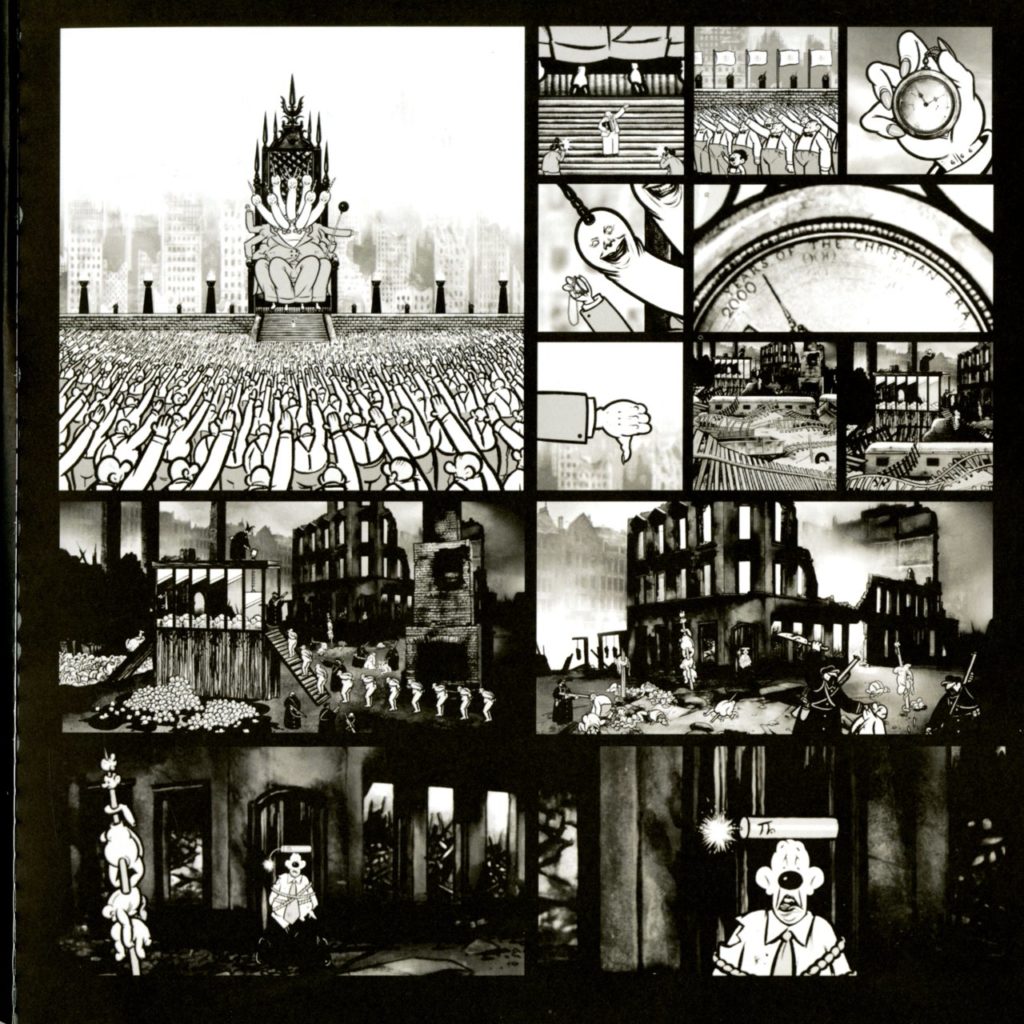
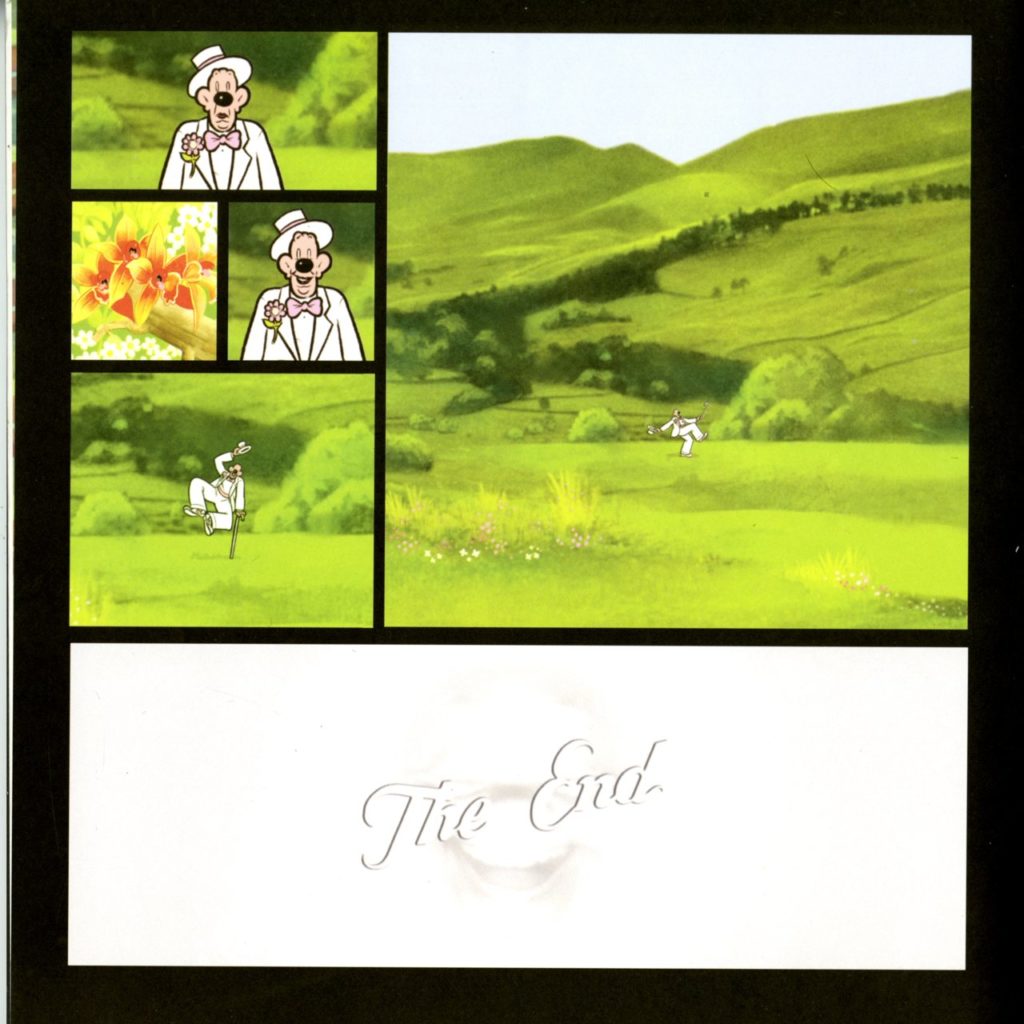
Issue ten is the volume that brought my interest of “Blab!” Back into my consciousness because I wanted to see Al Columbia’s whacky interpretation of the Book of Revelations. While the stand out is Al Columbia’s piece, the rest of the book is no slouch by a long stretch. Walter Minus brings back the retro with Agnes Muckensturm writing a day by day take down of men a woman ate in “Sunday is Not Necessarily the Best Day of the Week”, Banquet spins a tale of a twisted game show host in “The Bitter Happiness”, Greg Cwiklik brings the text and Randee Ladden the art in a story of pioneering black boxer Jack Johnson in “Black Jack, The Legend of Jack Johnson”, Peter Kuper does a strip on how porn corrupted him through the years in “Porn”, Al Columbia brings the high light of the volume, one collectors look for in “The Trumpets They Play” with his cartoonish take on the Book of Revelations with his recurring characters Seymour Sunshine and Knishkebibble the Monkey Boy, the combination of drawings and photo realistic background is eye popping, Peter Hoey does collage and retro artwork in “I Never Promised You A Rose Garden”, Spain does his 1950’s youth thing, this time him and his friends hop the fence to a carnival in “Carney”, Jeffrey Steele writes up on Jackie Wilson and Drew Friedman illustrates in “Mr. Excitement”, Doug Allen does a strip on the everyday existence of a junkyard owner in “Dumpy by Pant”, Pamela Butler drives Little Red Riding Hood hard into adult territory in “Little Red Riding Hood and Me”, Richard Sala does the weird crowd thing with a super sleuth tracking down a psycho in “Stranger Street”, urban every man wants to be a victim to get attention in another installment of “Tales from the Land of Plenty”, by Marc Trujillo, Mark Landman has Elvis as a fetus rockin’ n’ rollin’ and downing copious amounts of drugs in “Fetal Elvis”, Chris Ware spins a yarn about a man alone and his robot in “Rocket Sam”, Charise Mericle does a collage/drawing piece on how her parents immigrated to Canada in “Immigration”, Christian Northeast brings his retro style in “Convention”, Gary Panter paints grass in “Brooklyn”, David Goldin has Little Baby Gumba descending into hell by chasing a rat in “Wonderland”, Sof’ Boy mocks a rottweiler who wants to tear his head off without knowing it in “Sof’ Boy”, Hagelberg brings on the Four Repairman of the Apocalypse in “Baby Universes of the Apocalypse”, J. Bradley Johnson has Dr. Stefanopoulos giving out obvious and “rewarding” medical advice in “Severe Stomach Pains”, David Goldin opens up his sketchbook of drawings and collage, and Josh Alan Friedman writes an essay on working at “Regent Sound Studios”.
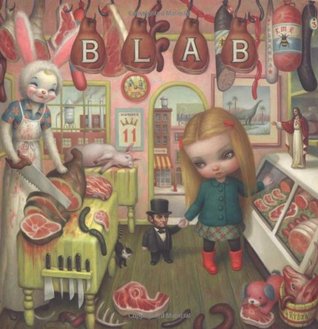
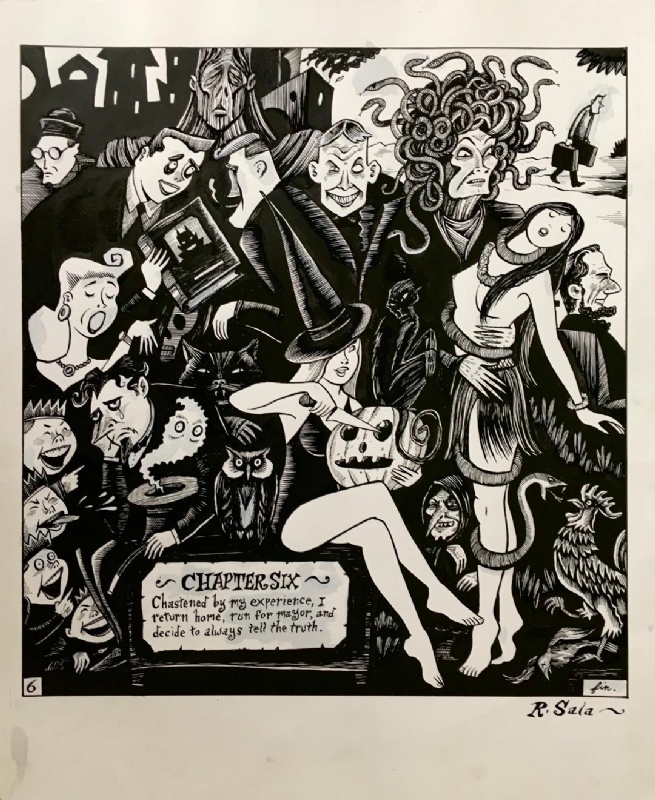
Issue eleven is really the first “Blab!” that caught my attention before I didn’t really get roped in until Mark Ryden’s bizarre cover. Blanquet starts his shadow puppet art style in “The Oak Sorrow” in a dark fantasy tale of the oaks who get revenge on the doll makers that use the wood of the oak trees to make their dolls, Matti Hagelberg has Walt Disney, Albert Speer and Practical Pig searching for happiness in “Alvar Aalto the Furious”, Drew Friedman does a one pager with “Come Fly with Me”, Greg Clarke has an anamorphic dog snob snobbing it up in “The Peculiar Milieu of Precival C. Wolcott”, Baseman shits on philosophy in “Enjoy or Suffer”, a twisted turn of events between a dame and a gentleman by Walter Minus in “Virginia Blondes Can Be Harmful to Your Health”, Lou Brooks illustrated and writes a story of killer mutant buttocks in “Attack of the Giant Buttocks People!”, Christian Northeast does a page by page retro art style story in “Easy’s Getting Harder Everyday”, Peter Kuper does a strip on living in Israel as a young kid, faking sick and getting a spinal tap in “Spine”, Stonehouse collages retro ads and pictures with retro drawings in “Can You Live in Happiness on Earth”, David Goldin introduces the sketchbooks of Waterman Moses that look suspiciously like Goldin’s own artwork in “Waterman Moses”, Peter and Maria Hoey do a piece on a truck driver who ascends a strange ladder to his destiny in “50 Times Brighter than the Brightest Star”, in “Good Boy!” Rob and Christian Clayton spin the tale of a boy who wants to borrow God’s dog, Beauchamp shows the postcard art of Krampus in “Gruss Vom Krampus!” Jethro Kamberoes painting pastiche is on display in “I Don’t Live Today”, Steven Guarraceia does shifting paintings in an art gallery in “In the Picture Gallery”, Laura Levine does paintings of UFO sightings throughout the years in “The Flying Saucer Review”, Baseman does abstract insanity in “Lucky Charms” and “More Lucky Charms”, Jeffery Steele does the words on the Salem Witch Trials and Teresa Mucha does the art in “The Old Haunts”, David Goldin has Little Baby Gumba drunkenly chasing a rat onto a ship and becoming a part of the ship’s crew as rat boy in “The Seven Seas”, Richard Sala has the story of a man who goes to claim an inheritance that isn’t his and all hell breaks loose in “The Story of the Inventor of the Paroximus Elixir”, Lloyd Dangle emails a manifesto that might change the world in “e.manifesto!@lloyd.dangle”, Spain does the 1950’s thing in regards to his Catholic upbringing and questioning it in “Confessions”, Johnathan Rosen opens up his sketchbooks in “Obsessive Compulsive”, Dumpy fights dog punk drug addicts squatting in his junkyard in “Dumpy and the Punk Animals” by Doug Allen, and Pamela Butler turns the tale of three little pigs on its head on “The Three Little Pigs”.
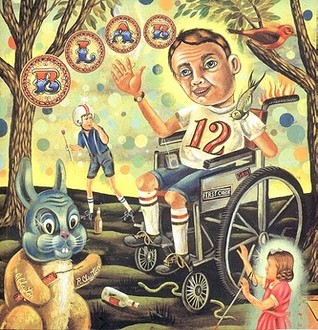
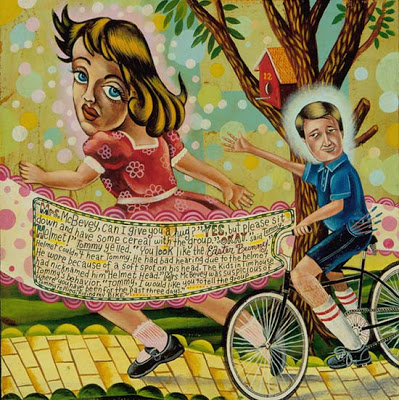
In issue twelve Blanquet lets fly the “Curse of the Fortune Cookie” where a couple walks out of a Chinese restaurant with more than they bargained for, Charles Paul Freund writes and Peter Hoey draws a missing “Arabian Nights Tale” called “The Binary Dreams of Wahid Al-Sifr”, Walter Minus spins another tale of wicked women in his retro style in “Serial Lover (Seven Lives in Paradise)”, Friedman does another one of his caricatures in simply “One”, Douglas Fresser tells the tale of a car in pieces in “Jesus and Poote”, Greg Clarke captures the musings of various people, various professions and different walks of life in “Private Musings”, Peter Kuper does his own play on Winsor McKay’s “Dreams of the Rarebit Fiend”, Monte Beauchamp has more postcard art of everybody’s favorite evil Santa, Krampus in “Return of Krampus!” Julian Mandel mixes 1920’s nude photography with drawn backgrounds to illustrate a fantastical story in “Nus Fantastiques” translated by Kim Thompson, the Clayton Brothers literally paint a house full of insanity page by beautiful page in “Ding Don! Welcome to Tim’s House”, Christian Northeast does face portraits of a fictional 1970’s rock band, more adventures of “Fetal Elvis” this time he meets Nixon by Mark Landman, Baseman explores his weird and abstract world in “Suffer” and “Enjoy”, Johnathan Rosen makes a “New Zodiac for Sentient Machines”, Tim Biskup spins a story of a coin operated robot that goes awry in “Freddy Seymour”, Greg Clarke does a portrait of “Profligate Pork”, Mark Mothersbaugh, member of an awesome band, Devo, integrates strange photos and weird drawings in “Toilet Train”, a robot waxes poetic in “Theres Just One Thought I Get” by Hoey and Freund, wooden idols duke it out for the chance to be number one in “18 Wooden Statuettes” by Michael Barelos, Laura Levine tells the tale of two shut in hoarder brothers in “The Collyer Brothers”, David Goldin combines fire cracker labels with drawn limbs and heads to spin a fiery tale of how fire works started, strange items sold retro art style in “One Day Only Year Long Sale” by Lou Brooks, Death takes a man in a black humor poem illustrated in “Obituary” by Max Adeler, “The Great I Am” discusses the weird esoteric religious cult that was started in my hometown of Mt.Shasta, the “I Am’ers” I went to school with were regular kids, didn’t even seem to be cult like, article by Jim Heimann, Spain and his crew get into a mock battle on the streets of 1950’s Buffalo, New York that gets out of control in “Sons of Hercules”, Johnathan Rosen opens up his sketch books in “Son of Obsessive Compulsive”, Baseman’s at it again with “Enjoy or Suffer”, Doug Allen does a strip on a 1952 Hudson Hornet and its history of bumps and scraps in “Car Cancer”, Baby Gumba becomes a Bollywood star by killing rats in Calcutta in David Goldin’s “Fistful of Curry”, and Ghost of Finnish president Kekkonen appears to champion skiier Matti Nykaren to encourage him to complete the ski jump in “That Splendid Matti Nykanen”.
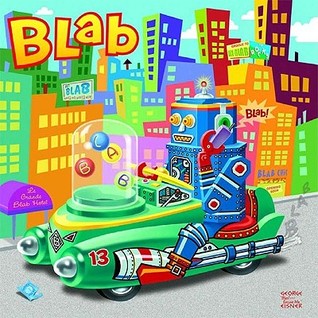
In issue thirteen Matti Hagelberg has Finnish president Kekkonen getting swallowed by a whale in “Kekkonen in the Belly of the Whale”, Walter Minus does the bad girl retro thing in “My Sweetheart”, Doug Fraser lets loose the dogs of war in “Job’s War”, Charles Paul Freund, Peter and Maria Hoey talk prison in “Song of the Panopticon”, Tim Biskup tells a woodland tale in abstract retro style with “The Helper”, Blanquet spins a tale of He’s and She’s in “Rancid Love”, the Clayton Brothers paint a tale of a boy who lied to the tooth fairy and got what he deserved in “Will All My Teeth Fall Out?”, Monte Beauchamp talks about how “Old Man Tooke” made art out of the old novelty “Johnson and Smith” catalogue pages which inspired him to do the same, Sue Cole delves into man’s inhumanity to animals on shipping barges in “Ghost Sheep”, Henrik Drescher mixes ribbon and drawn art in “The Mechanics of Nashville”, Johnathan Rosen further explores his world of weird mechanics in “The Seamy River”, Christian Northeast makes his strange retro portraits in “Beans and Bacon”, while Haley Johnson goes the same route in pink on “Dirty Girl”, Michael Bartalos tells the story of a brain swapped for the brain of a genius with disastrous results in “8-2-4”, “3 Number 1 and 2” Baseman takes you into his strange, abstract world of skeletons, devil balloon heads and nude women, Drew Friedman does a barbecue party with Robin Williams, Sammy Davis Jr. and Sigmund Freud, Peter Kuper tells the story of how him and his friends almost drowned in a ocean undertow in “Deep Blue”, Camille Rose Garcia has a bedtime story for grown up children with “A Spy in the House of Madness”, Daniel Goldin does his mix of real paraphernalia and drawing, this time with joker cards and the history of the joker card in “The Joker”, Marc Rosenthal goes 1920’s cartooning style in “Une Crise De Style”, Fred Stonehouse mixes his drawings, retro comic strips and bits of found notebook in “Ten Commandments”, Greg Clarke tells the tale of Pierre Chevalier an anamorphic cat and his weird life in Paris in “An Elegy on the Death of a Hirsute Poet”, Spain talks his 1950’s youth and the strange old man in the house full of newspapers in “The House on Wakefield Street”, Johnathan Rosen does more abstract, mechanical art in “Parasitic and Polymorphous Perversity”, a hippie buys a bass in 1968 to play in a band, gets rid of it and maps the road of the bass back to himself in “First Bass”, Juan Soto tells the twisted tale of Mrs. Payne who beat her husband to death at the behest of her “talking” dog and declared insane in “The Pacemaker”, and Blanquet goes deep into dark territory in “Obsessional Hints”.
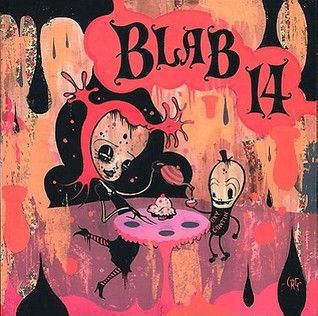
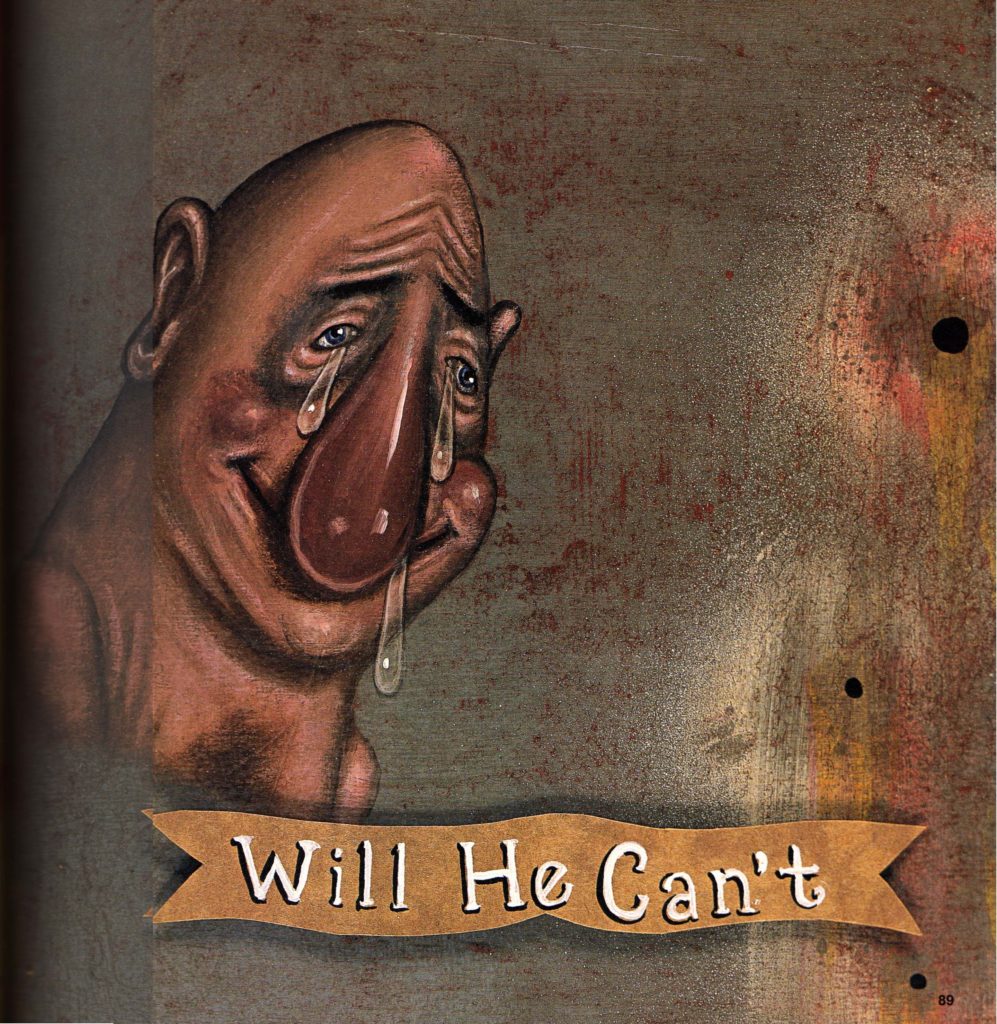
In issue fourteen Tom Huck does “Vintage Junk ’04: Fair-y Tales from the Mississippi Expo” complete with dominatrices, boxers and native Americans in smiling, wide eyed insanity, “Meinhut” by Bob Starke shows through minimal, abstract art how artists are stiffed by businessmen, Greg Clarke documents the adventures of a white truffle named Herve in “The Forlorn Fungus”, Spain documents his 1950’s youth experience with porn in “The Birth of Porn”, in the “Second Slap”by Juan Soto and Marcelo Rodriguez they tell the tale of a woman whose abusive husband is scared straight by her psycho police captain father, Willem Rosenthal dives fish first into “Saltines”, Reumann and Robel draw the rabble (like myself) who reads “Blab World”, Camille Rose Garcia tells you to drown your troubles in “Pharmaceuticools”, David Sandlin spears suburbia in “Slumburbia”, the Clayton Brothers fuck with your motor skills in “Coping with my Motor Skills”, a black splotch causes havoc in “What’s Dat?!” By Marc Rosenthal, Monte Beauchamp shares early matchbook cover art in “Striking Images”, robots commit suicide in “I Built You First” by Peter and Maria Hoey, in a series of small fires Doug Allen spins the tale of a lawyer who insures his cigars against fire when he smokes them, he files a claim and wins the money but his plan goes “Up in Smoke”, Blanquet paints another one of his hellish landscapes in “Enfer De”, Baseman paints a watery world in “Wet Dream”, Johnathan Rosen talks and illustrates modern sun worship in “The Solution”, just a day in the life of humanoid birds in “Birdville” by Larry Day, in “Love and Peace”, Noah Woods drawing and collages it, David Goldin mixes found items and drawing in “Thirty Third and Third”, Mark Landman has “Fetal Elvis” come back and get drafted in the war against nasal cells by colonel Placenta, Walter Minus has his retro femme fatales in his noir poetry in “Locker Broadway Stash”, Peter Kuper talks about his time in the cave at the Red Sea where thinks he might’ve found the lost dead sea scrolls in “Dead Sea Stroll”, Sue Coe does her political poetry with illustration in “Weapons of Mass Destruction”, Fred Stonehouse has weepy figures on retro sign backgrounds in “Will He Can’t”, Laura Levine tells the story of the vaudeville “Piccolo Midgets”, and Matti Helberg documents the further exploits of former Iceland president Tamminiemi Kekkonen in “Hard Boiled Kekkonen”.
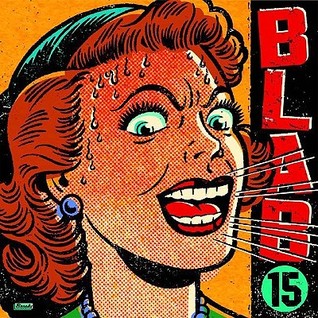
In issue fifteen Camille Rose Garcia illustrates her poem “Subterranean Creatures”, Matti Helberg brings back president Kekkonen from the dead, literally, in “The Shoes Say “Ukk”, Bob Staake illustrates various ridiculous lyrics from various songs in “They Got the Shapely Bodies. They Got the Steely Dan T shirts”, Nicolas Debon documents various fanatical sects of the desert in “The Holy Saints of the Desert”, Peter Kuper talks the American Dream in “Dream Machine”, Marc Rosenthal has two undercover cops in the city in “Convergence”, Monte Beauchamp documents the “Kilroy Was Here” art from back in the day during World War Two, Christian Northeast wants to know where the smell is coming from in “Mr. McGillicutty in Whats that Stink?”, in “Astrida” Walter Minus brings his femme fatales back into action, Baseman does the “Garden of Unearthly Delights”, David Sandlin does his abstract suburban couple thing in “I Dream of Joni”, Don Colley rolls it up in a carpet in “My Burdened Heart”, Owen Smith does a painting of a boxer forlorn and his dame in “Cornered”, Tom Huck does “The Race of the Wheelbarrow Brides”, Tim Biskup features art from his miniature books in “Tiny Bubbles”, David Goldin combines found junk and drawings, primarily a Yoohoo can in “Yoo-Hoo”, Blanquet does another hellscape in “Dream of the Great Lake”, the Clayton Brothers do “Home Take Them Out”, knuckles get bandaged in Doug Fraser’s “A Pugilist’s Alchemy or Pulp”, Gary Taxali plays around with his lunch in “Lunchbox”, Laura Levine tells the story of the world’s most famous headless chicken in “Miracle Mike the Headless Chicken”, man about to have a literal blast in “Hope Your Holy Daze are a Blast” by Don Colley, Peter and Maria Hoey draw and C.P. Freund writes an old school ode to “Tin Tin” in “Major Sands in Shadow of the Mirage”, Sue Coe and Judith Brody do the bird flu in “Fowl Plague”, Vinnie does a comic on why your a loser for reading comix in “Comix are for Losers!”, Teresa James illustrates and Jeffery Steele writes about the Black Dahlia in “The Unkindest Cut”, Grey Claude explores the career of a pissed off actor in “The Blithe Spirit of Tinseltown”, Reumann and Robel illustrate their insane and absurd cityscapes in “Four Horsemen”, Spain talks about his artistic evolution in “The Education of an Underground Cartoonist”, Geoffrey Grahn talks taxi dancers in “Dime a Dance Girls”, and Drew Friedman does real life like portraits in “Wonderful Land”.
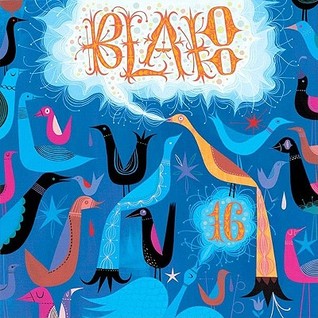
In issue sixteen Andrea Dezso does a topsy turvy evil version of the Teletubbies in “Names in a Book in Random Order”, Geoffrey Grahn tells about how the world almost ended in the early 1960’s between Russia and the US in “The Man Who Saved the World”, a weird pet gets pawned off in “Destroy Accident City” by Paco Alcazar, the “Swamp Preacher” drinks deep of sin by David Sandlin, Sergio Ruzzier does a children’s bed time story for adults in “The Nice Devil”, in “Lost Liner Notes” Hoey and Freund shed a spot light on various unknown jazz musicians, Spain draws an attempted pick up in “Blab Cartoon #1”, the abstract gets crazy in “Humanimals” by Mats!? Ronnie and Pal talk “Jesus” by Christian Northeast, Esther Pearl Watson paints various houses and the purported “Legends, Rumours and Hearsay” about them, Greg Clarke wants you to wipe away your problems in “Blab Cartoon #2”, Bob Staake tells you how to “Live Like An Artist”, Mark Todd does a single page ass joke in “Blab Cartoon #3”, Henrik Drescher tells you “How to Dance”, Peter Kuper puts a explosion and everyday life side by side in “Explosion”, Walter Minus does his femme fatale thing in “Blab Cartoon #4”, Monte Beauchamp shares his collection of 1950’s and 1960’s “Impko Decals”, Gary Taxali does his retro sketches on found paper in “Notty”, Owen Smith does a retro “Dragon Lady” painting, Brain Cronin shows them legs in “Nadia”, David Sandlin does the “Angel of Redemption in a Web of Sinsation”, J. Bradly Johnson piles on the “Image Surplus”, Fred Stonehouse weeps over “Nino”, Lou Brooks does sweaty burlesque in “Take It Please-y on Me, Girl”, Laura Levine does “Veronica Lake”, Christian Northeast has “Doctor Wells” give a kid pills for a tummy ache brought on by ice cream, Baseman draws a one pager showing when love between a girl and her teddy bear goes way too far in “Blab Cartoon #5”, Rubel and Reumann got pink in “Four Pages”, Marc Rosenthal does his own ode to Tin Tin’s style in “Flotsam and Jetsam”, Christian Northeast does “Blab Cartoon #6” with stores of literal shit, “Fetal Elvis” looks for amphetamines in the pancreas, Sue Coe and Judith Brody “Run” with the hunters and the hunted, J. Bradley Johnson talks about loss of will power in “Pepin and Joe Go to Work”, the Clayton Brothers do a rare pen and paper story in “We Miss You”, Spain does a story on his jive talking friend James in 1950’s Buffalo New York in “Return of James”, and Drew Friedman proclaims “Live and Cookies”.
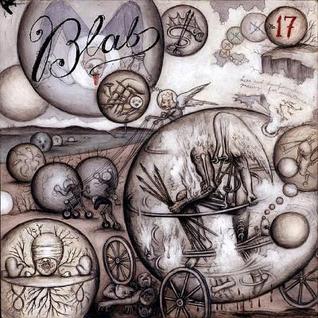
In issue seventeen Sergio Ruzzier shows the sadness “While You Sleep”, Matti Hagelberg puts a modern spin on Hansel and Gretel in “Ernst Starvo Blofeld” in Christmas in Shacktown”, Geoffrey Grahn shows the oldest trend mania in “Dutch Tulip”, Steven Guarnaccia does a miniature artist in “Max Vesta Matchbook Artist”, Peter and Maria Hoey talk jazz with Coleman Hawkins and Django Reinhardt in Paris in “Out of Nowhere”, Greg Clarke does the anamorphic animal thing via a French mouse in “The Pungent Gaul”, next up “Vintage Rolling Skating Labels” by Anonymous says it all, Sue Coe and Judith Brody do one on the hurricane and its effects on humans and animals, Walter Minus wants an ex in “Blab Cartoon #1”, eyes paint a “Stone Maze” by John Pound, wet sloppy kisses in Lou Brook’s “The Wetter the Better”, tropical bliss with monkeys in Amy Crehone’s “Monkey Love”, Calef Brown has different creatures in the act of “Migration”, crying monkeys in Fred Stonehouse’s “Little Bug”, “Sun Rays of Death” assault retro America by Ryan Heshka, Esther Pearl Watson explores the “Haunted Eleazer Plot”, Gary Baseman does his own version of the “Li’l Egg Hunt”, Mark Todd does “High-Ku Class of 89”, Lou Brooks twists your tongue in a knot and lets it grow in “My Garden of Tongue-Listing Twimericks”, Shag does the artist from the early 1960’s painting a nude in the stand alone “Blab Cartoon #2”, Monte Beauchamp does a “Tribute to Bazooka Joe”, Marc Rosenthal does enchanted forests and subdivisions in “Behold the Wave”, Brian Cronin says “I have Dyslexia But I Don’t Know Ti”, Peter Kuper has “Nine Lives” and he proves it in his comic strip, Mark Landman has Fetal Elvis do the “Fetal Sunday Funnies” satires on Sunday comic strips, Gary Taxali’s retro teddy bear character needs another poker player for his game in “The Poker”, Spain talks about his old job at a copper cable company in “High Smile Guy in a Low Smile Zone”, Paco Alcazar gets the shovel in the weird “Membrane”, and Drew Friedman does portraits of “Old Jewish Comedians”.
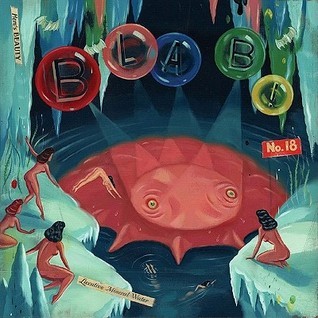
In issue eighteen Bob Staake does his own take on e mail scams in “Hugh Got Mail”, Paco Alcazar talks a hired assassin’s relationship with his mom in “Obedience”, how to draw comics the Blab way with “The Blab Academy of Visual Arts” by Randall Enos, Drew Friedman does “More Old Jewish Comedians”, Nora Krug tells the tale of a American defector to North Korea in “No Man’s Land the Life of Sargent Robert Jenkins”, here comes “The Ever Elusive Yeti” by Mark Todd, Sergio Ruzzier once again lampoons children’s books in “Two Birds”, Fred Stonehouse paints “The Widow’s Garden”, Esther Pearl Watson talks harmless apparitions in “Caspers”, Steven Guarnacia tells the story of the master builder of mini golf courses in “Moe Greene”, a beautiful wine taster talks the taste of her different suitors in “The Tasting Notes of Annapol Garda”, Richard Bears draws the “Shapes of Things”, John Pound has eyeballs working in “Brick Rooms”, Baseman plays in the “Devil’s Playground”, Tim Biskup draws a “Helper”, suited devil men populate Travis Louie’s “Krampus One”, Shag talks hand jobs in “Blab Cartoon”, Skip Williamson does a story on a hermaphrodite turned actor turned killer in “Daddy was a Lady”, Mark Zingarelli does one on a burlesque house club owner on “Chick’s Club Taboo”, Peter Kuper talks about bullies in “Bully for You”, Ryan Heshka does one of his strange painted retro sci fi stories in “Brides of Science”, Sue Coe and Kim Stallwood take down circus’ treatment of the elephant Topsy in “The Elephant Never Forgives”, Mark Landman’s “Fetal Elvis” gets high off paint thinner and steals porn from Colonel Placenta, Mark Frauenfelder gets juiced in Calef Brown’s “The Eldritch Commons”, “Peas” waxes poetic by Serge Bloch, Randall Eno’s teaches another Blab cartoon class with “Sound Effects in Comics”, Geoffrey Grahn does one on the poor houses of yesteryear in “A Visit to the Poorhouse”, and Gary Taxali does his retro thing with “Billu”.
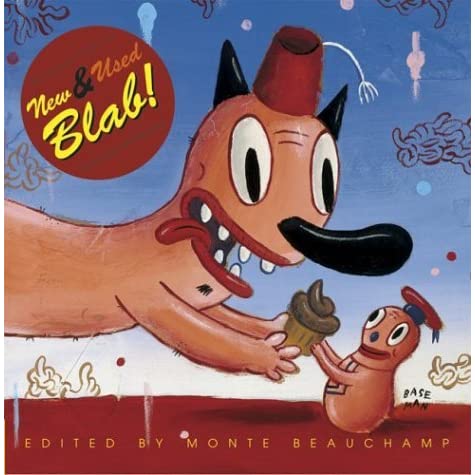
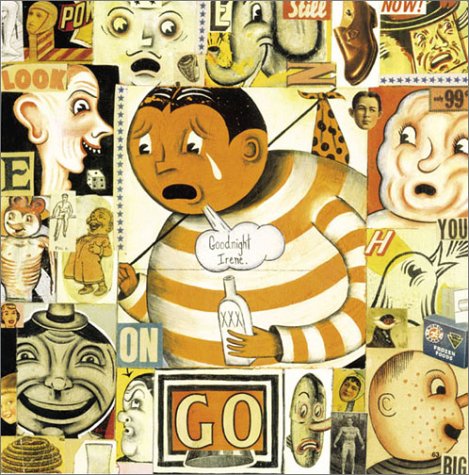
“New and Used Blab” features the best of the previous “Blab” volumes, and while there is a lot of good material in this part of the book, if it were me I would’ve included Al Columbia’s “The Trumpets They Play”, the absence of that twisted genius piece is mind boggling, turn the book upside down you get new material with a introduction by Mark Mothersbaugh, David Goldin does his hybrid of found objects and hand drawn characters in “Horace”, Camille Rose Garcia does “Who’s Afraid of the Peppermint Man?” A grotesque story of how peppermint candy is made and shipped into town, Doug Allen does a strip on being stranded and rescued by a ghost ship in “Adrift”, Peter and Maria Hoey with Charles Paul Freund writing about how alien invaders use humor comic strips to conquer humanity in “The Paper Grin”, Marc Rosenthal goes to “France”, Douglas Fraser takes a shot at capitalism in “Pax Americana”, Monte Beauchamp features the cover art of old detective magazines in “Cover Couture”, Sue Coe goes after factory farming in “The Man with No Heart”, Blanquet does a shadow puppet nightmare theater where a girl’s teddy bear instructs her on how to get revenge on her bullies in “Sweet Teddy”, Johnathan Rosen does stream of conscious in “Hey Mister”, Teresa Mucha paints “Go There to Rest”, Haley Johnson does “Dirty Girl Body Language”, Walter Minus has a pixie femme fatale cause havoc in “Tarantula B.”, Spain talks the Cold War in “My Cold War”, Drew Friedman shows how you can have a successful career in “Show Business”, Richard Sala features a treasure hut for “Amber Eyes”, Fred Stonehouse has weepy characters in “General Martyrology”, Baseman does the devil balloon head thing that causes destruction in “Baseman”, Monte Beauchamp does “A Tribute to Jim Flora!!!” And his abstract jazz record covers, “Fetal Elvis” fights his evil twin by Mark Landman, and Peter Kuper talks fear of nuclear destruction in “Bombed”. Chronicles Books put this one out in 2003 after Fantagraphics gave up publishing “Blab!”.
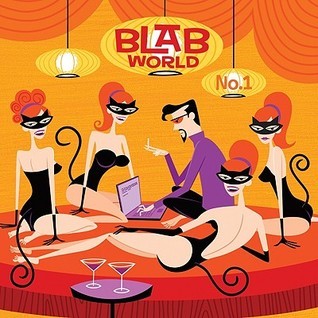
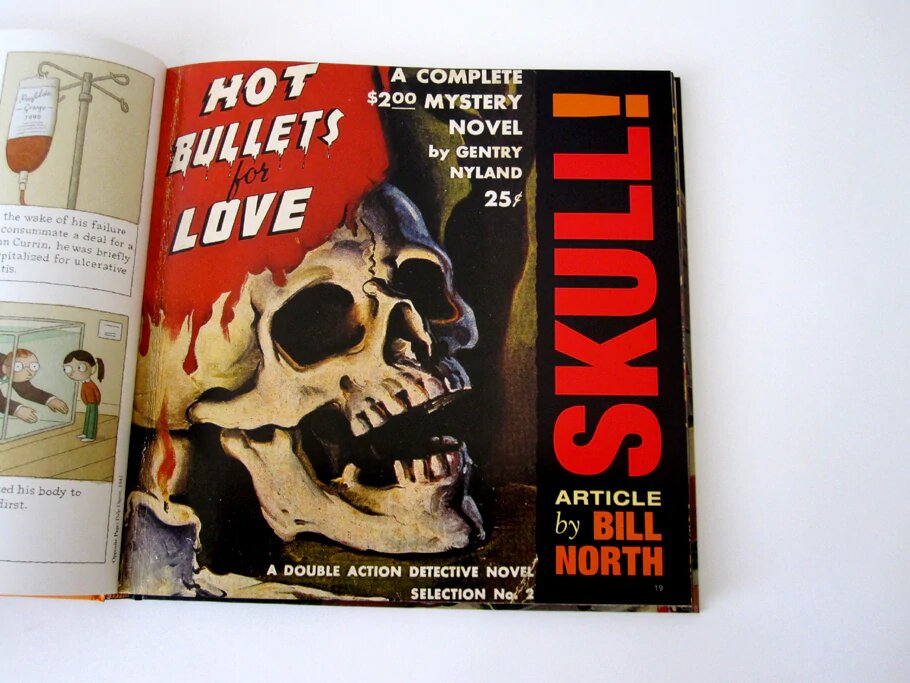
“Blab World 1” came out years after in 2010 and was put out by Last Gasp it starts with the then departed Geoffrey Ghan’s artwork and study on “Slime Molds”, Kari Lane McCluskey’s strange Lolita like doll world is photographed in “Collodion”, Greg Clarke chronicles the trials and tribulations of “The Neurotic Art Collector”, Bill North features and writes an article on how the skull played a major role in cover art back in the day in “Skull!”, Nora Krug illustrates a story on “The Tumultuous Life of Isabelle Eberhardt”, Shag shows what happens when you screw around in “Eames Lounge”, different artists draw and paint their vision of the apocalypse, artists like Ron English, Mark Ryden, Ryan Heshka, Owen Smith, Jean-Pierre Roy, Andy Kehoe, Spain, Martin Wittfrooth, Femke Hiemstra, Natalia Fabia, Joe Sorren, Gary Baseman, Karen Barbour, Edel Rodriguez, Sue Coe, Mark Burckhardt, Calef Brown, Kris Kuksi, Tom Huck, Andrea Dezso, Yoko D’Holbachie, Alex Gross, Fred Stonehouse, Gary Taxali, Travis Lampe, John Pound, Michael Noland, Sofia Arnold, Larry Day, Teresa James and Kathleen Lolly. Sergio Ruzzier does his parody of children’s books in “The Life of an Artist”, Steven Heller does a write up on “Weirdo” I also did one on my blog ( get weird-OH! Here https://www.noisepuncher.net/2021/05/19/your-such-a-weirdo-underground-comix-magazine-1981-1993/), James Lowe writes on and shows propaganda caricature art of World War Two in “Ax the Axis”, Mark Landman has Fetal Elvis commanding his “Art Empire”, Juilia Moore writes and Steven Guarnaccia illustrates the “Lament on the Death of Willie”, Mark Todd does the tale of “The Dreaded Mothman of West Virginia”, CJ Pyle draws braided people with ballpoint in “Ballpoint Bravura”, and Peter Kuper does his interpretation of the “Four Horsemen”.
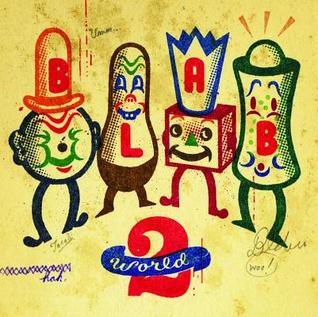
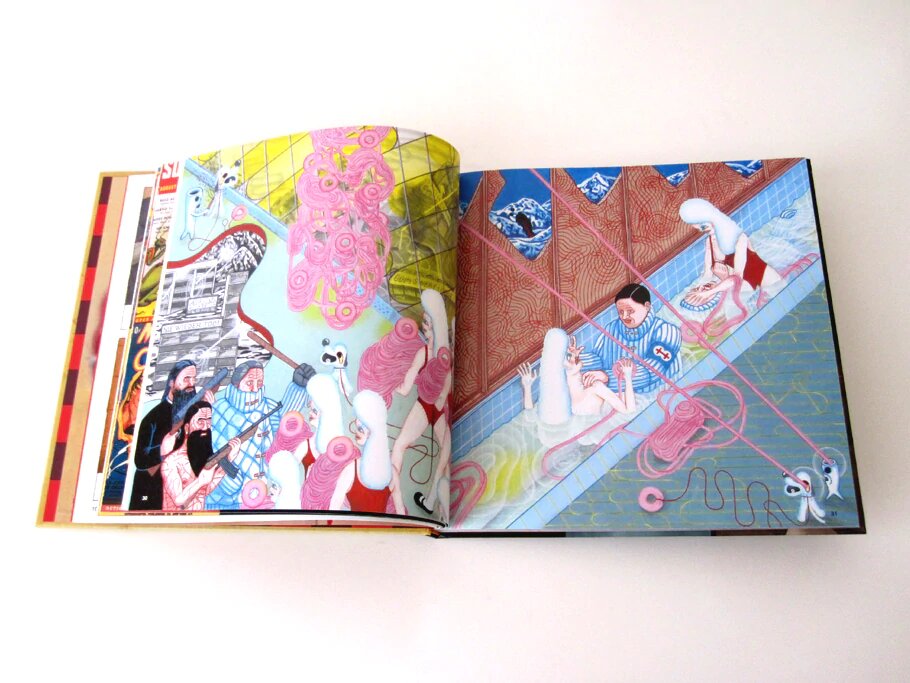
In “Blab World 2” Nora Krug does a strip on “Adolf’s Aberration” not that Adolf, the artist Adolf who drew and invented a colorful past for himself after being arrested for various, uh hmmm, indecencies, Greg Clarke does the trials and tribulations of Edward in “Dispatches from Oblivion”, Ryan Heshka does a profile on Frank R. Paul who illustrated covers for “Wonder Stories” and “Amazing Stories” in “A Passion for Paul”, Elvis Studio does an abstract pink world in “Hollow Inside”, Andrea Dezso does a strip on a woman who summons a demon lover called “Liderc”, Drew Friedman draws and writes a profile on “Will Elder”, different artists draw their visions of “The Hereafter”, artists like Ryan Heshka, Jon Macnair, Eric White, Femke Hiemstra, Erik Mark Sandberg, Larry Day, Brook Slane, Christopher Buzelli, Gary Taxali, Luciano Scherer, Cahtie Bleck, Craig Larotunda, Laurie Hogan, Marc Burckhardt, Martin Wittfooth, Travis Lampe, Robert Connett, Lou Beach, Kris Kuksi, Lou Brooks, Yoko D’Holbachie, Charles Glowbitz, Elvis Studio, Kevin Scalzo, Fiona Hewitt, Jean-Pierre Roy, Chet Zar, Rob Sato, Michael Noland, Nicoletta Ceccoli, Xinoqing Ding, Jana Brike, Baseman, and Owen Smith, Steven Heller does a write up on Zap Comix in “The Zap in my Life”, Sergio Ruzzier does his kid book satire thing with “Left Overs”, a bird character wakes up and finds he is dead, Doris Kitchen of Kitchen Sink publishing does a comic strip on a haunted house him and his family lived in “The Vexing Thing Upstairs”, Mark Todd does a strip on “The Great Sea Serpent of Brazil’s Parahiba River”, Bill North does a write up on Fred Stonehouse in “Fred Stonehouse! A Life in Between”, Peter Kuper talks about how he dreamed of his dead father in visitation. “Blab World” in particular stresses more of the painting and single page illustration than the previous issues of “Blab!” Nothing wrong there, it almost is an easier and accessible issue of “Hi Fructose” art magazine.
So in closing “Blab!” Is a series with interesting, eye popping, art work and comics, a cross between high brow and low brow. I absolutely fell in love with this series again, there will be times I’ll just crack an issue and drink in the sights like a heady brew, while not all of the stuff in “Blab!” Is my cup of tea, that is any comics anthology, not every story, strip or art is gonna be somebody’s cup of tea and that is OK, the point of “Blab!” Was to introduce people to art that they’d never seen or heard of. I sure do hope Last Gasp continues to put out “Blab World”, this world would be the richer for it. “Blab!” Away my friends.
Now if any of you want to buy these go on amazon or ebay, good luck getting a copy of the ever illusive issue 10.
Some of these you can read online here: https://viewcomics.me/comic/blab
Friends BLAB! BLAB! BLAB! AWAY!
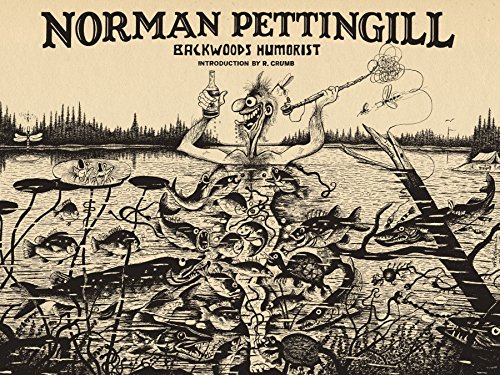
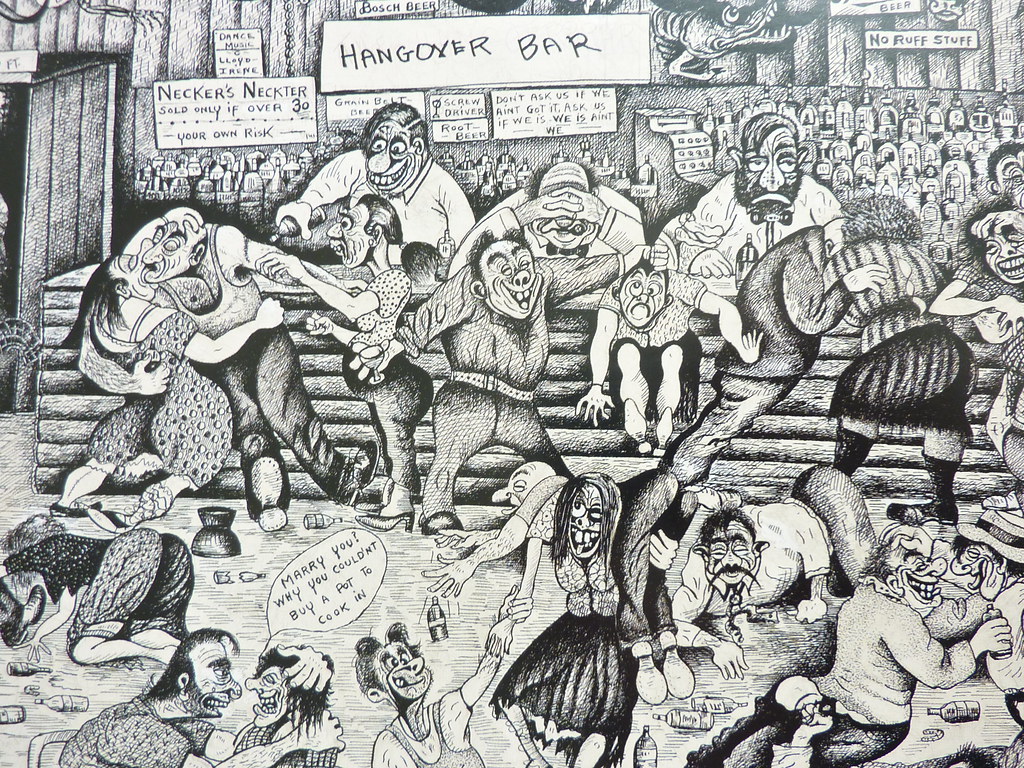
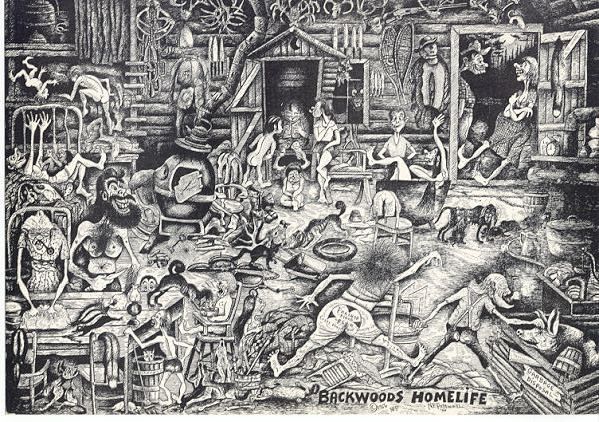
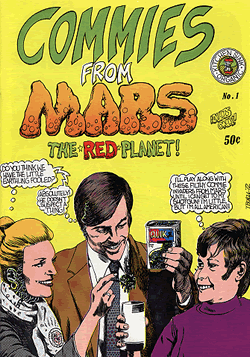

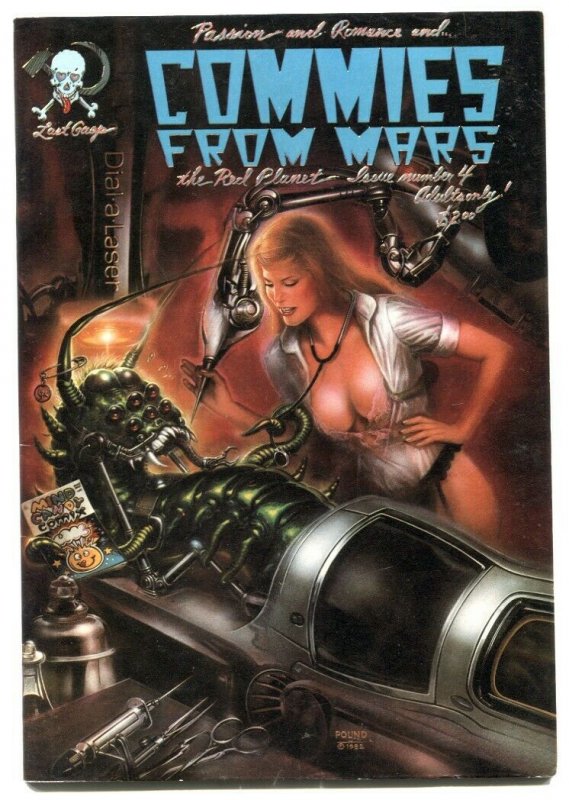
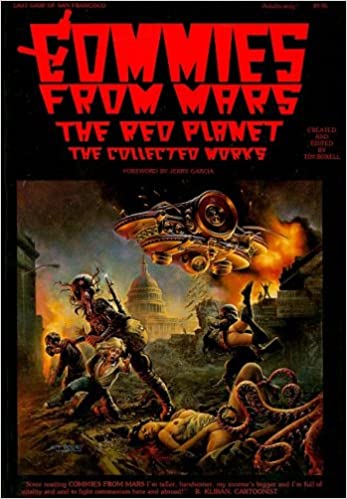
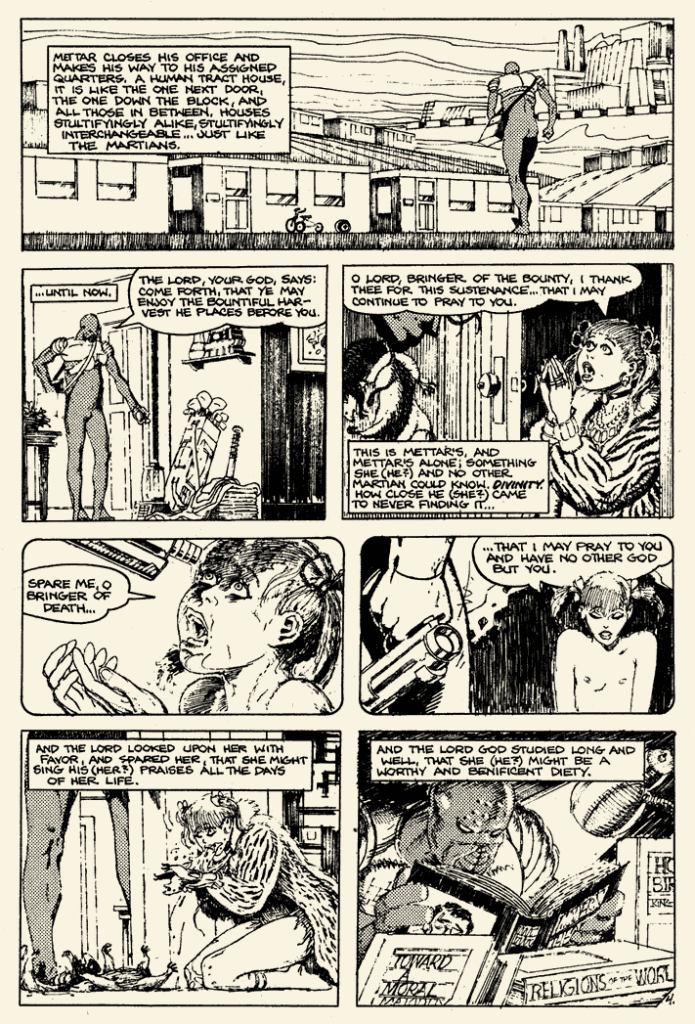
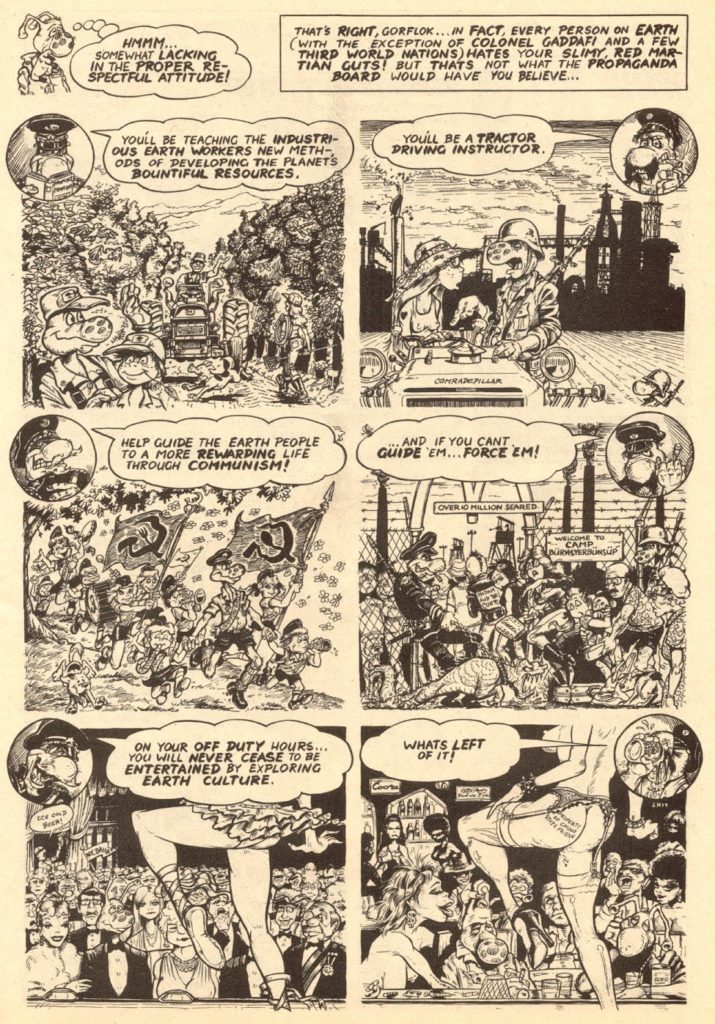
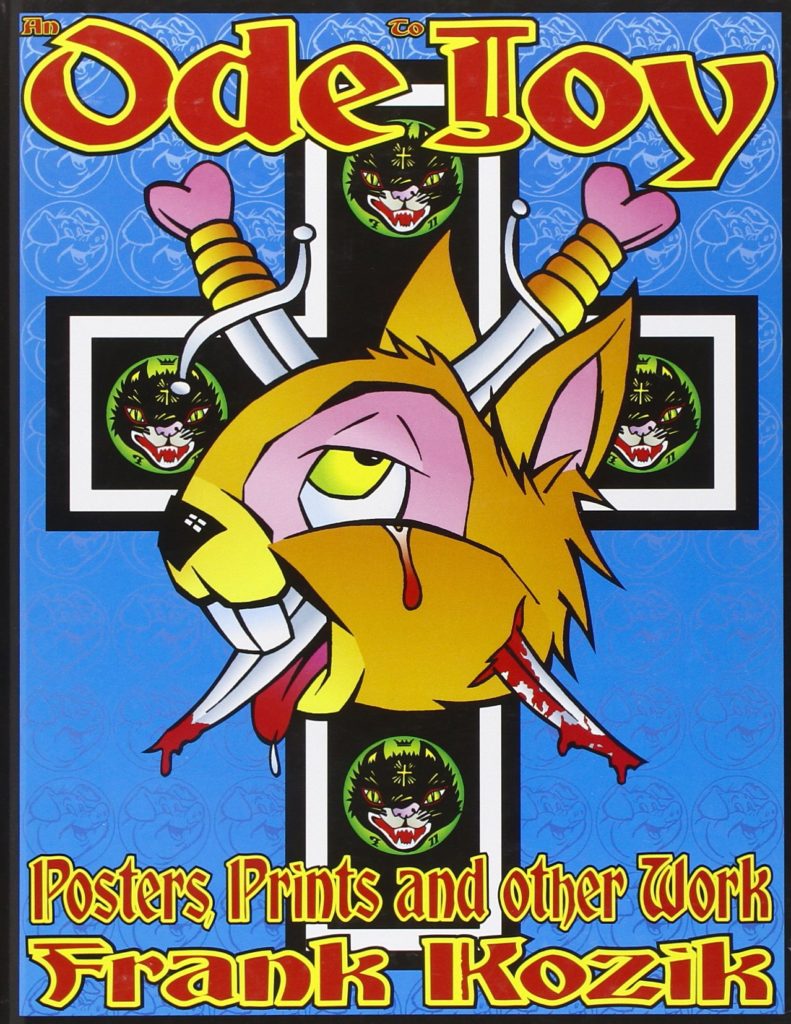
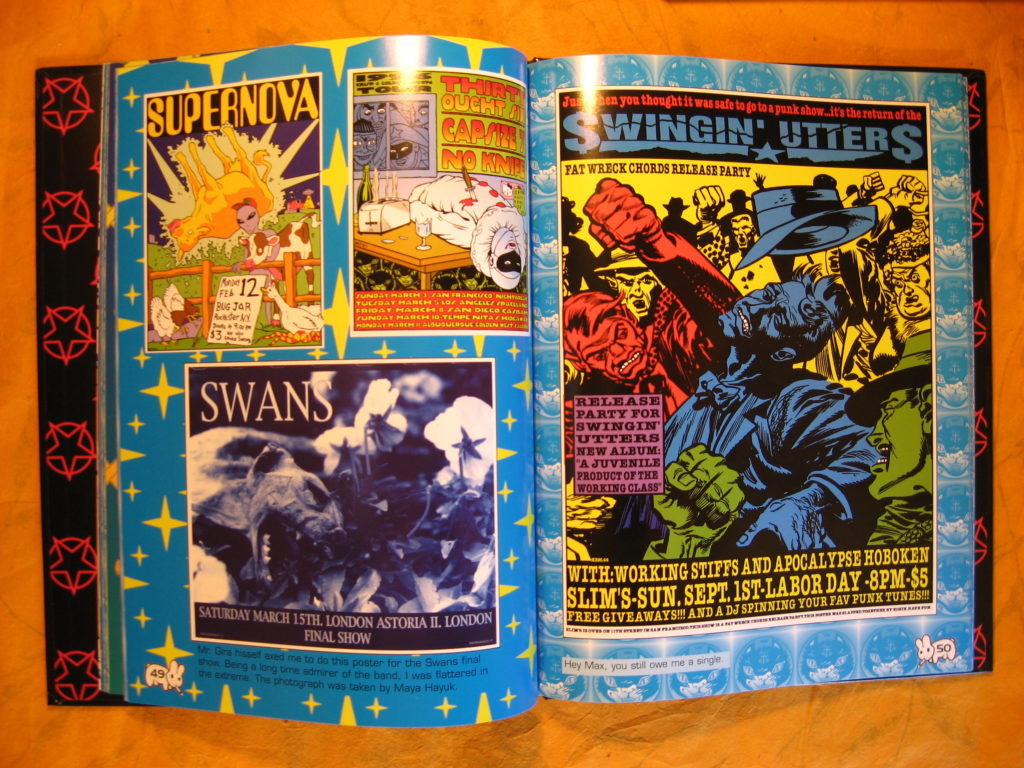
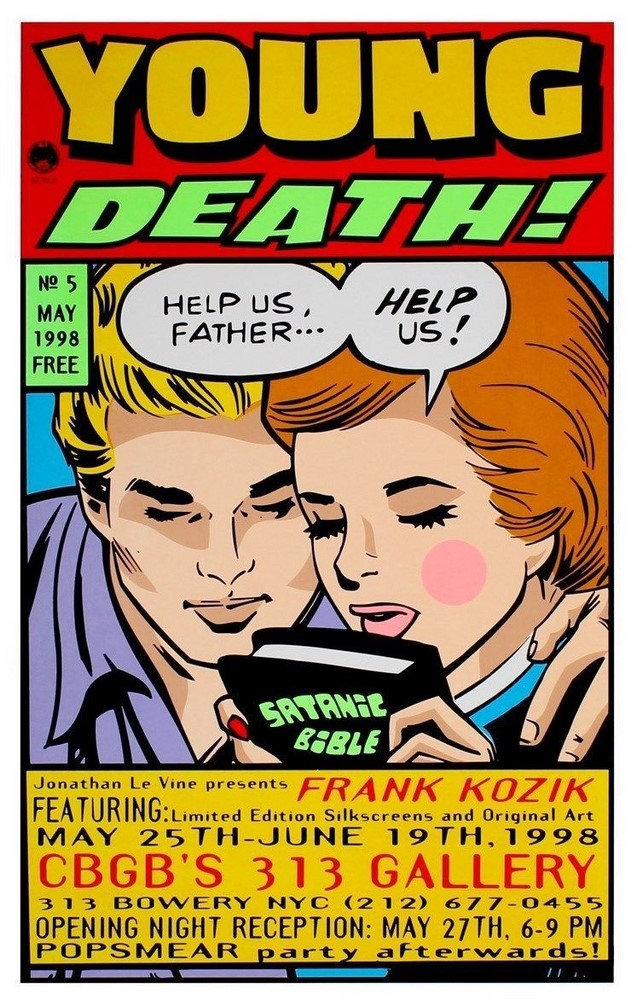
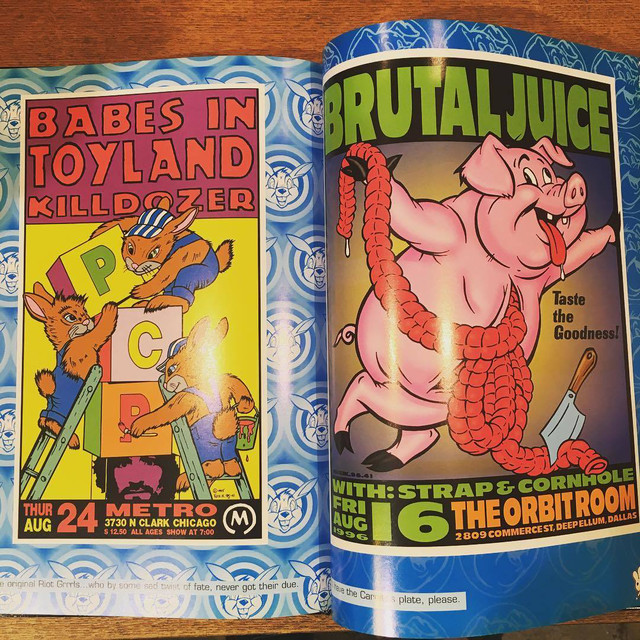
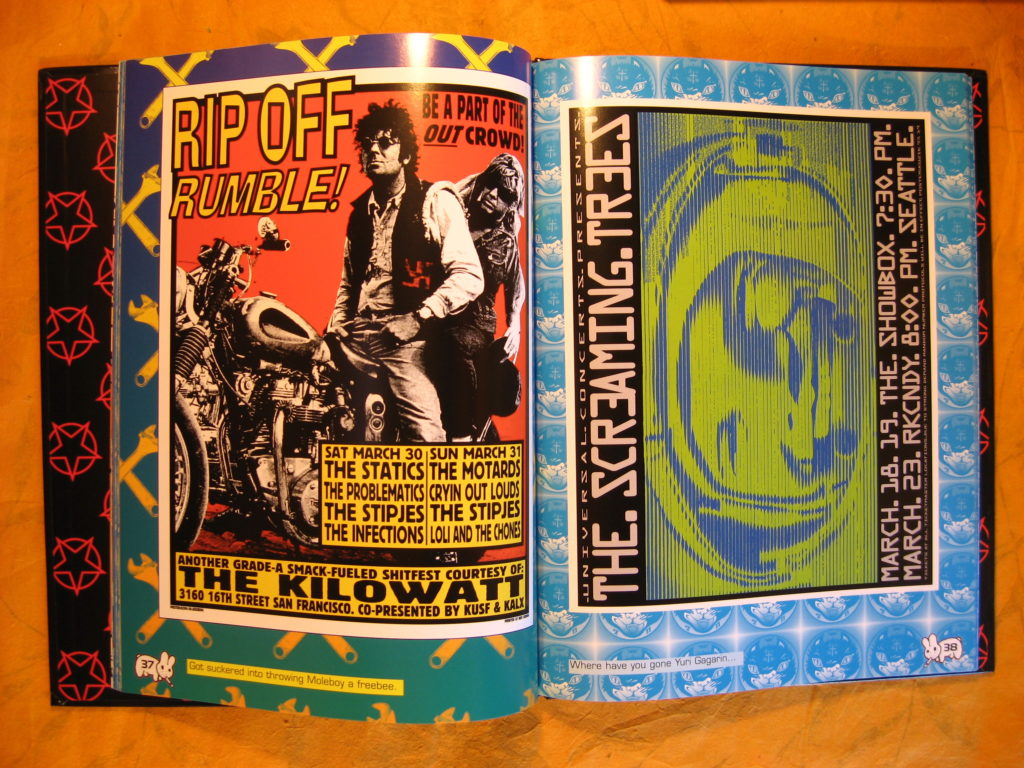
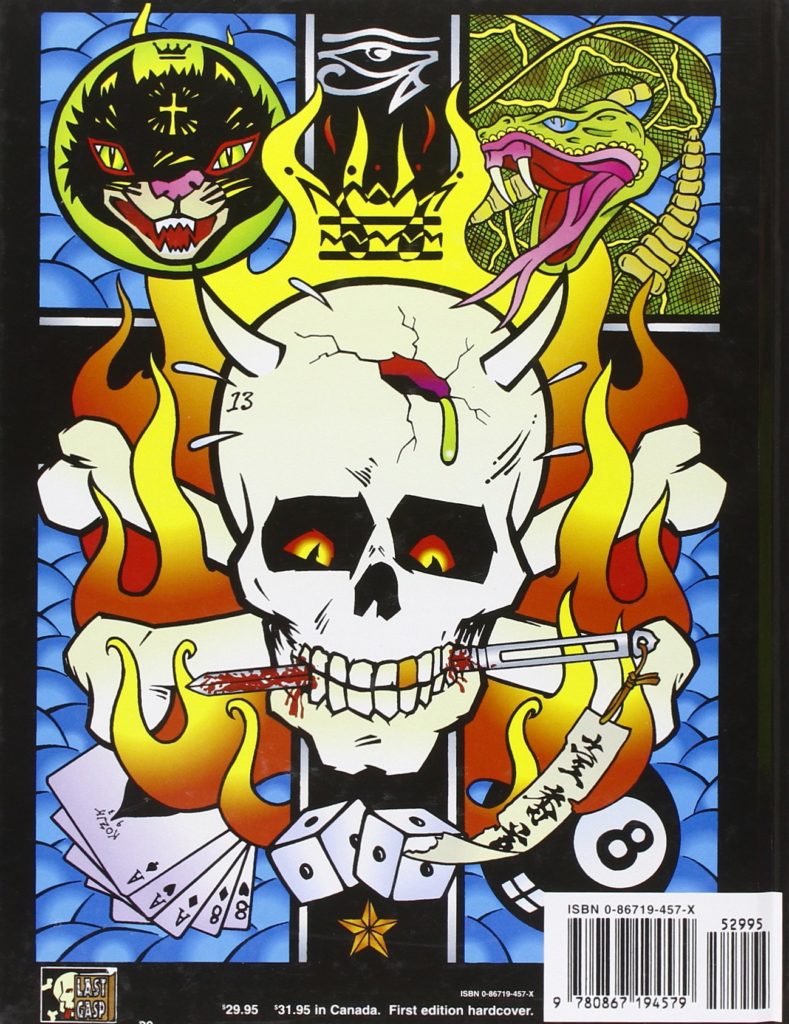
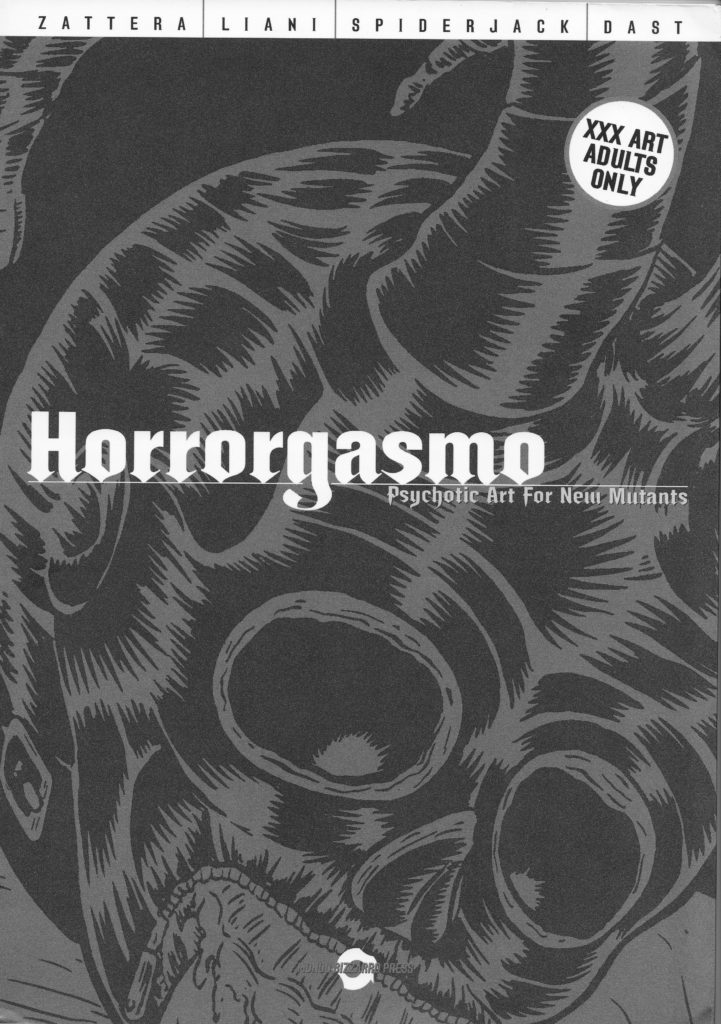
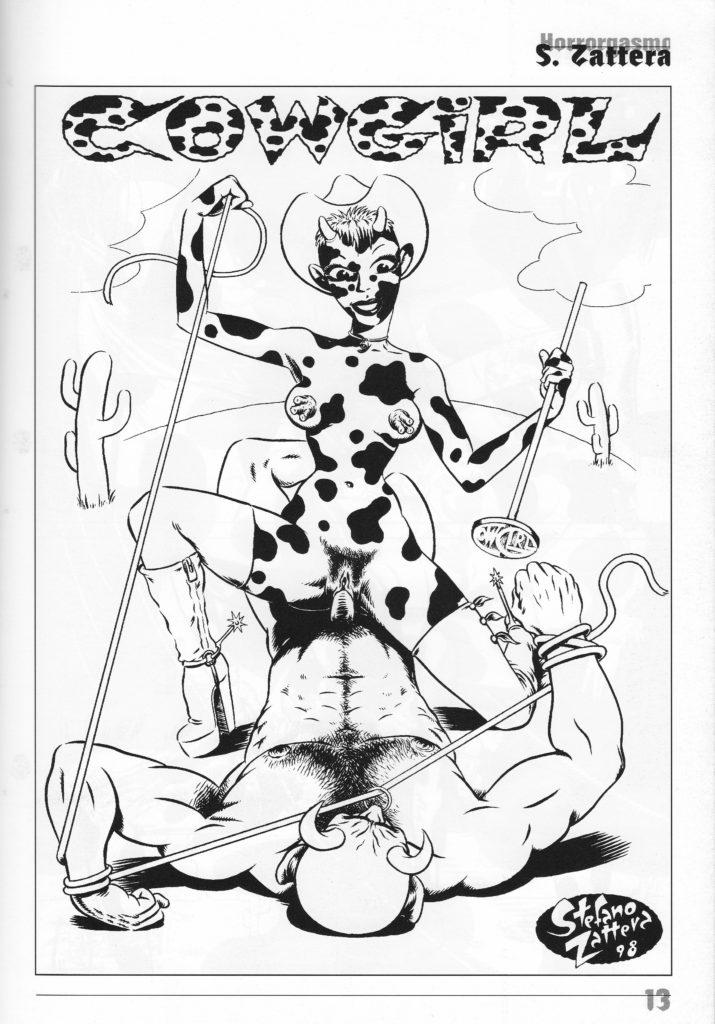
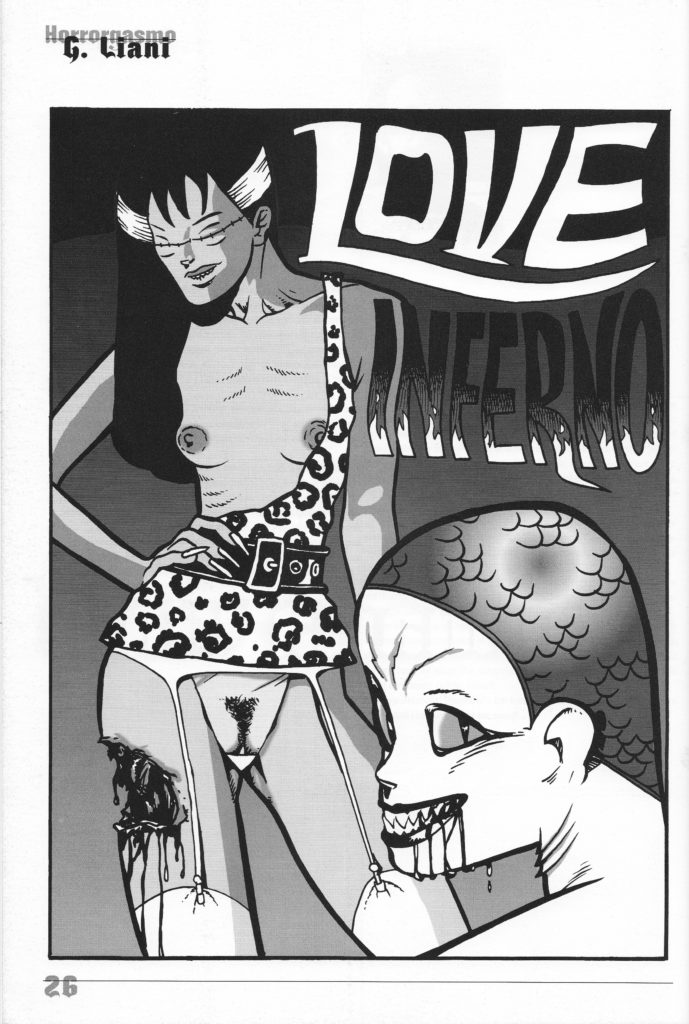
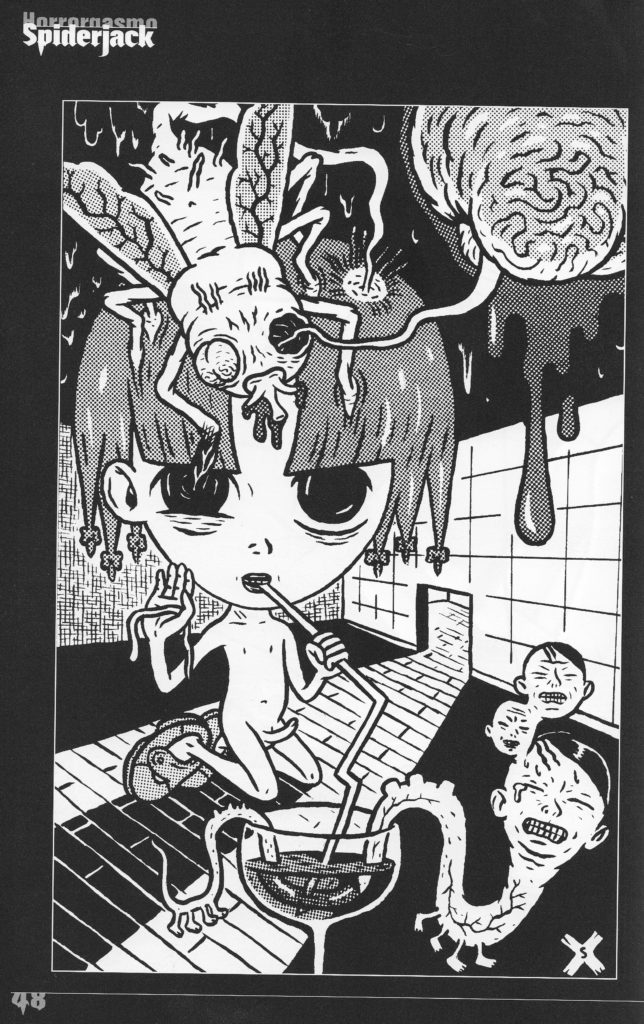
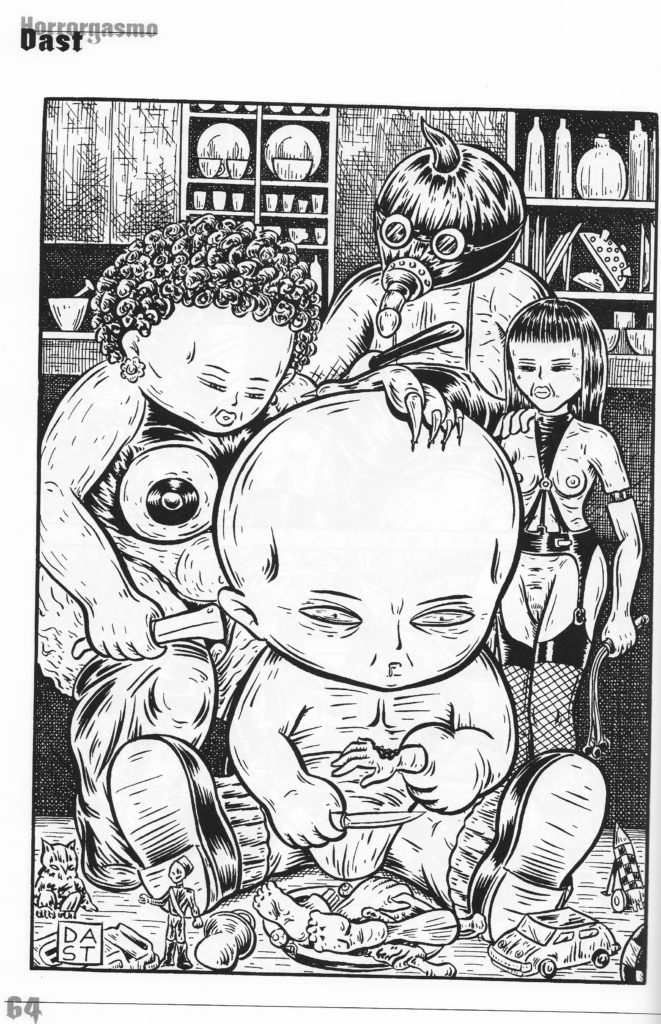
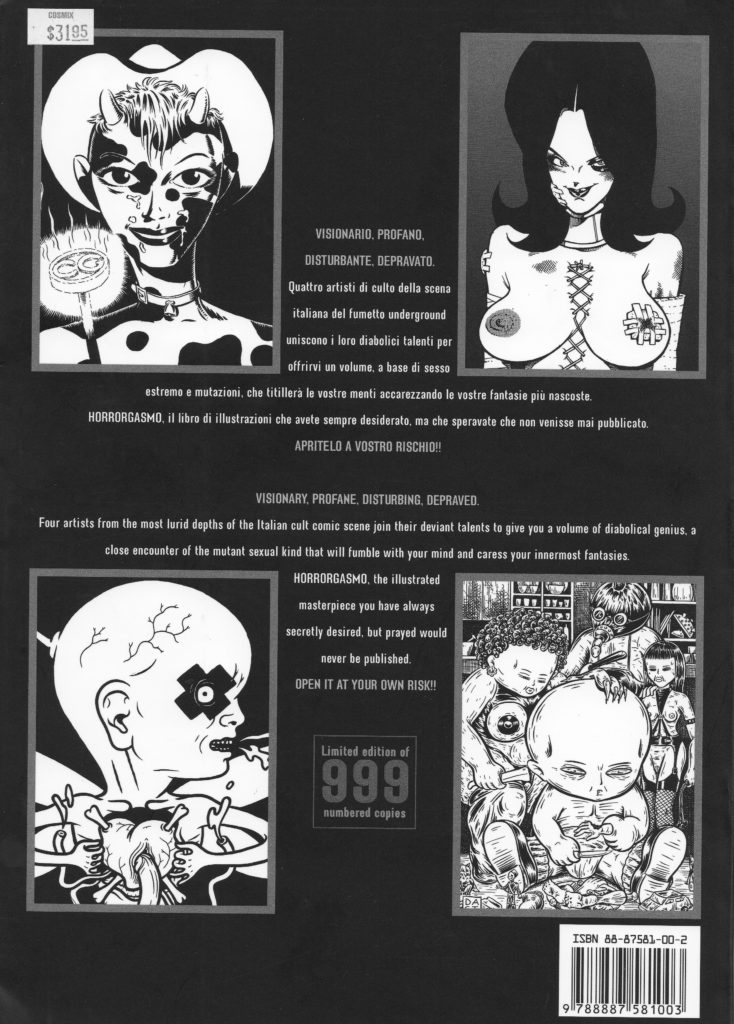
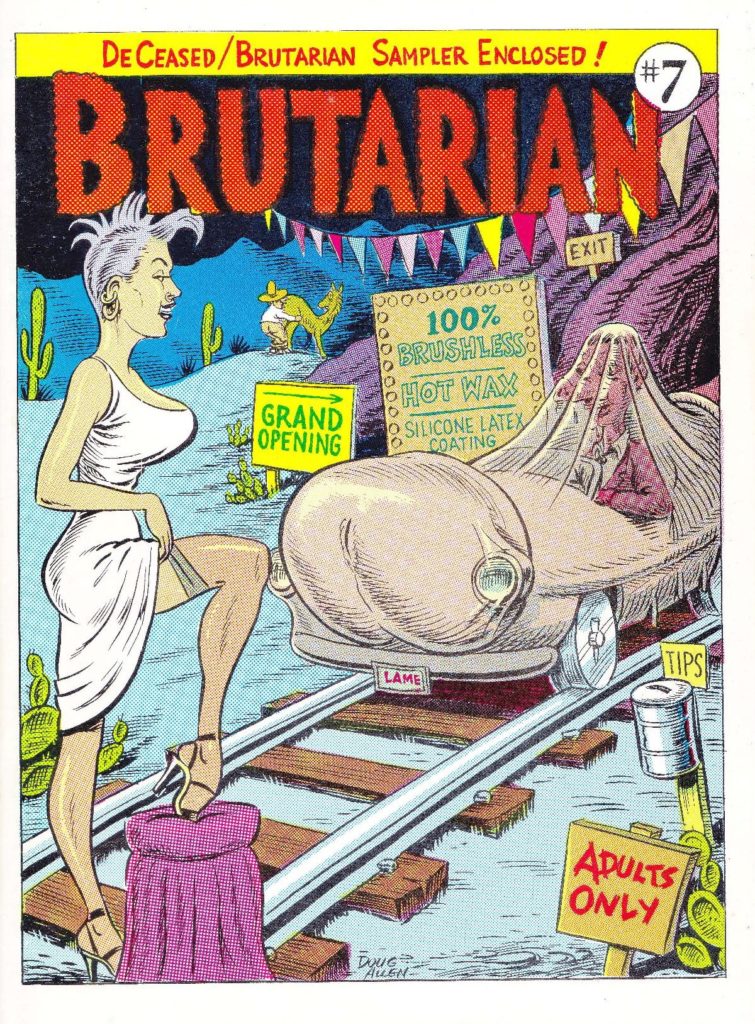
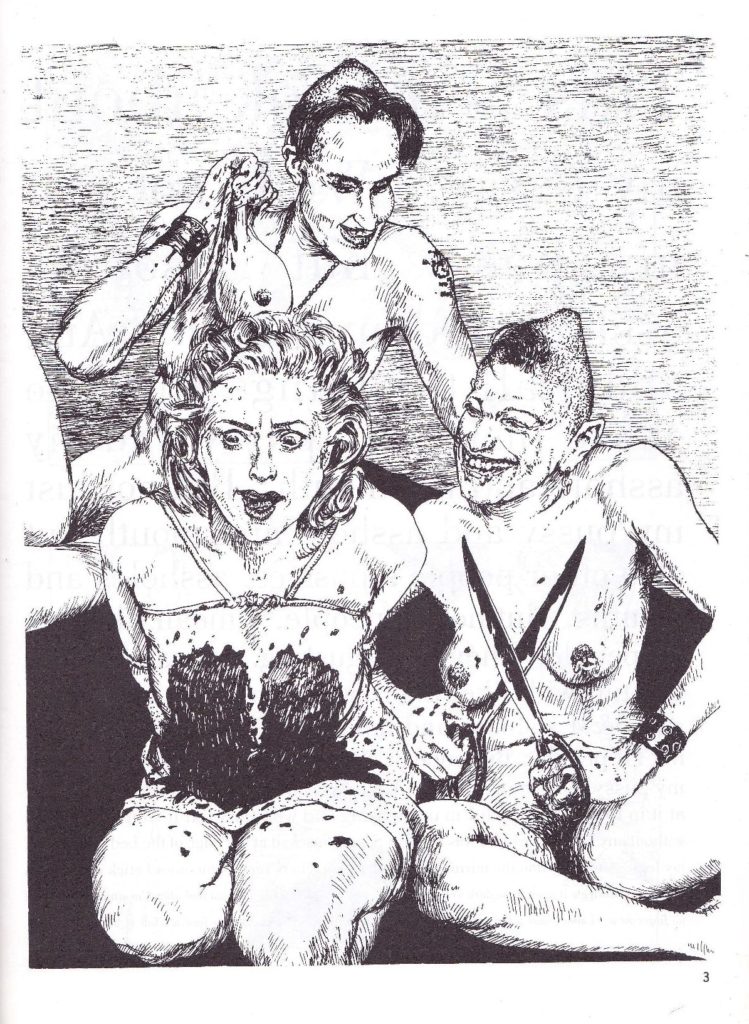
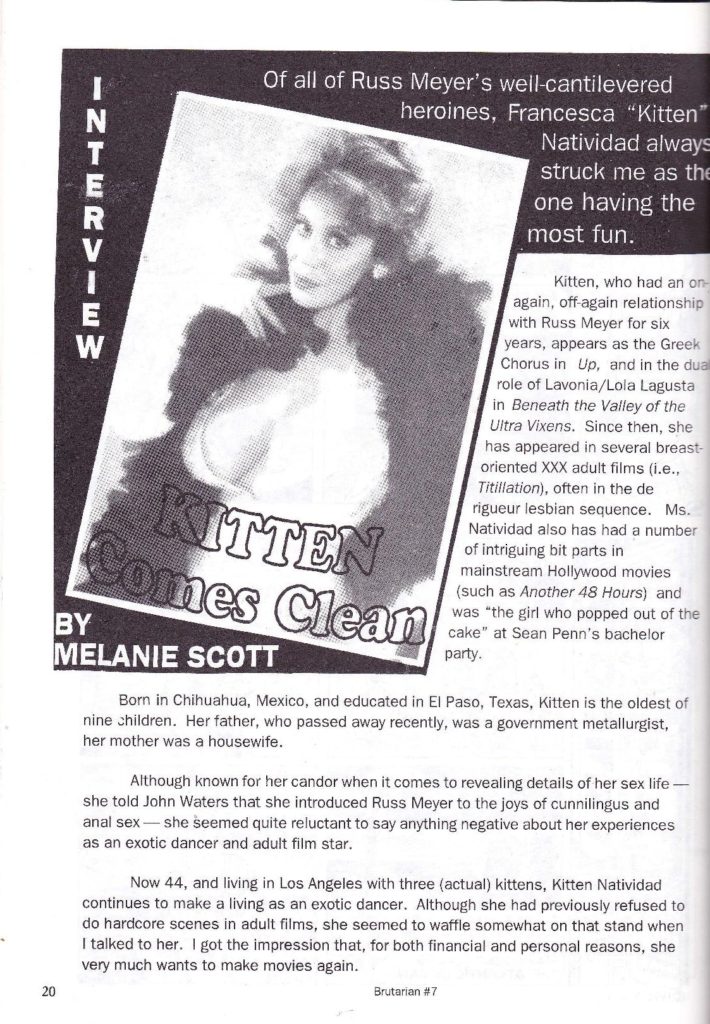 Brian Horrorwitz, who owns the awesome “Trash Palace” web site and sells very hard to find movies and other things and is in the psychobilly band, Ubangis, interviews horror punk band, Sic Kidz. Then we’re on to “Celluloid Void” where the movies of the day are reviewed, this issue came out in 1993 and there is a review on Quentin Tarantino’s “Reservoir Dogs” and the review is actually prophetic, this was before “Pulp Fiction”, and “Brutarian” is prophetic, especially from this end line in the article: “Tarantino does get to you and he makes the whole exercise look effortless. This may not be genius but it certainly is, at the very least, prodigious talent. His pending partnership as screen writer/producer with John Woo promises to kick ass (did they end up doing a movie that I don’t know of?). Here’s hoping Hollywood wises up and starts throwing bagfuls of money at this guy.” Wow did they and depending on what your opinion of Tarantino is, that was good or bad thing.
Brian Horrorwitz, who owns the awesome “Trash Palace” web site and sells very hard to find movies and other things and is in the psychobilly band, Ubangis, interviews horror punk band, Sic Kidz. Then we’re on to “Celluloid Void” where the movies of the day are reviewed, this issue came out in 1993 and there is a review on Quentin Tarantino’s “Reservoir Dogs” and the review is actually prophetic, this was before “Pulp Fiction”, and “Brutarian” is prophetic, especially from this end line in the article: “Tarantino does get to you and he makes the whole exercise look effortless. This may not be genius but it certainly is, at the very least, prodigious talent. His pending partnership as screen writer/producer with John Woo promises to kick ass (did they end up doing a movie that I don’t know of?). Here’s hoping Hollywood wises up and starts throwing bagfuls of money at this guy.” Wow did they and depending on what your opinion of Tarantino is, that was good or bad thing.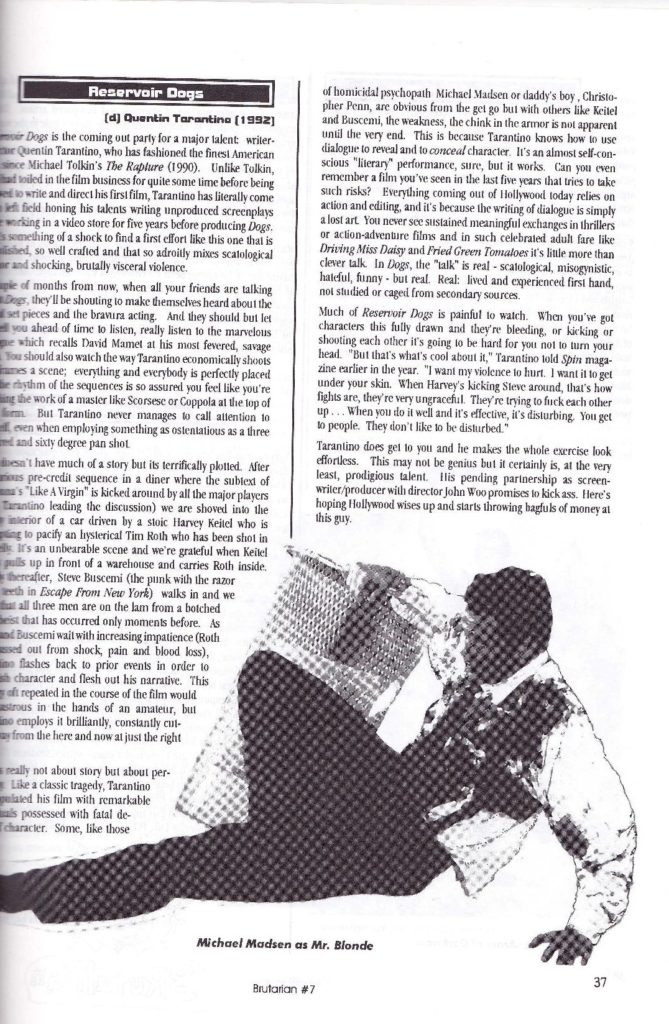
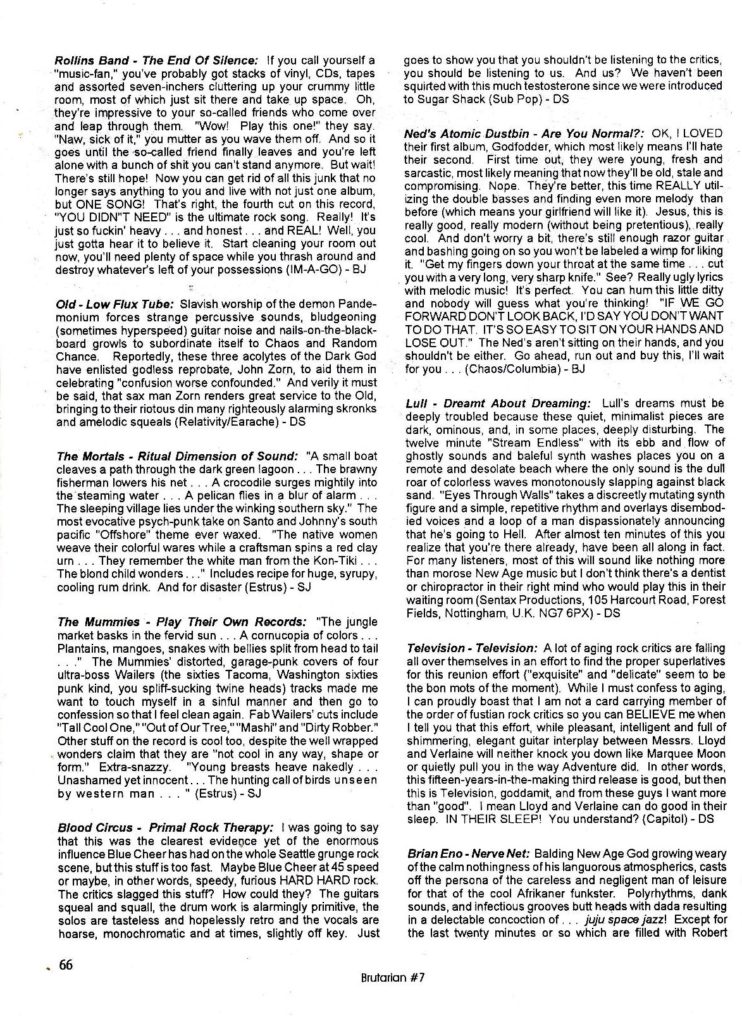
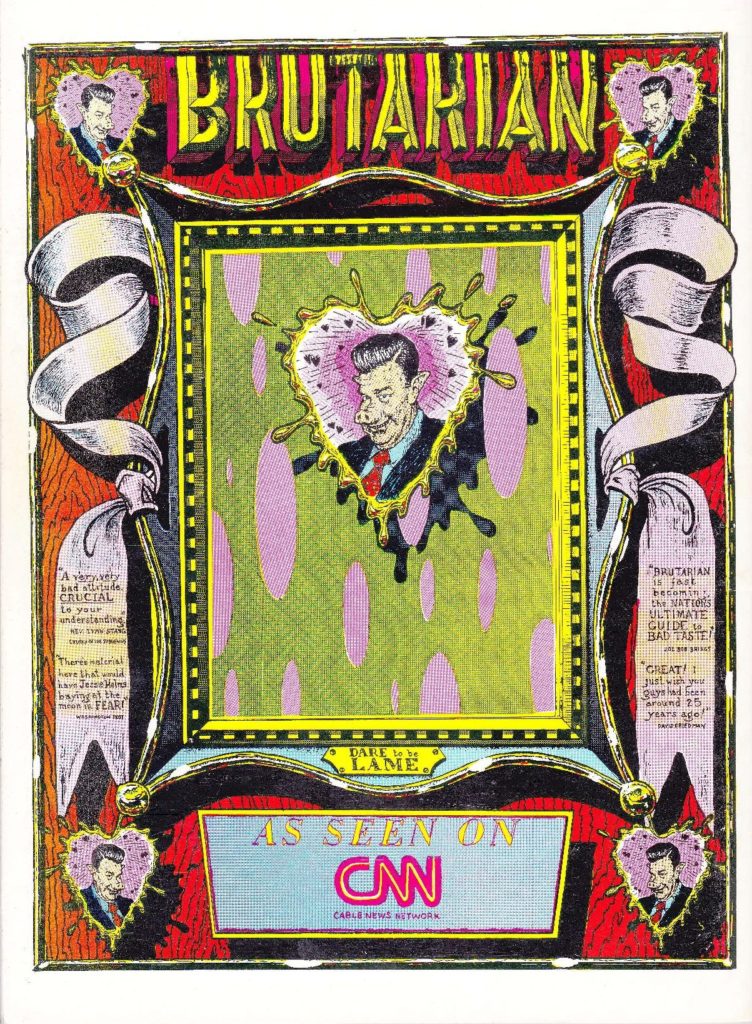
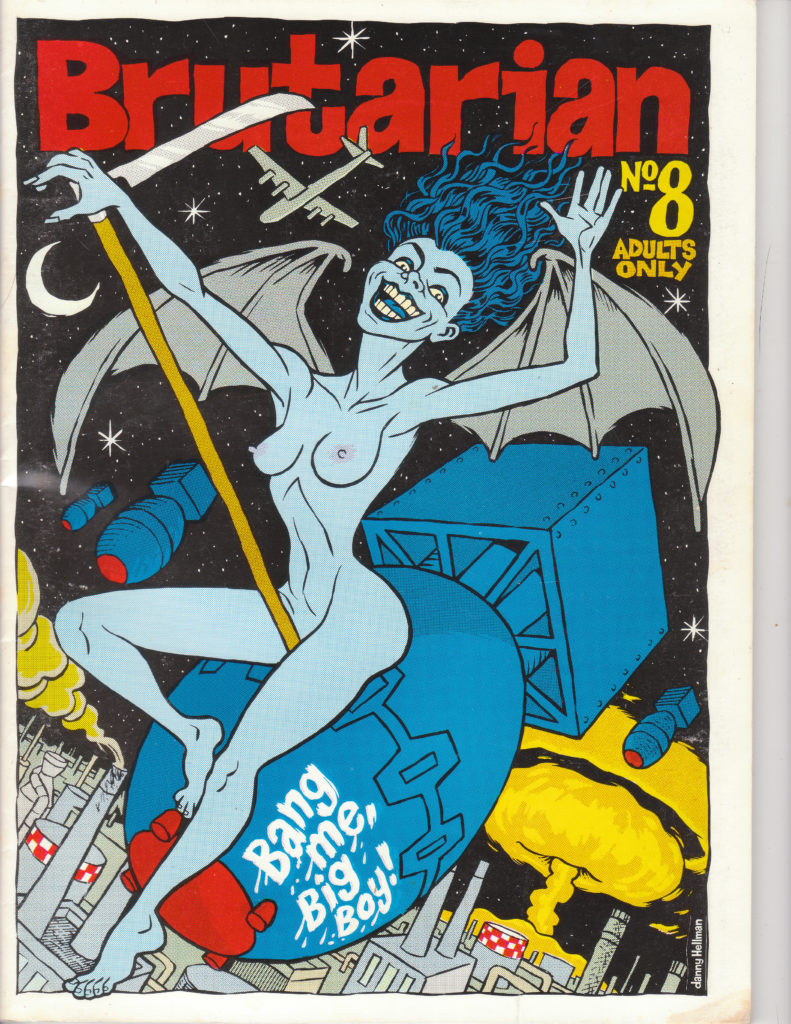
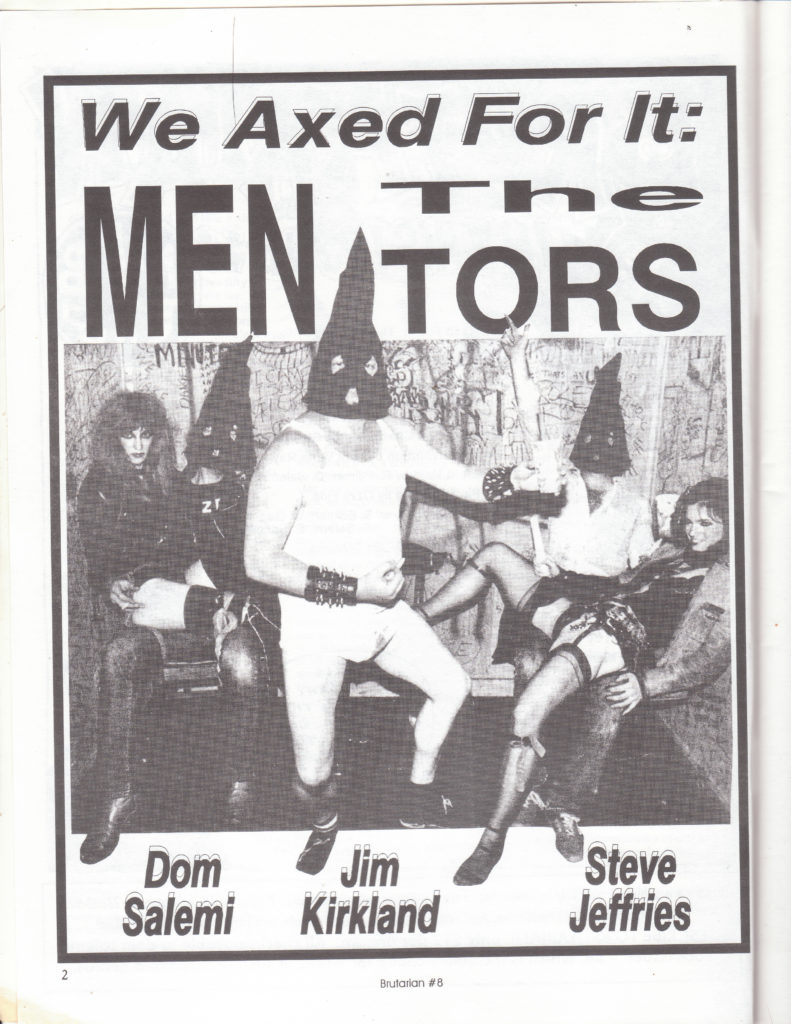
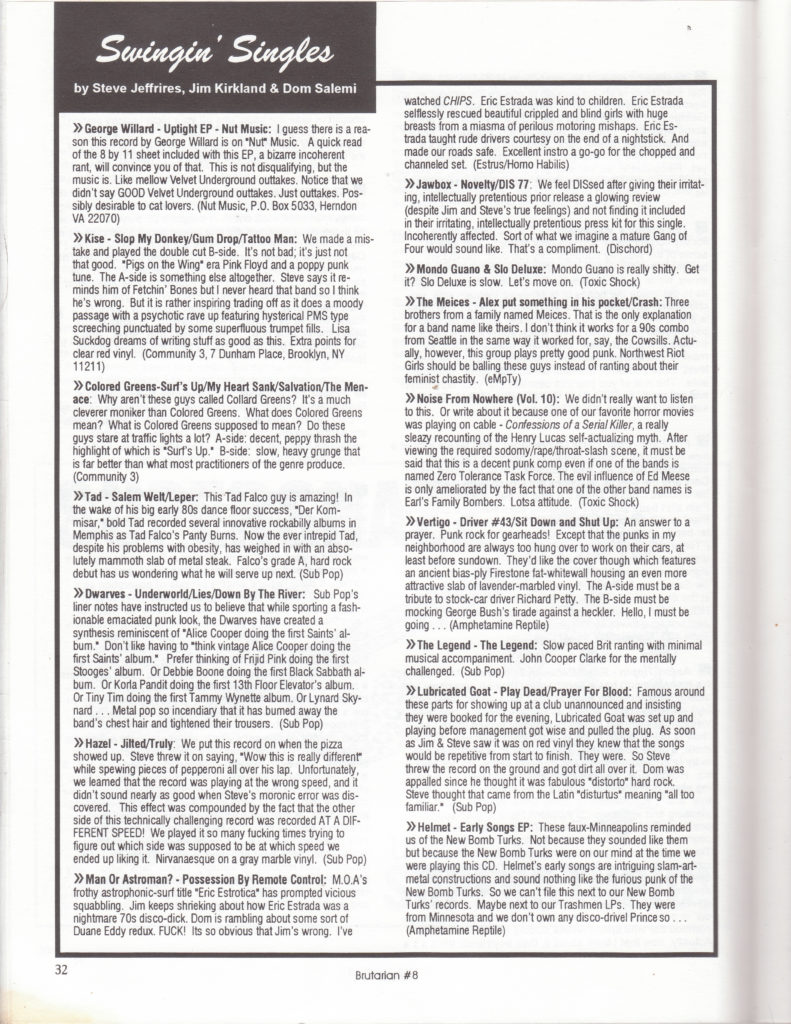 You get an article on the insane genius Joe Meek by Steve Jefferies, Joe did the infamous 1960’s instrumental “Telstar” among other pieces of music, Joe was Schizophrenic and thought he was from a different planet, he also thought his land lady was spying on him he ended up killing her with a stolen shot gun and then himself.
You get an article on the insane genius Joe Meek by Steve Jefferies, Joe did the infamous 1960’s instrumental “Telstar” among other pieces of music, Joe was Schizophrenic and thought he was from a different planet, he also thought his land lady was spying on him he ended up killing her with a stolen shot gun and then himself.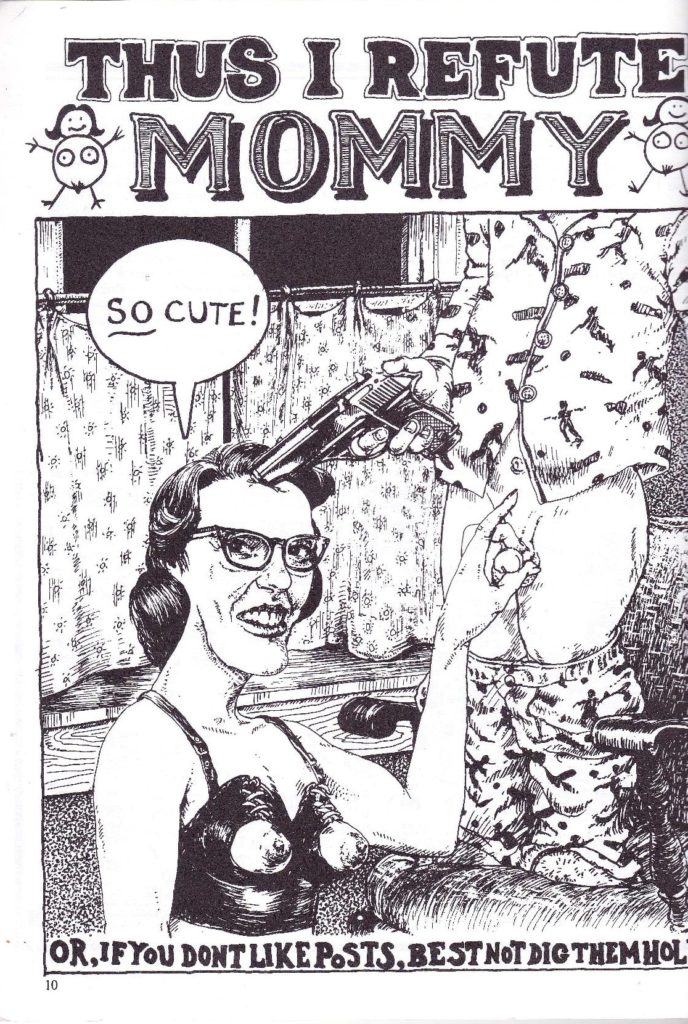
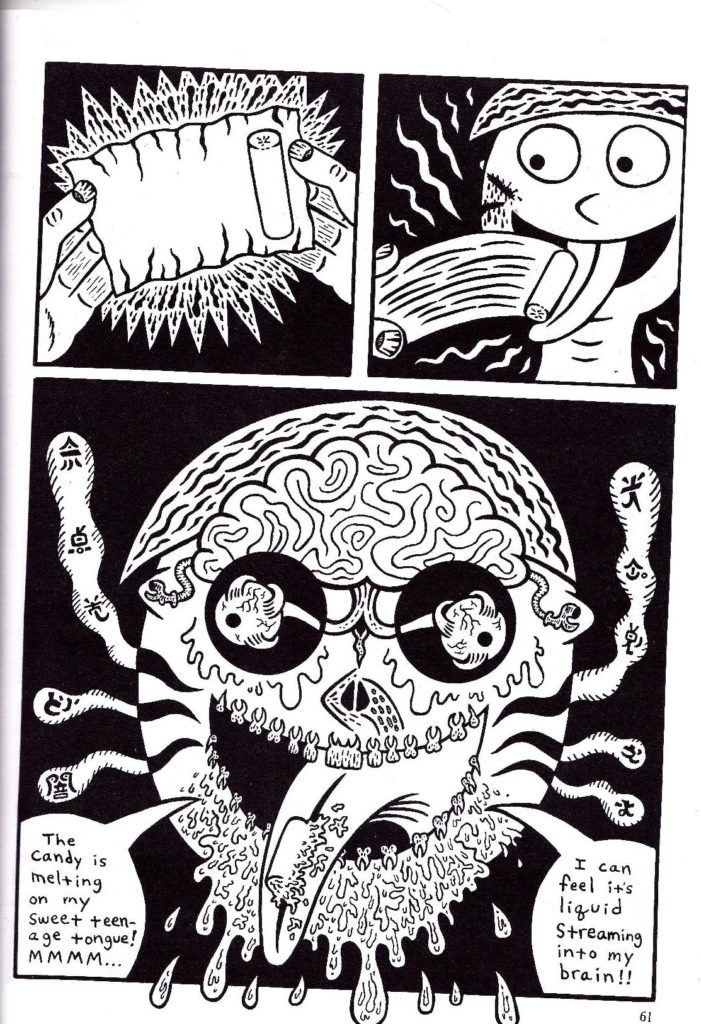
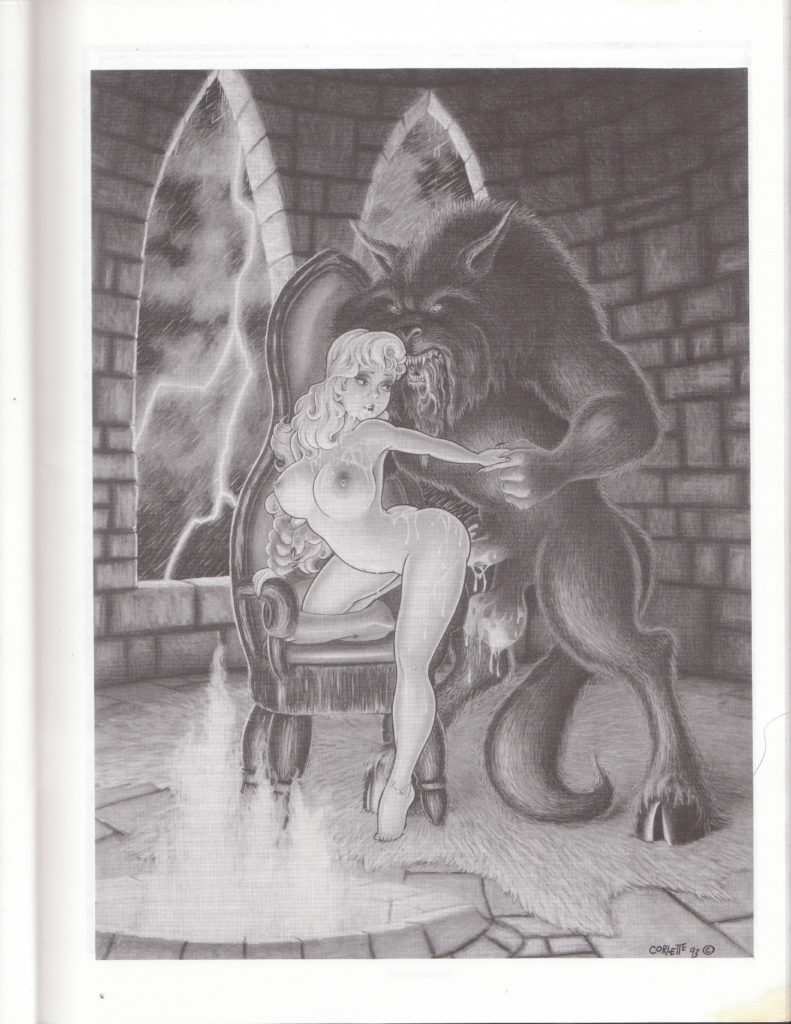
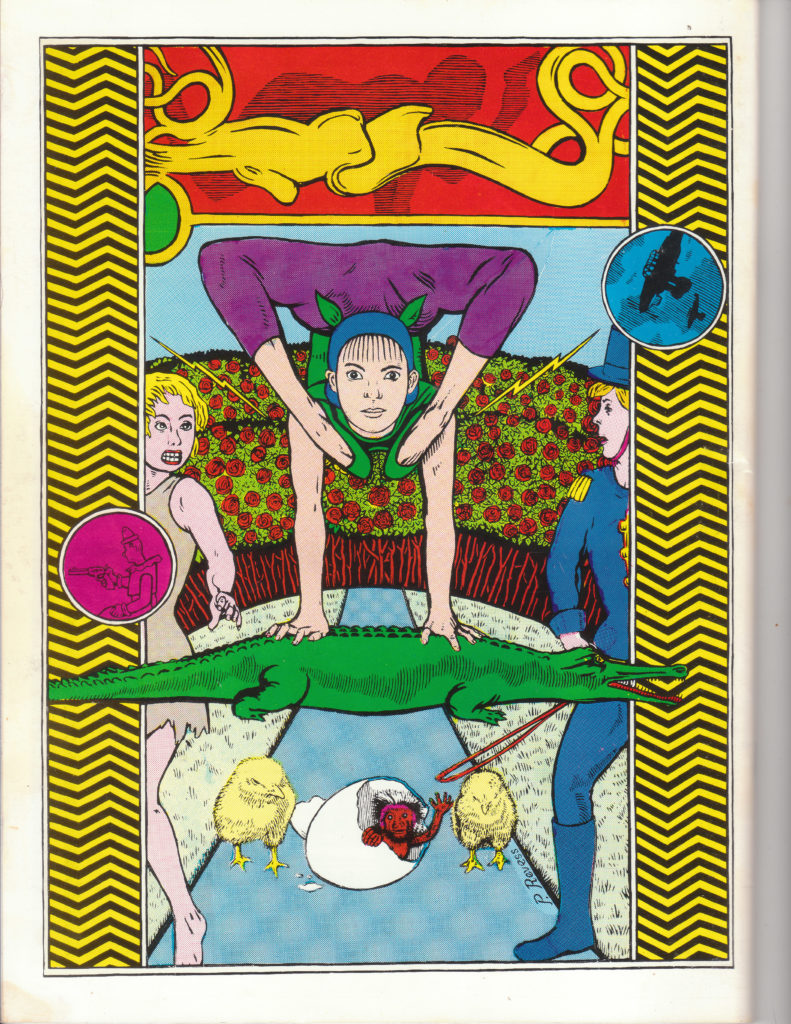
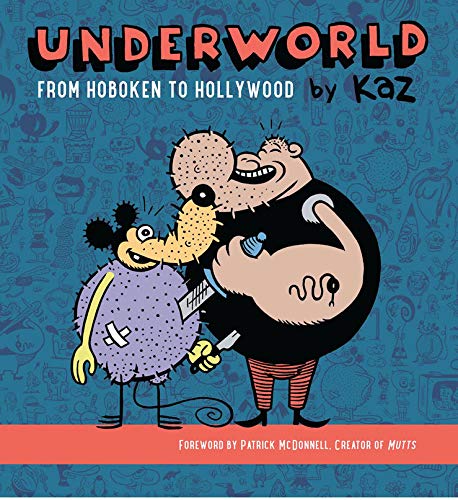
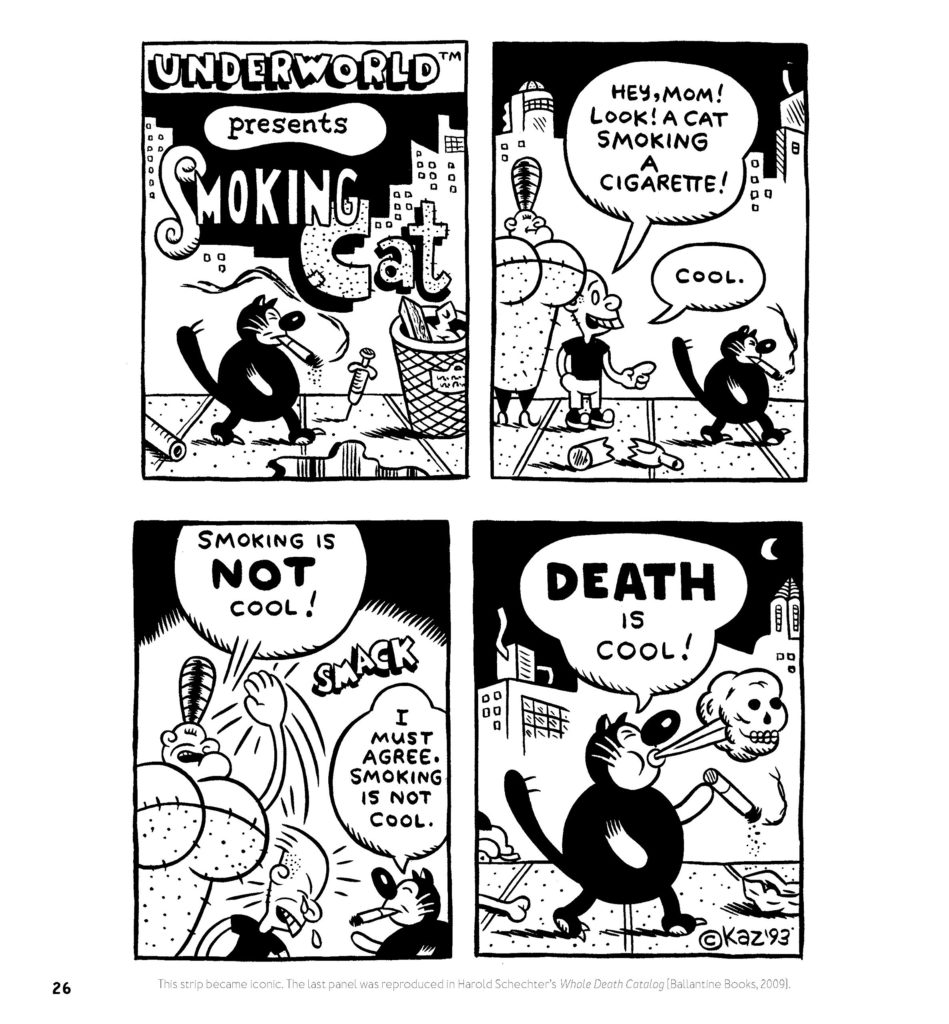
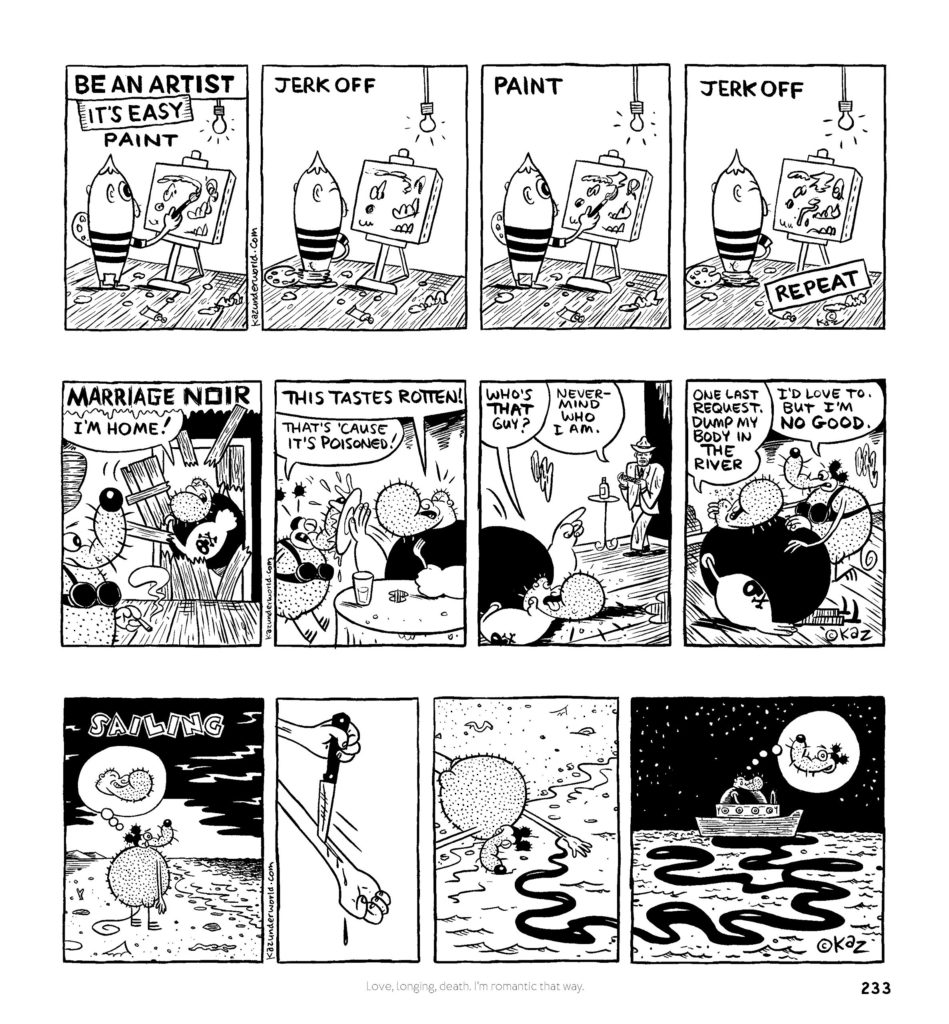
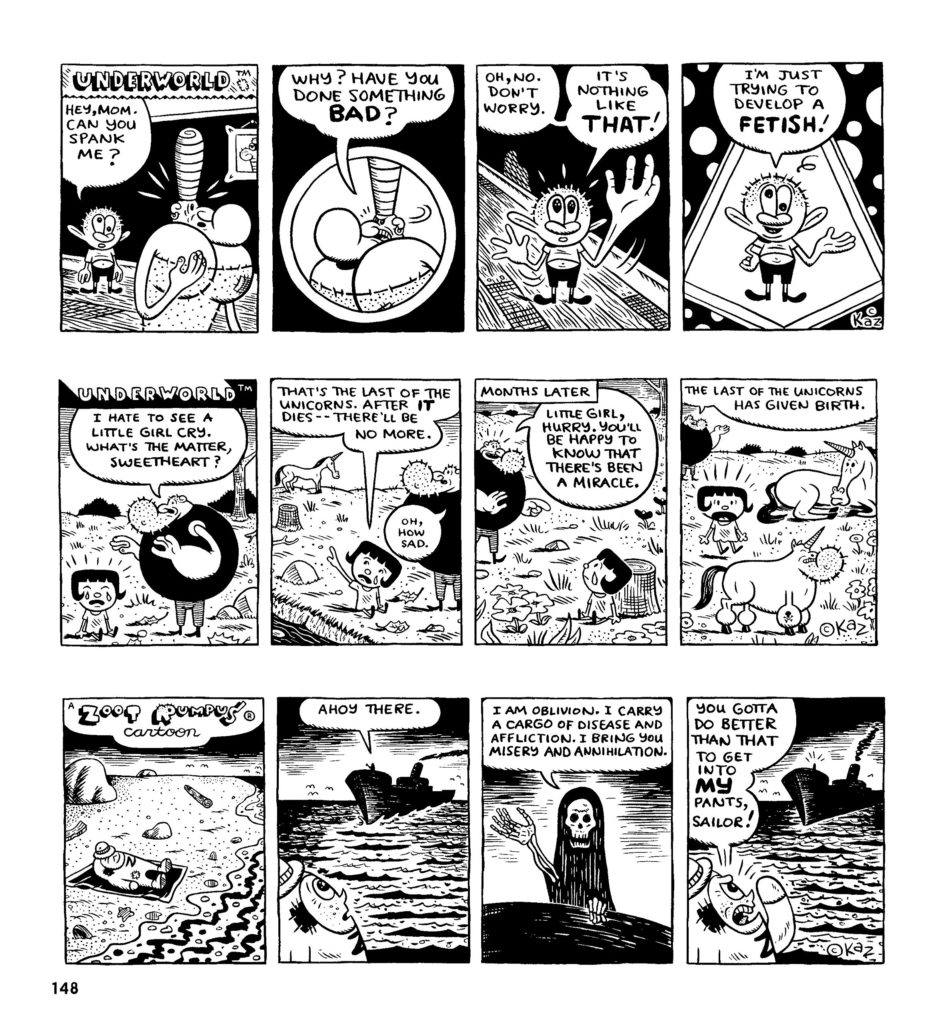
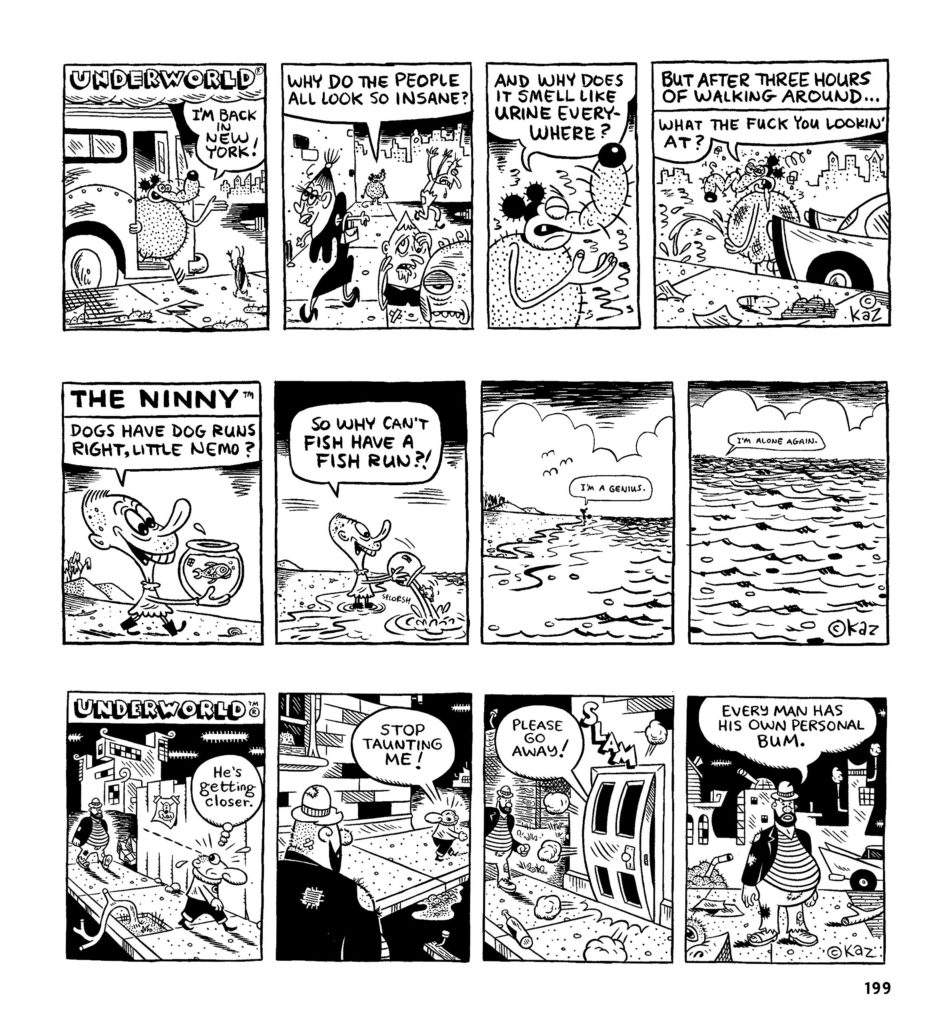 He pretty much said “I took the shapes and cartoon spare parts from comic history and rearranged them and subverted them. If it made me laugh I used it. I actually thought of “Underworld” as an underground comics parody of daily newspaper comics when I started.” He said he gets ideas from listening to people on the street, or reimagining other comic strips he’d read and twisting the humor, he also filters his feelings that day through his comics.
He pretty much said “I took the shapes and cartoon spare parts from comic history and rearranged them and subverted them. If it made me laugh I used it. I actually thought of “Underworld” as an underground comics parody of daily newspaper comics when I started.” He said he gets ideas from listening to people on the street, or reimagining other comic strips he’d read and twisting the humor, he also filters his feelings that day through his comics.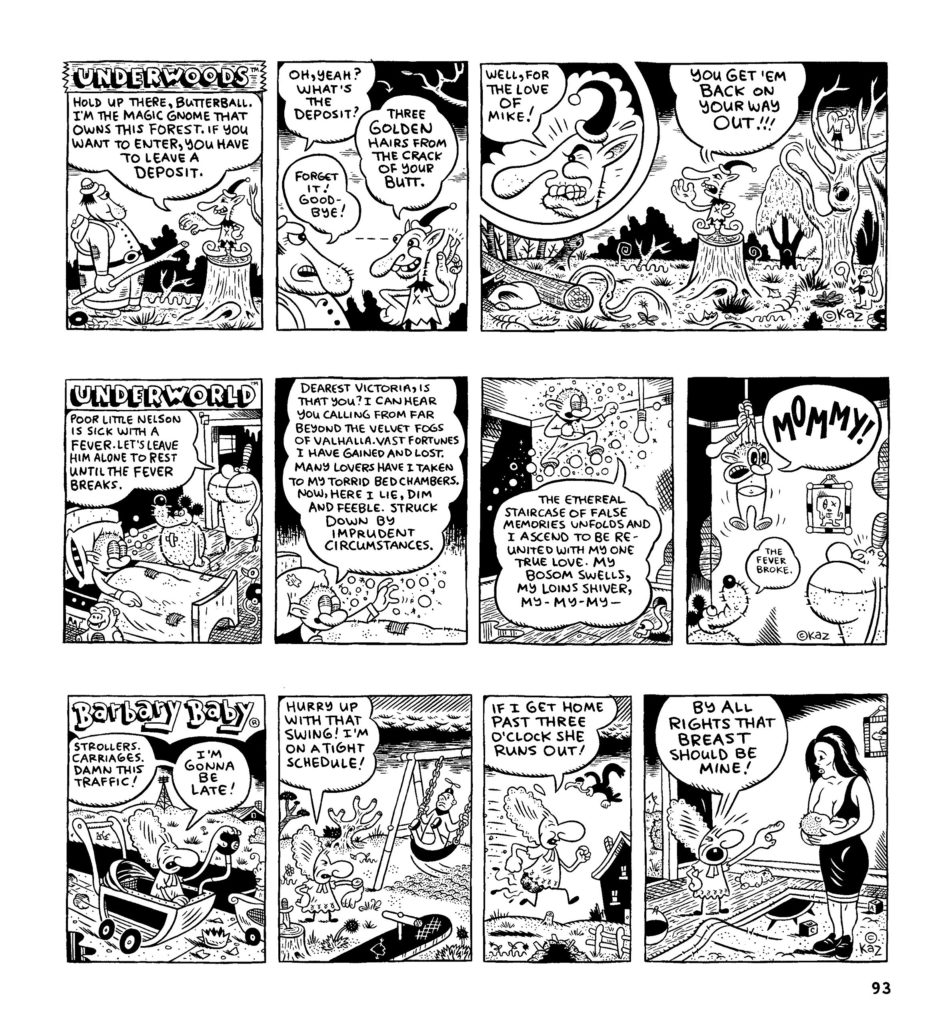 Kaz says “Underworld” is his escape and he feels like a kid again when he works on it. The strip appears in various alternative weeklies across the country, well, the ones that still print at least. Kaz has gone onto work as a writer for “SpongeBob SquarePants” (you can see Kaz’ absurdist humor in a lot of the episodes he wrote) and Disney’s “Phineas and Ferb”, Kaz actually got an Emmy nomination for an episode he wrote. “Underworld” is a strip that will either give you a chuckle or make you laugh so hard you shit your pants and you’ll want to go back and read the strip and show it to your friends. Some ideas work and some don’t, but one thing you’ll get is something different, absurd and weird in Kaz’s world than what you’d get in normal comic strips. There is some one off characters but the reoccurring ones are Snuff (a Popeye look alike) and Creep Rat (a twisted Mickey Mouse) two low rent crooks who are constantly getting into trouble, Nuzzle the Junkie always looking for a hit, Smoking Cat, Petit Mort, Newton the big man with the small head, Zoot Rumpus and Bunky the Weird Man Baby. Fantagraphics released this bad boy in hardcover it features the best of 23 years of the weekly comic, there is a few pages in color and its mostly in black and white. Another feature that pops up is “Kaz’s Girls”, a strip of different girls with, shall we say, “unique” qualities and features, “Kaz’s Sketchbook” a one panel strip of drawings from, what else, his sketchbook and “Lists” where Nuzzle just lists a bunch of weird and random shit in each panel. “Underworld” is a must have for anybody who loves twisted, different and weird comics.
Kaz says “Underworld” is his escape and he feels like a kid again when he works on it. The strip appears in various alternative weeklies across the country, well, the ones that still print at least. Kaz has gone onto work as a writer for “SpongeBob SquarePants” (you can see Kaz’ absurdist humor in a lot of the episodes he wrote) and Disney’s “Phineas and Ferb”, Kaz actually got an Emmy nomination for an episode he wrote. “Underworld” is a strip that will either give you a chuckle or make you laugh so hard you shit your pants and you’ll want to go back and read the strip and show it to your friends. Some ideas work and some don’t, but one thing you’ll get is something different, absurd and weird in Kaz’s world than what you’d get in normal comic strips. There is some one off characters but the reoccurring ones are Snuff (a Popeye look alike) and Creep Rat (a twisted Mickey Mouse) two low rent crooks who are constantly getting into trouble, Nuzzle the Junkie always looking for a hit, Smoking Cat, Petit Mort, Newton the big man with the small head, Zoot Rumpus and Bunky the Weird Man Baby. Fantagraphics released this bad boy in hardcover it features the best of 23 years of the weekly comic, there is a few pages in color and its mostly in black and white. Another feature that pops up is “Kaz’s Girls”, a strip of different girls with, shall we say, “unique” qualities and features, “Kaz’s Sketchbook” a one panel strip of drawings from, what else, his sketchbook and “Lists” where Nuzzle just lists a bunch of weird and random shit in each panel. “Underworld” is a must have for anybody who loves twisted, different and weird comics.